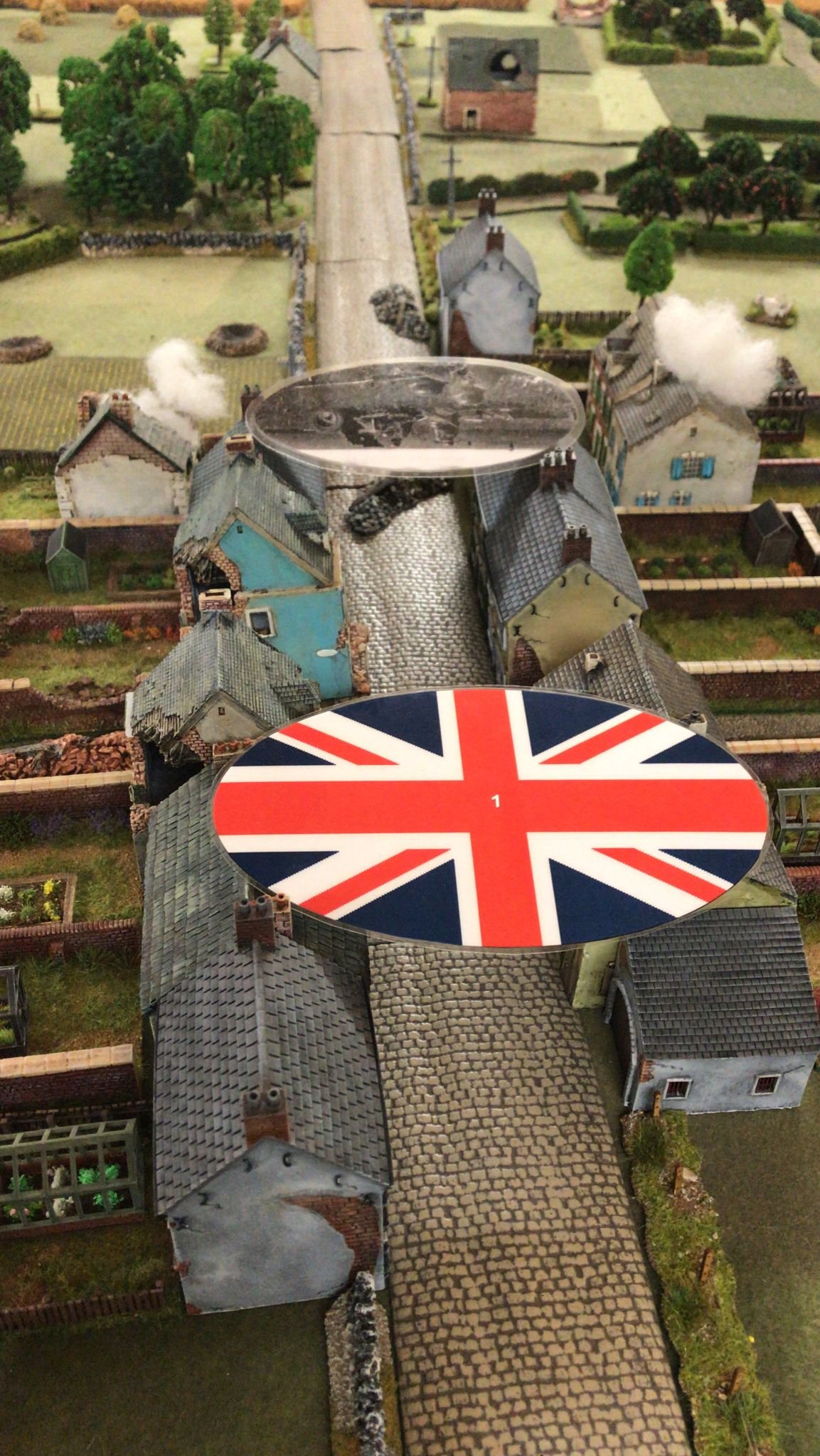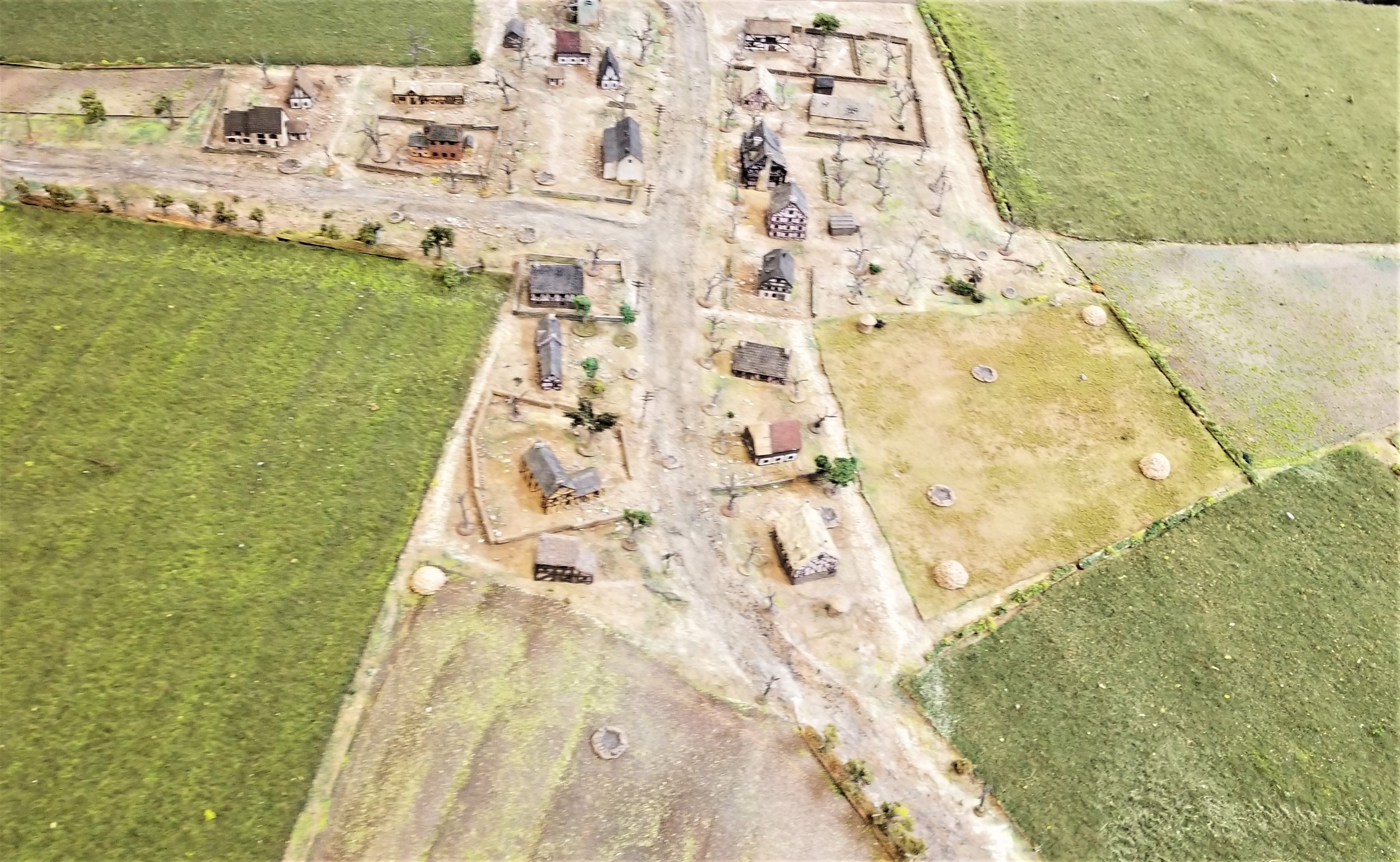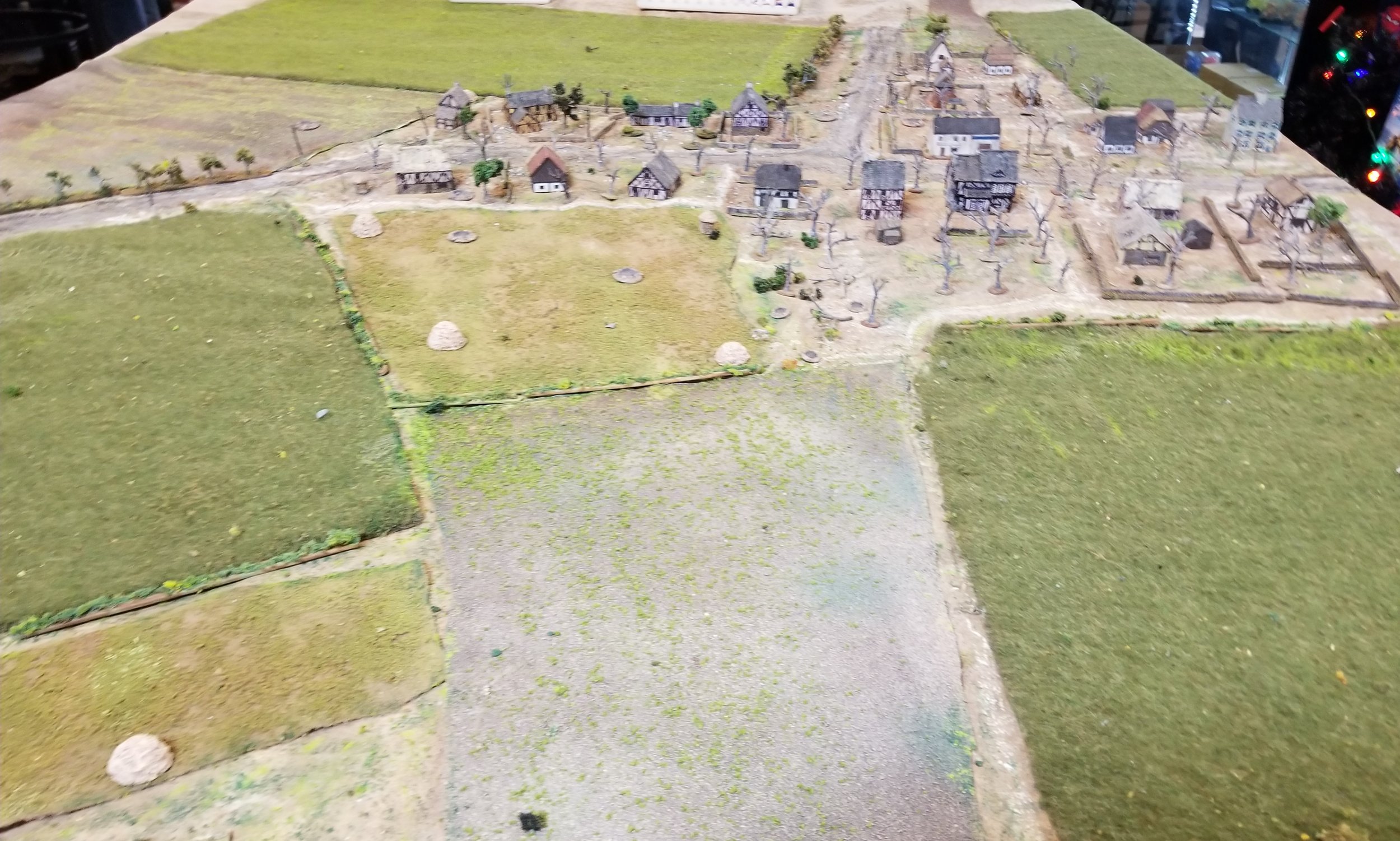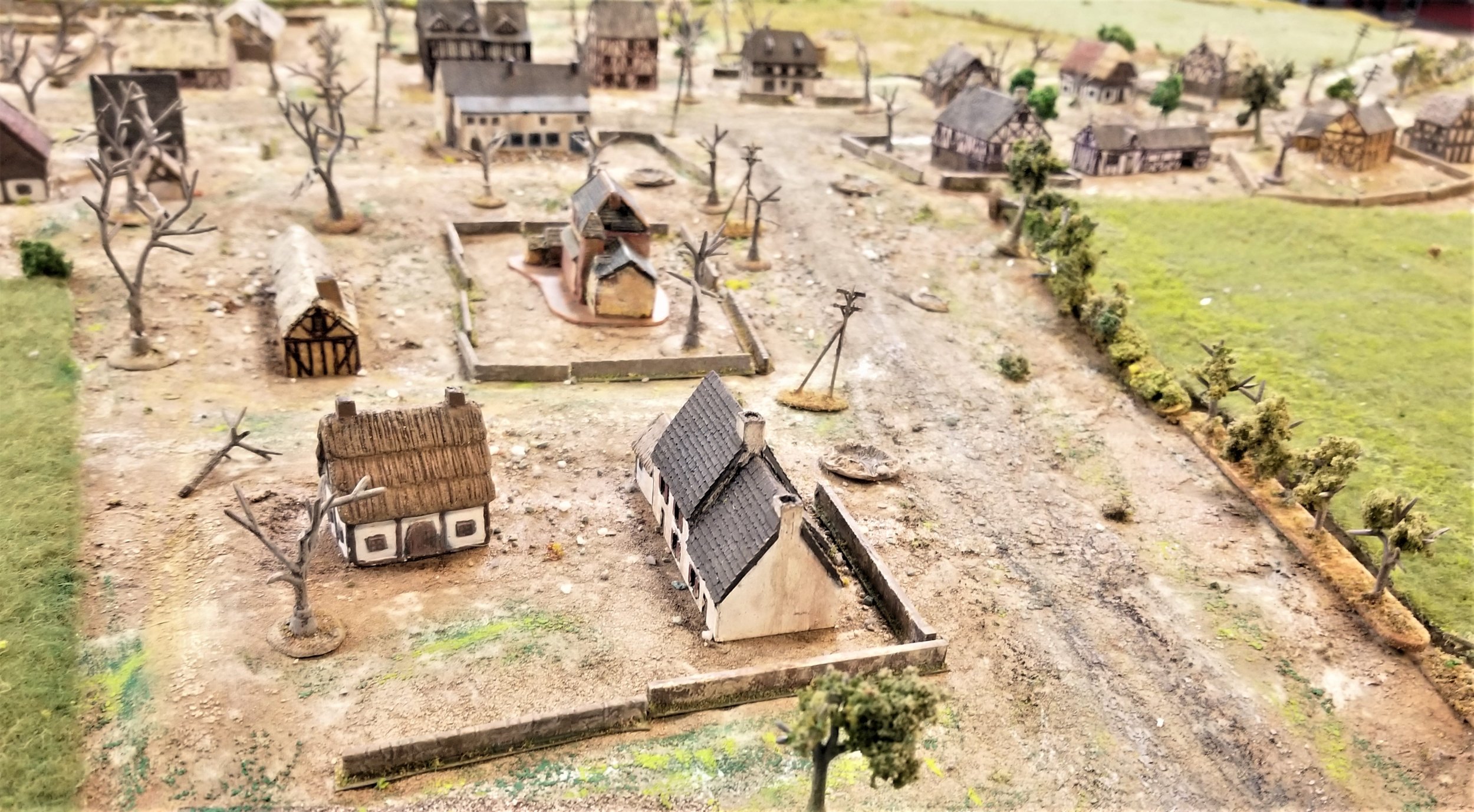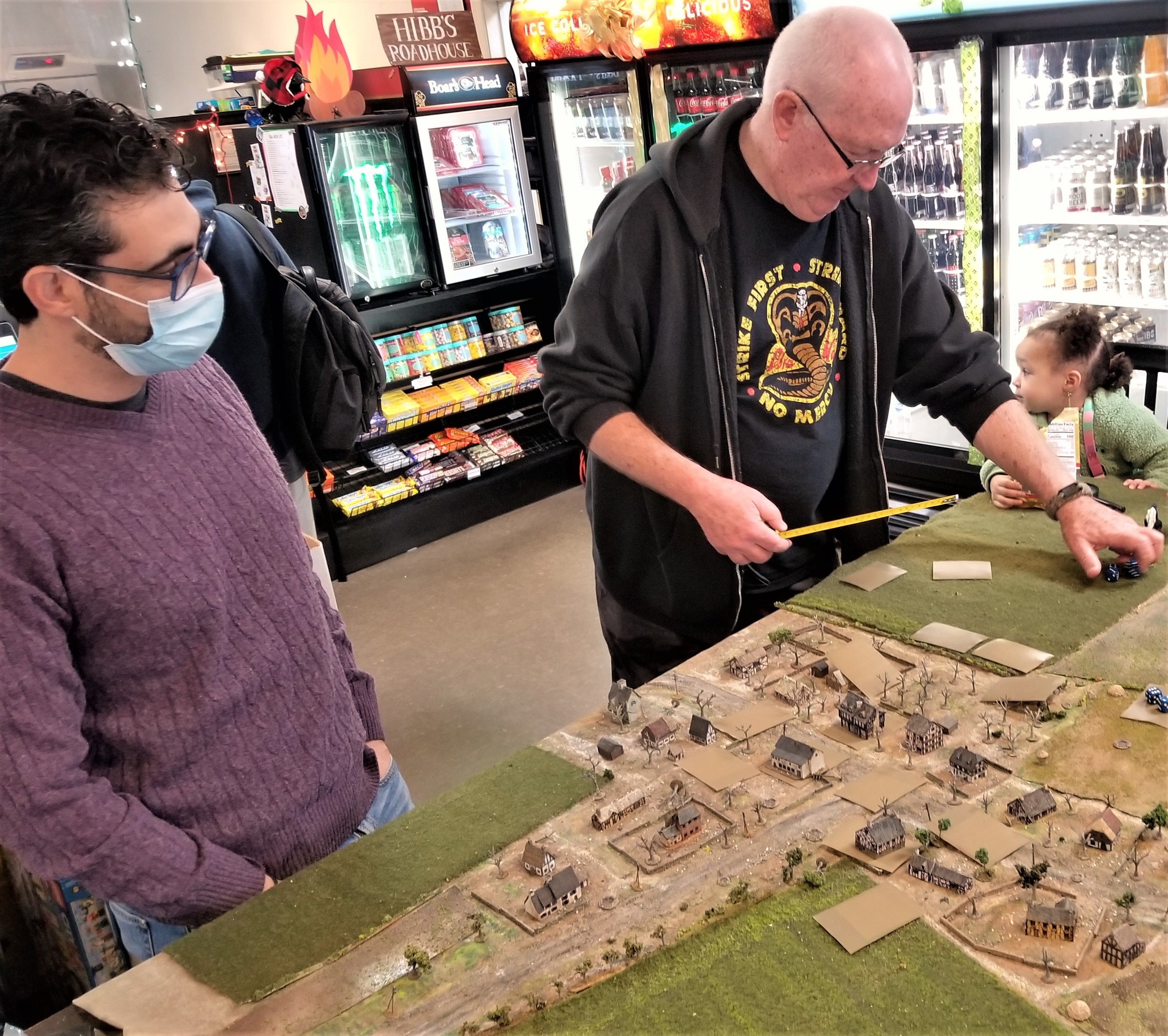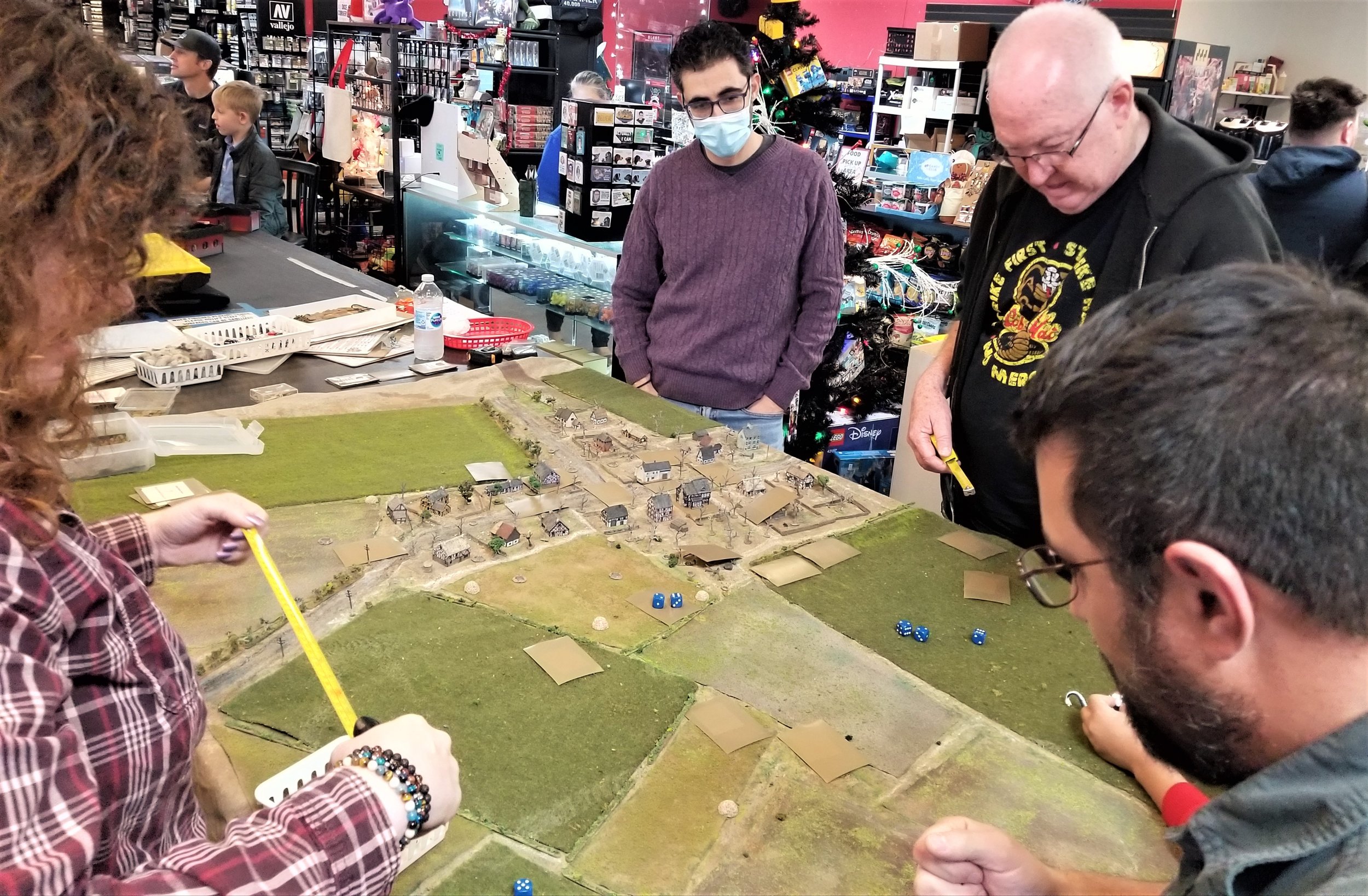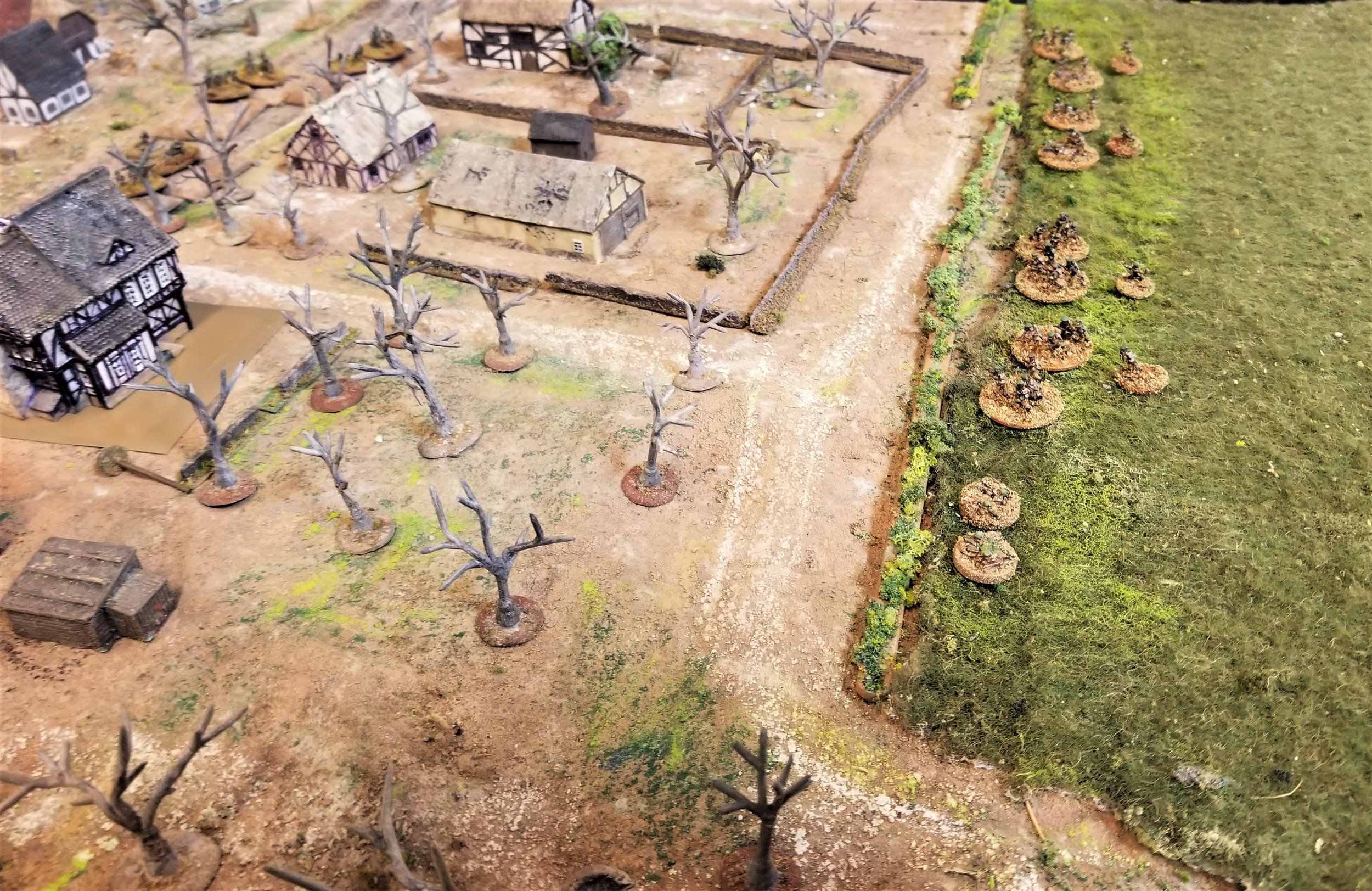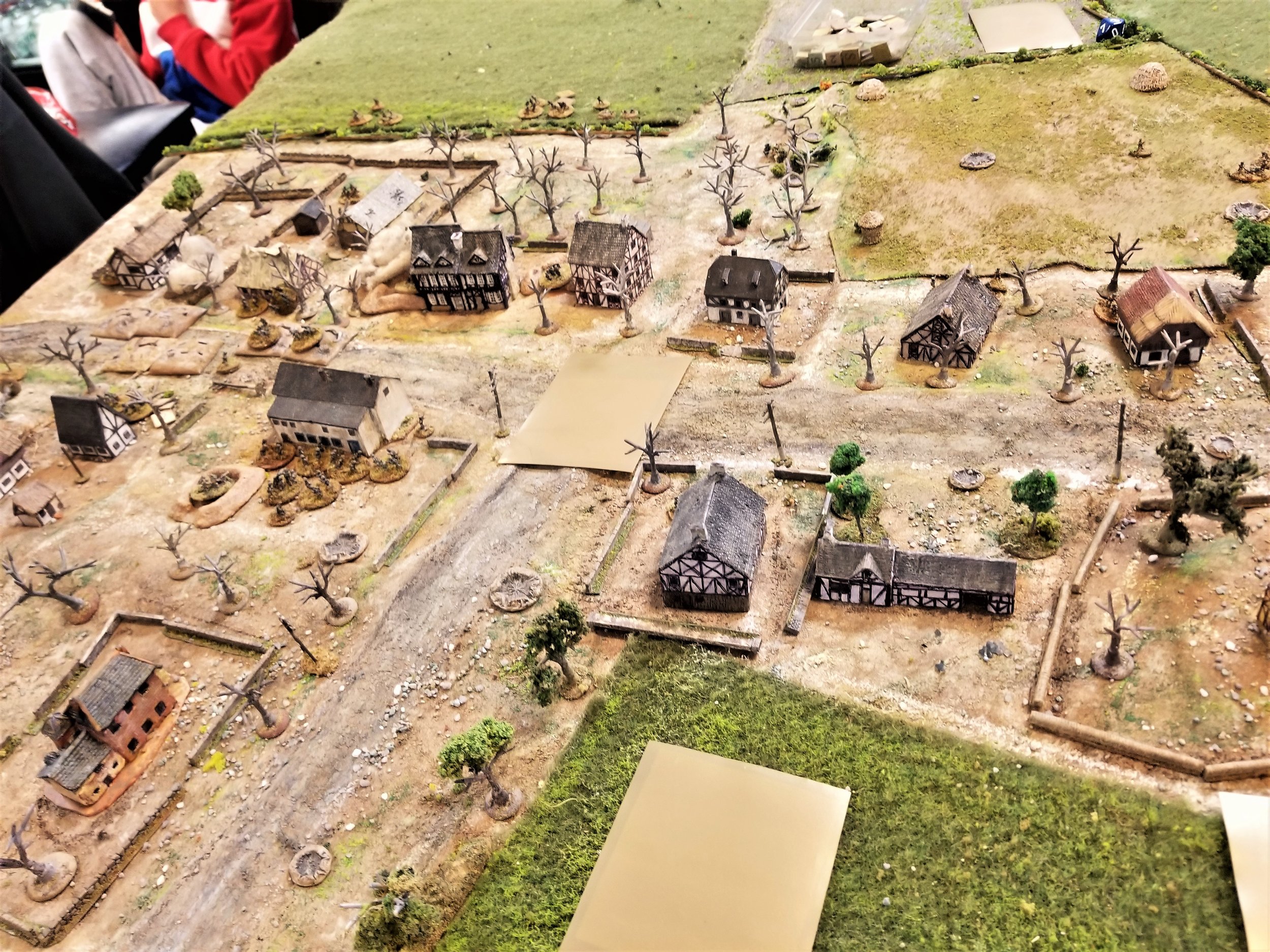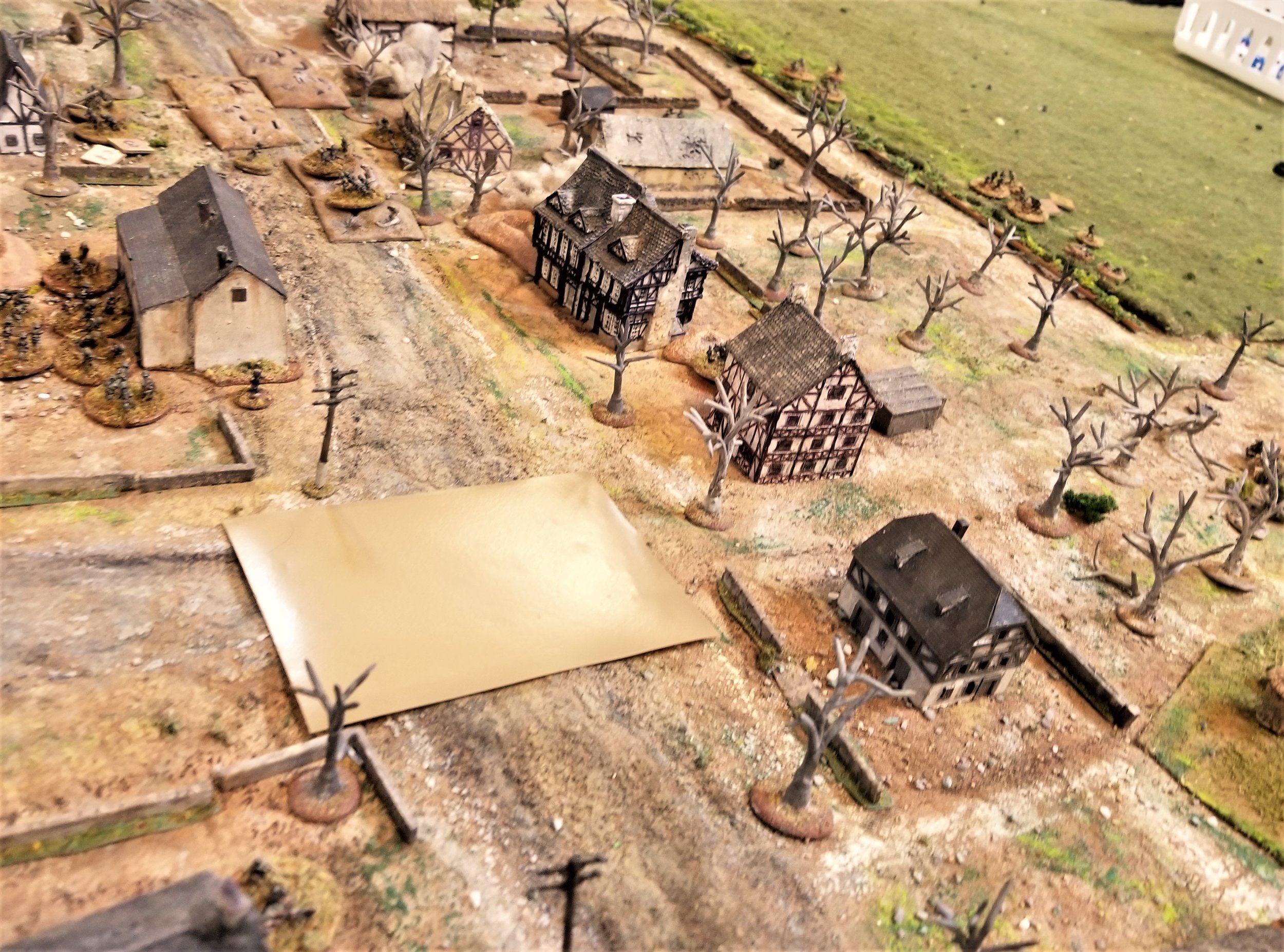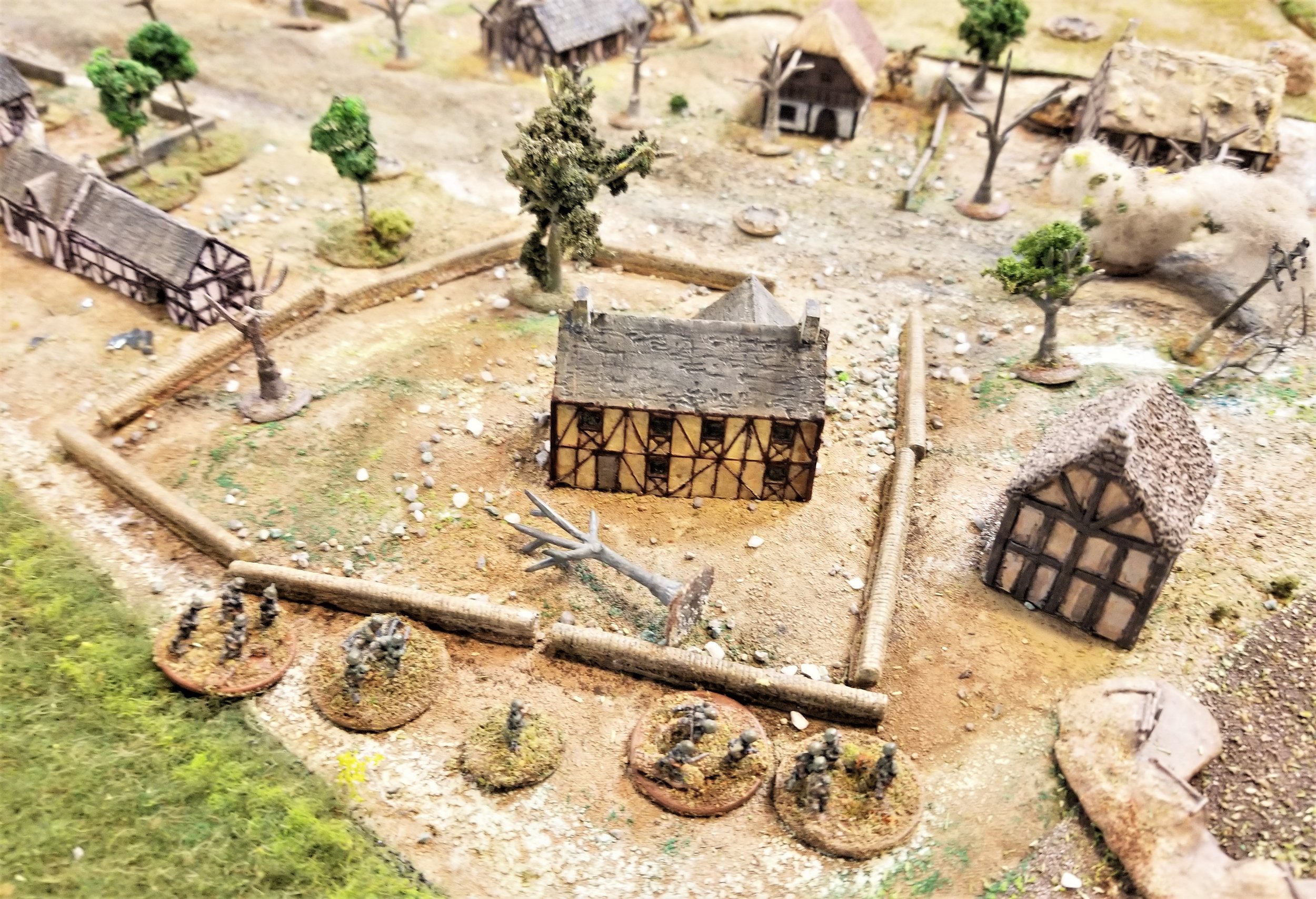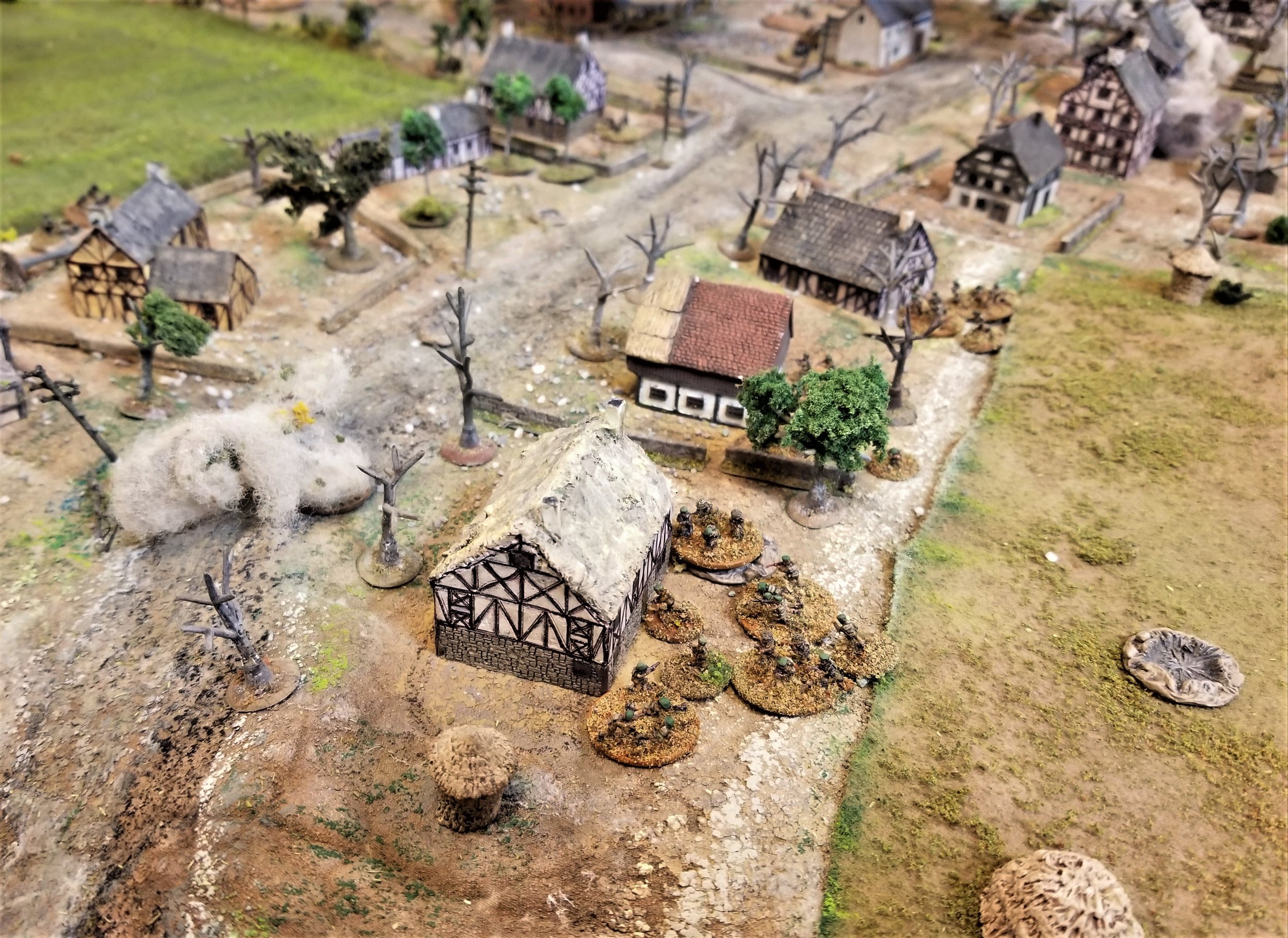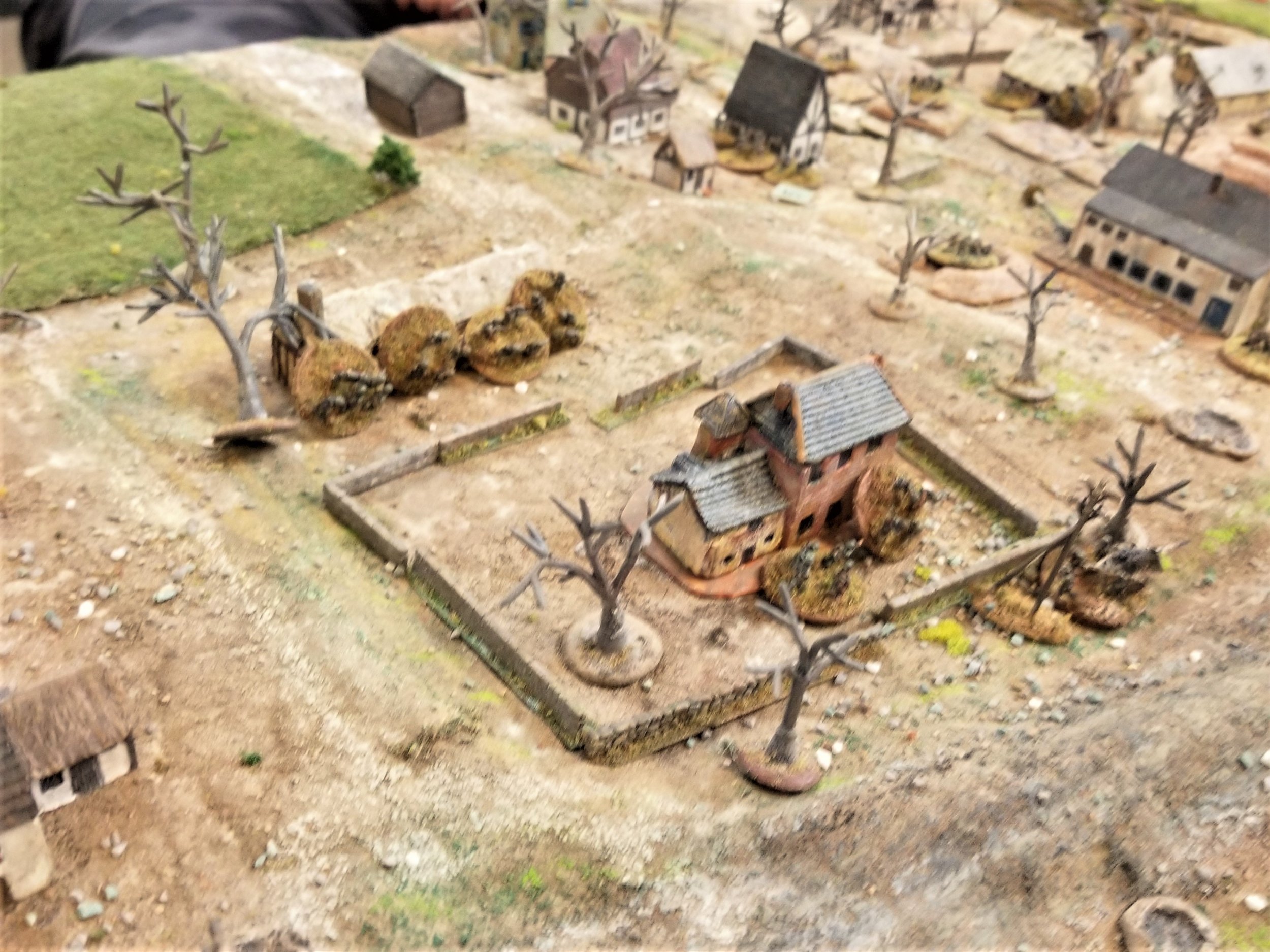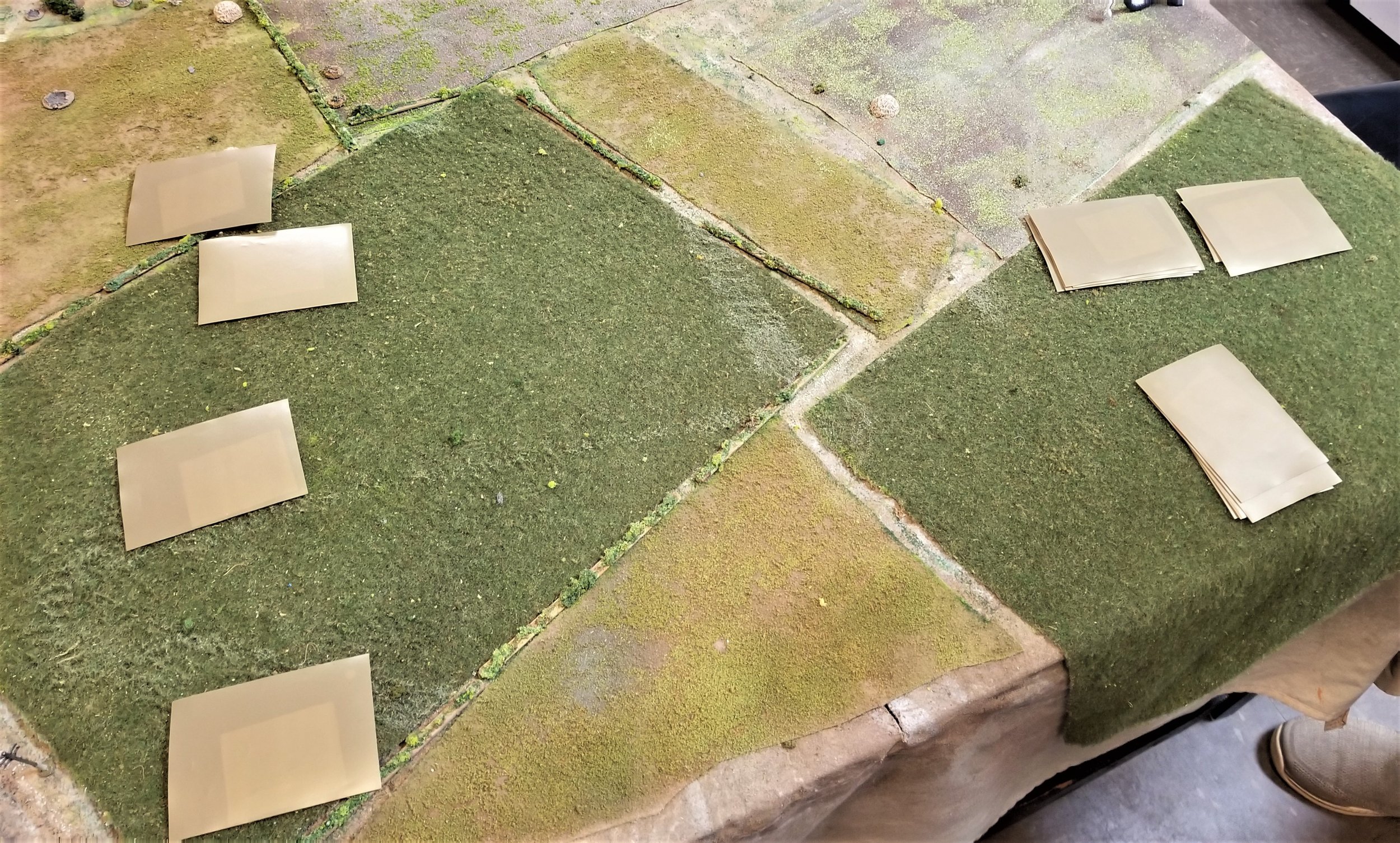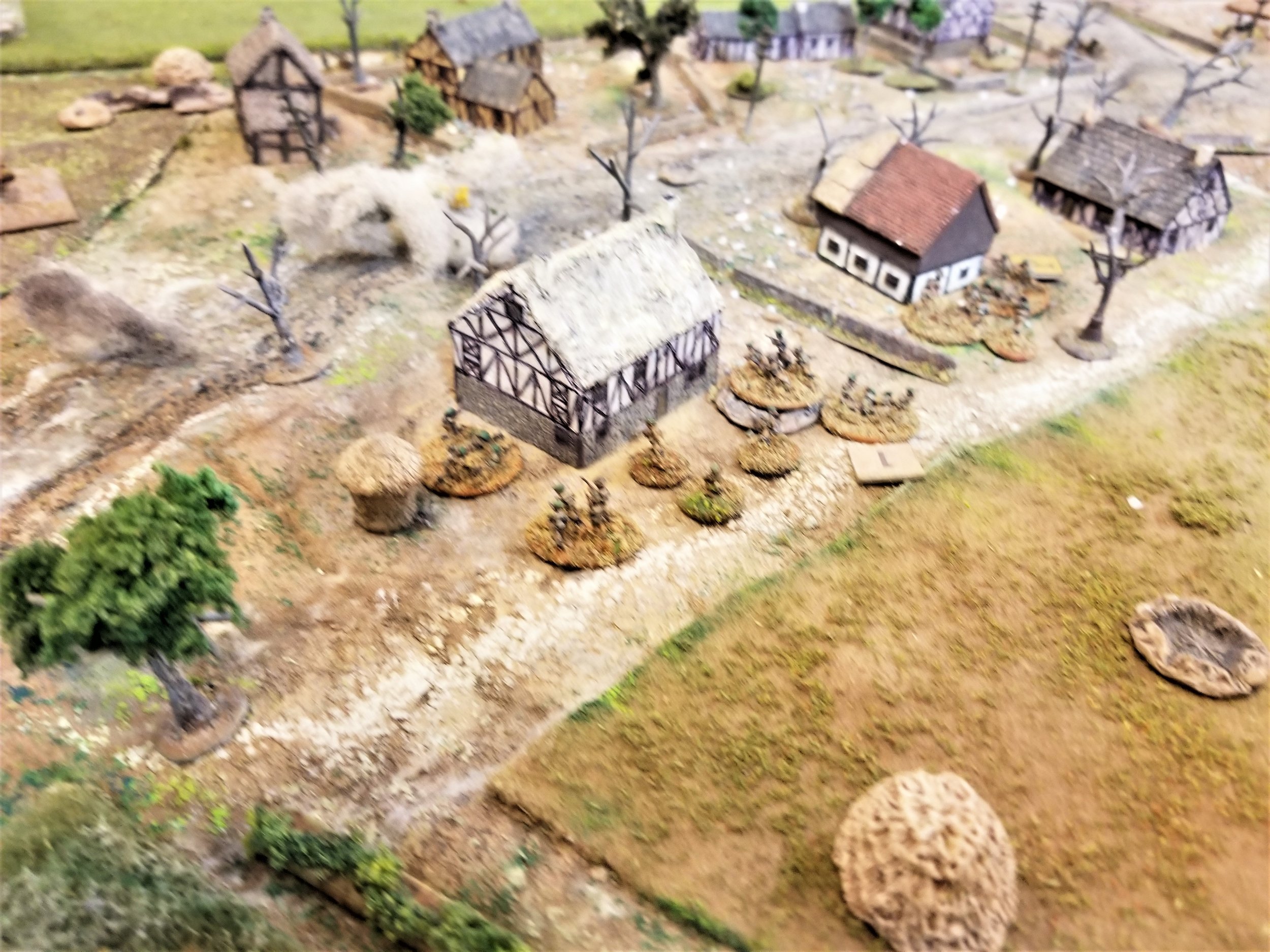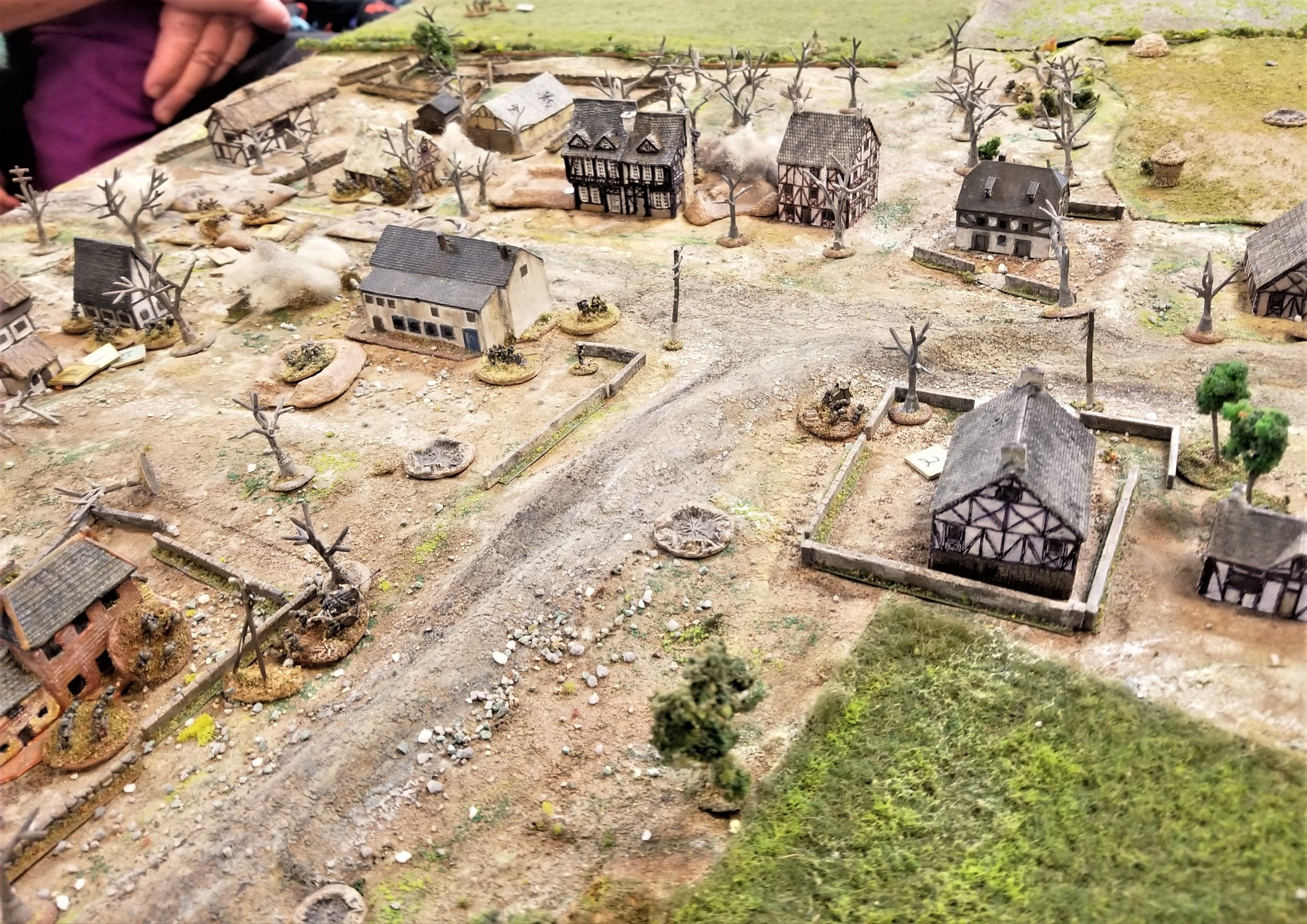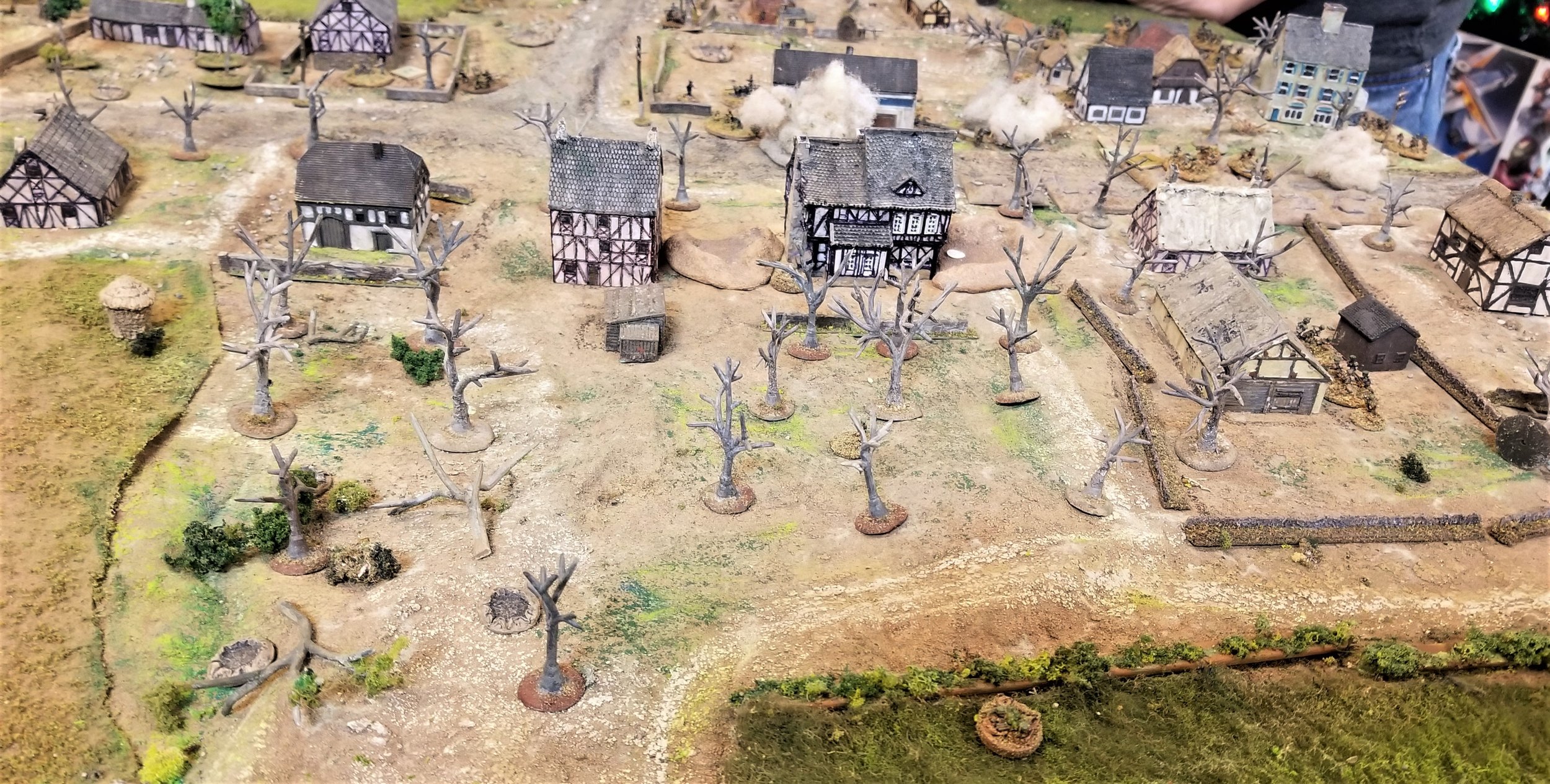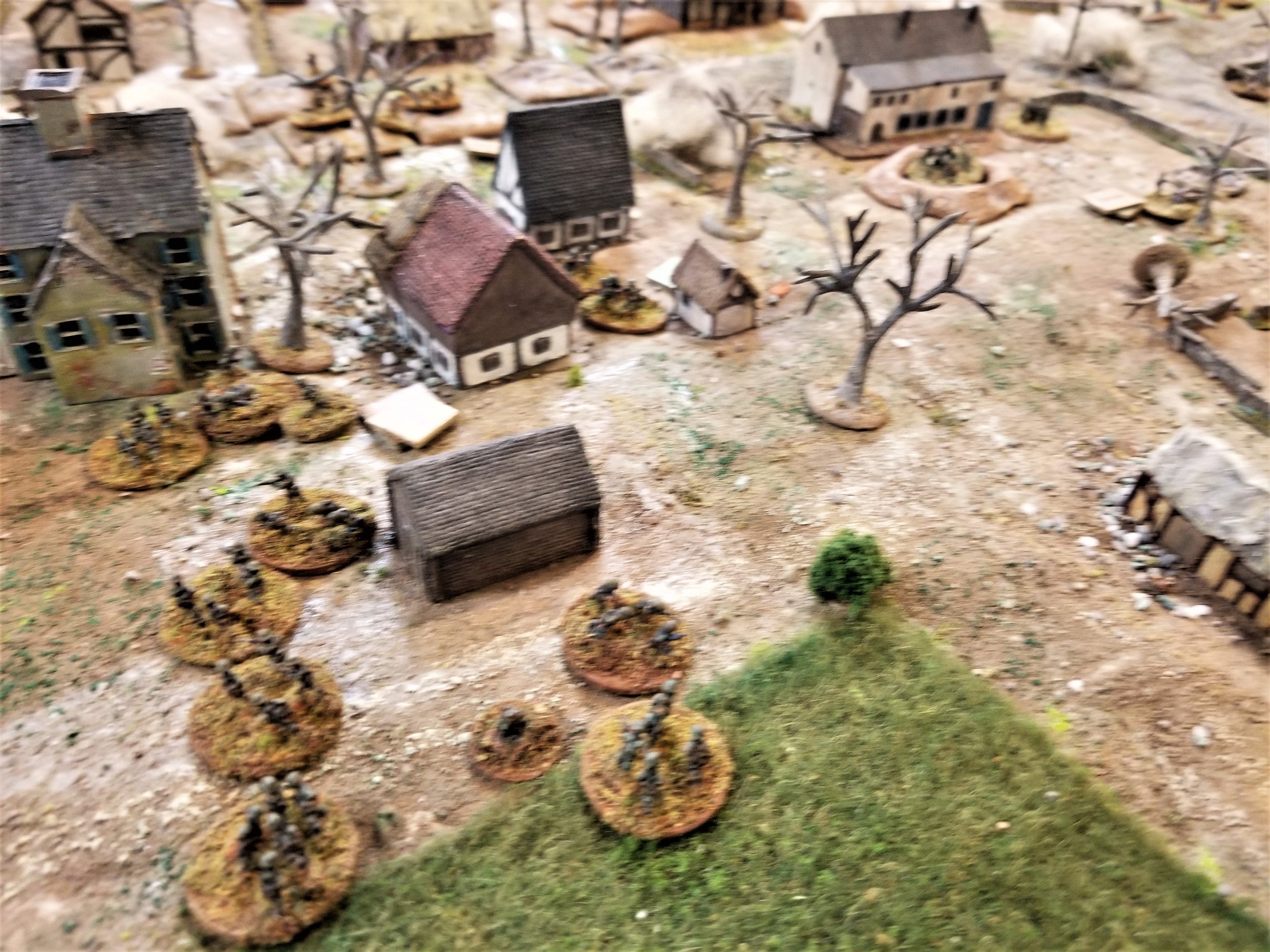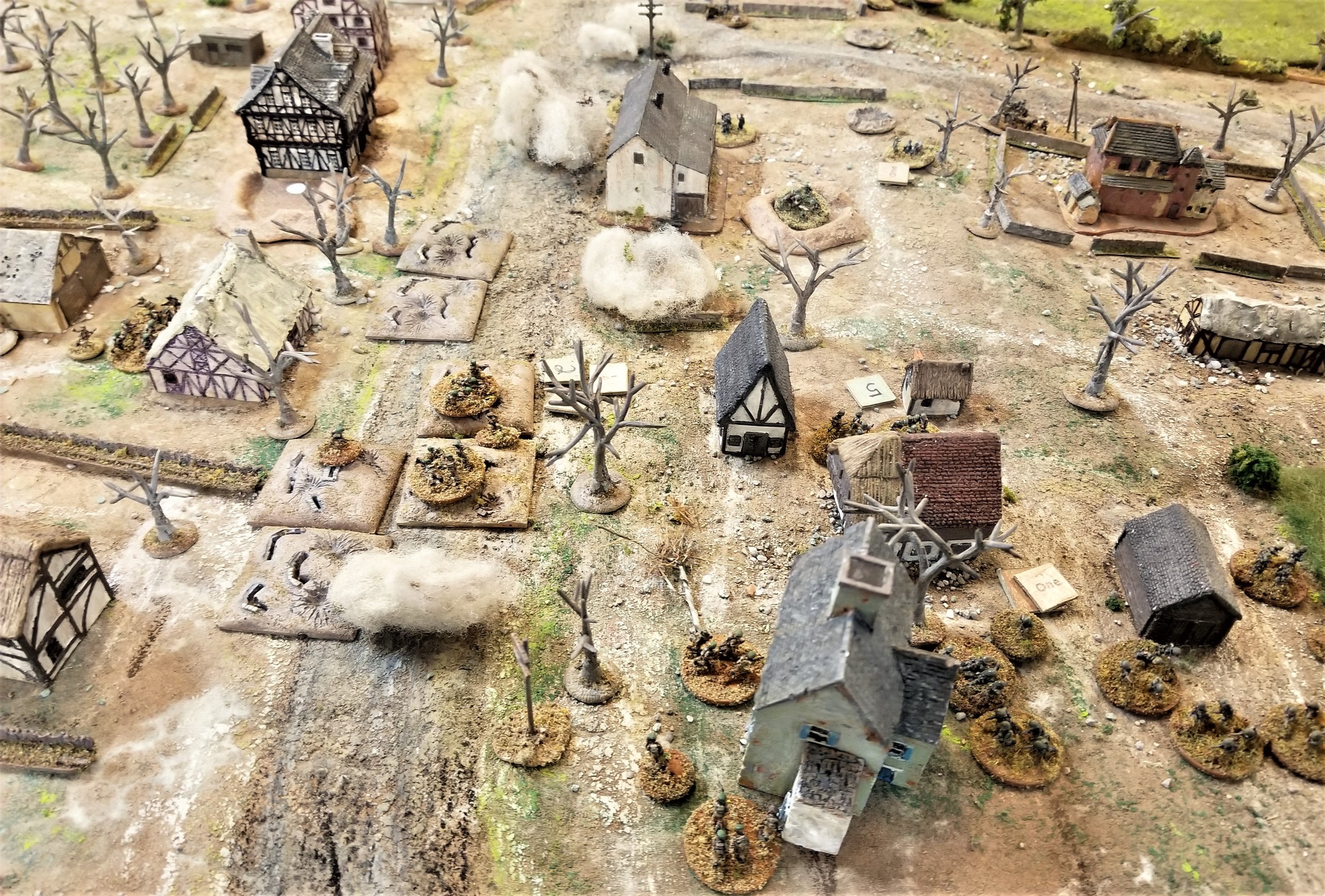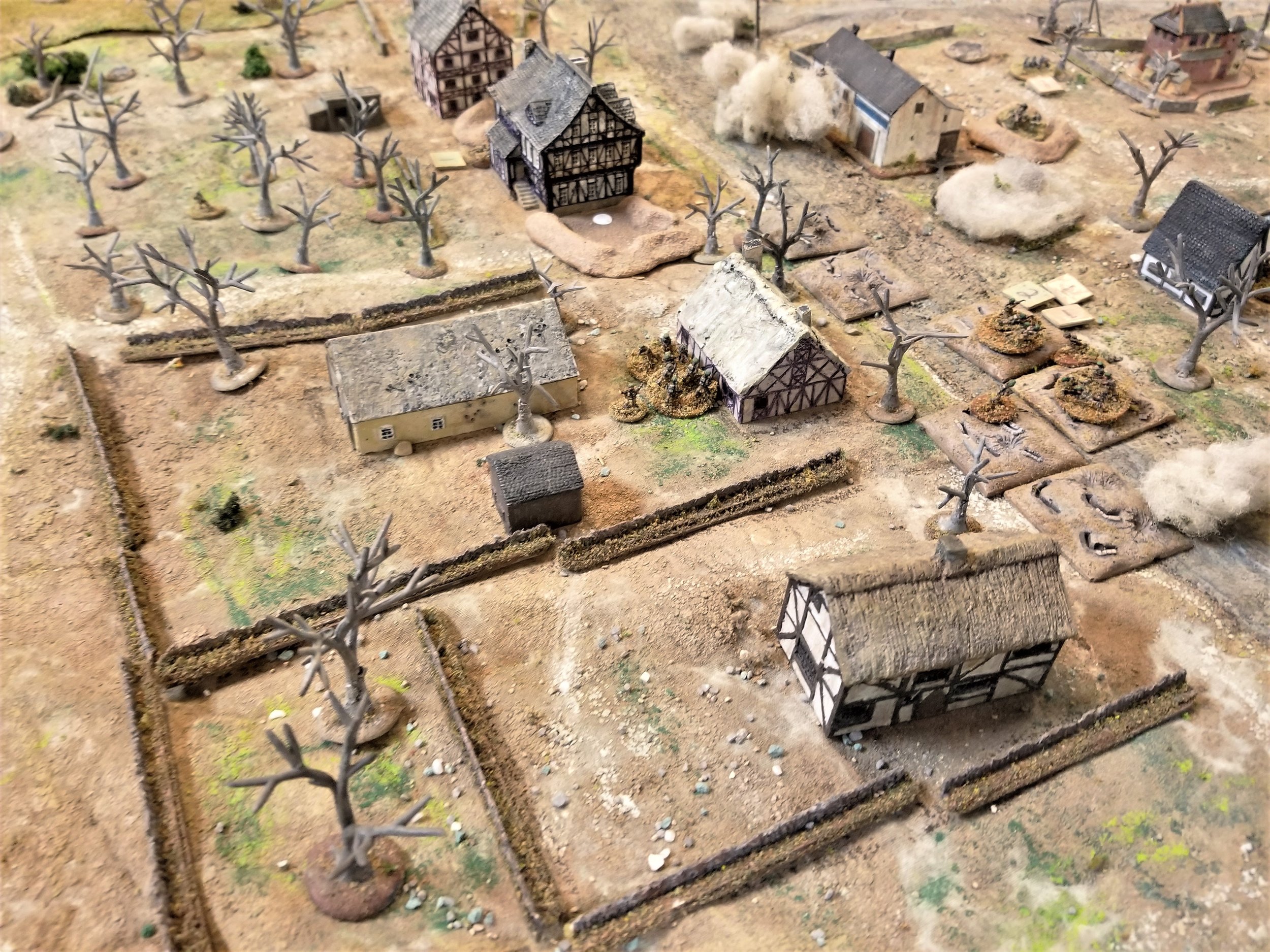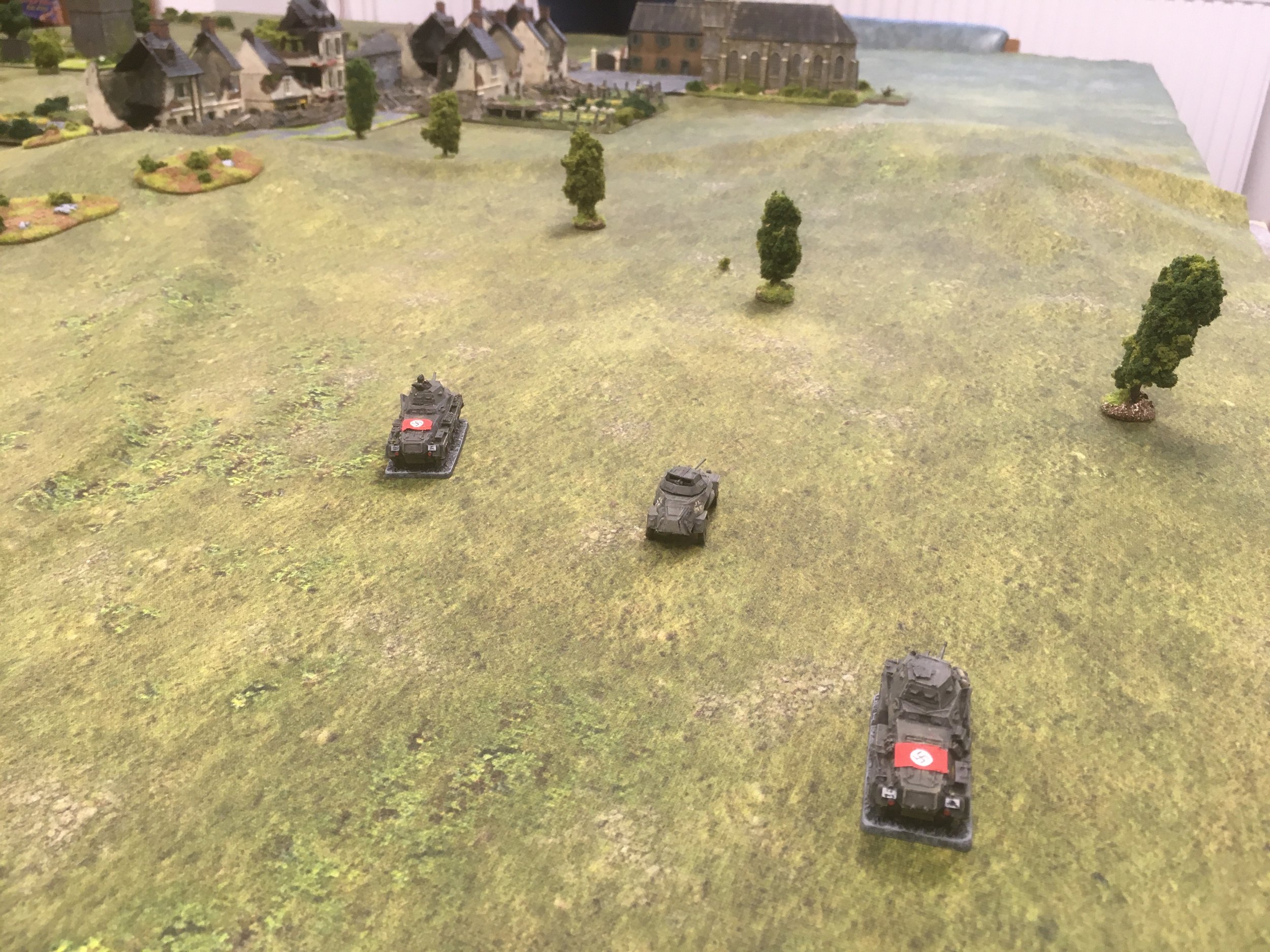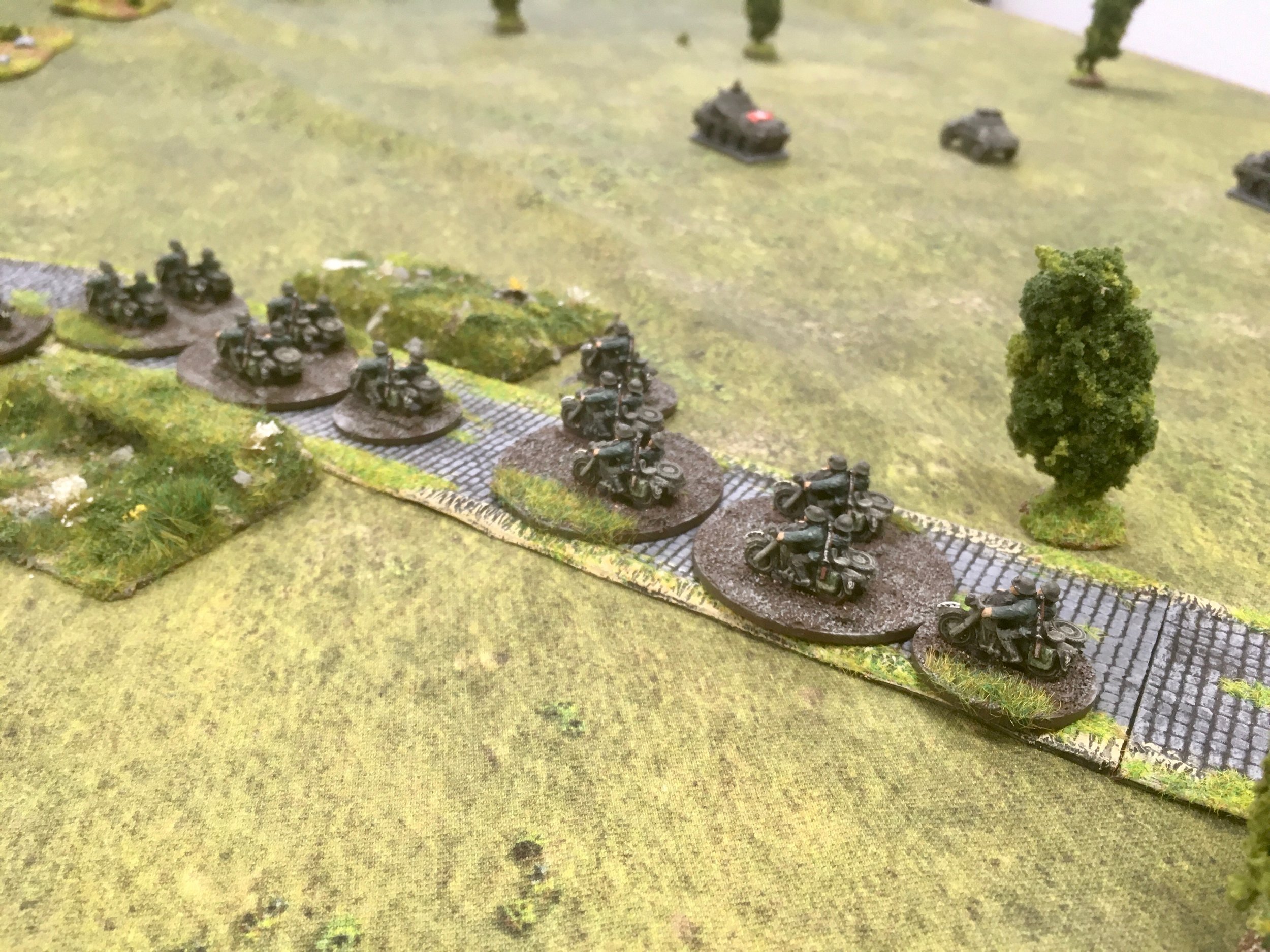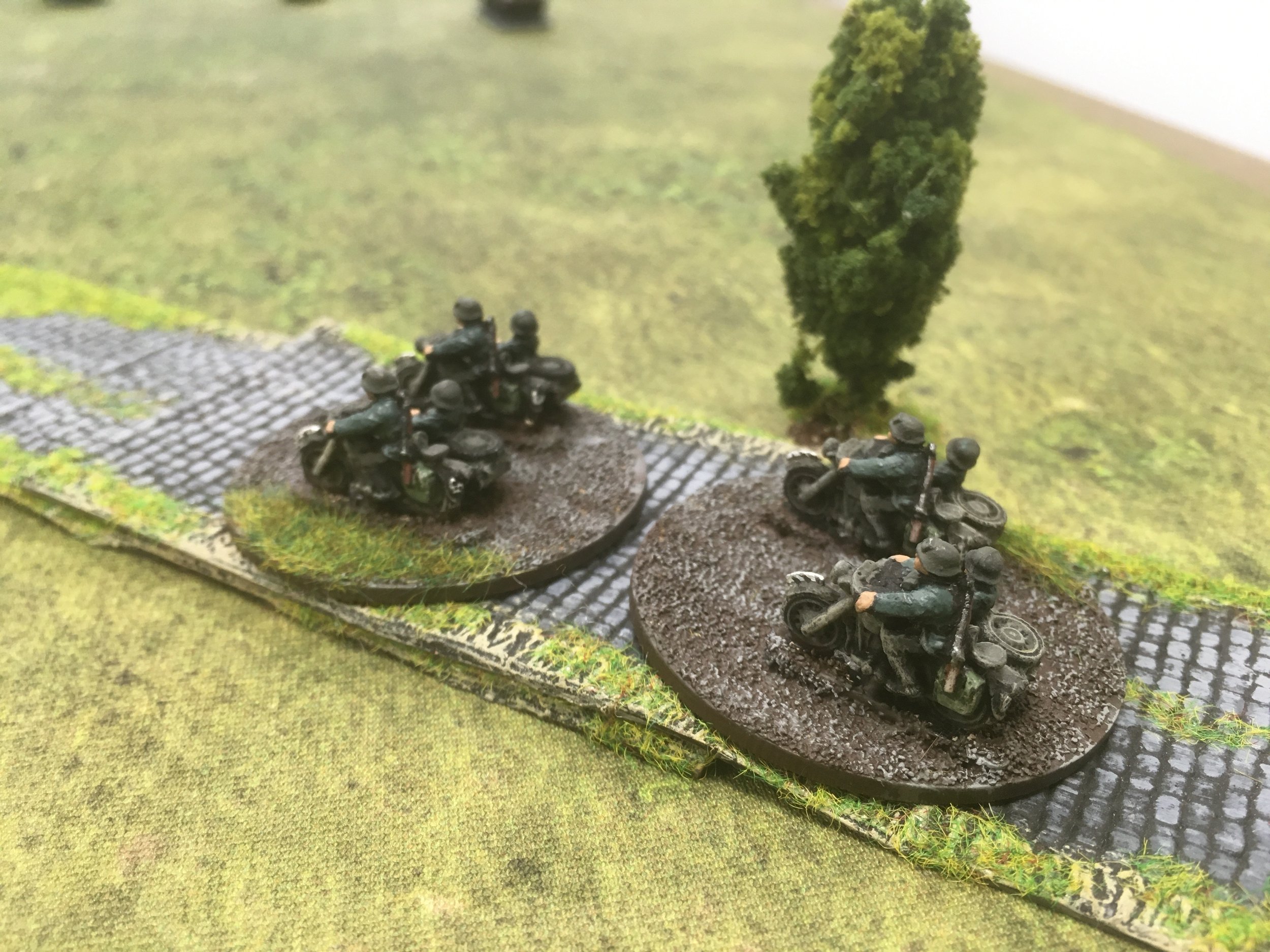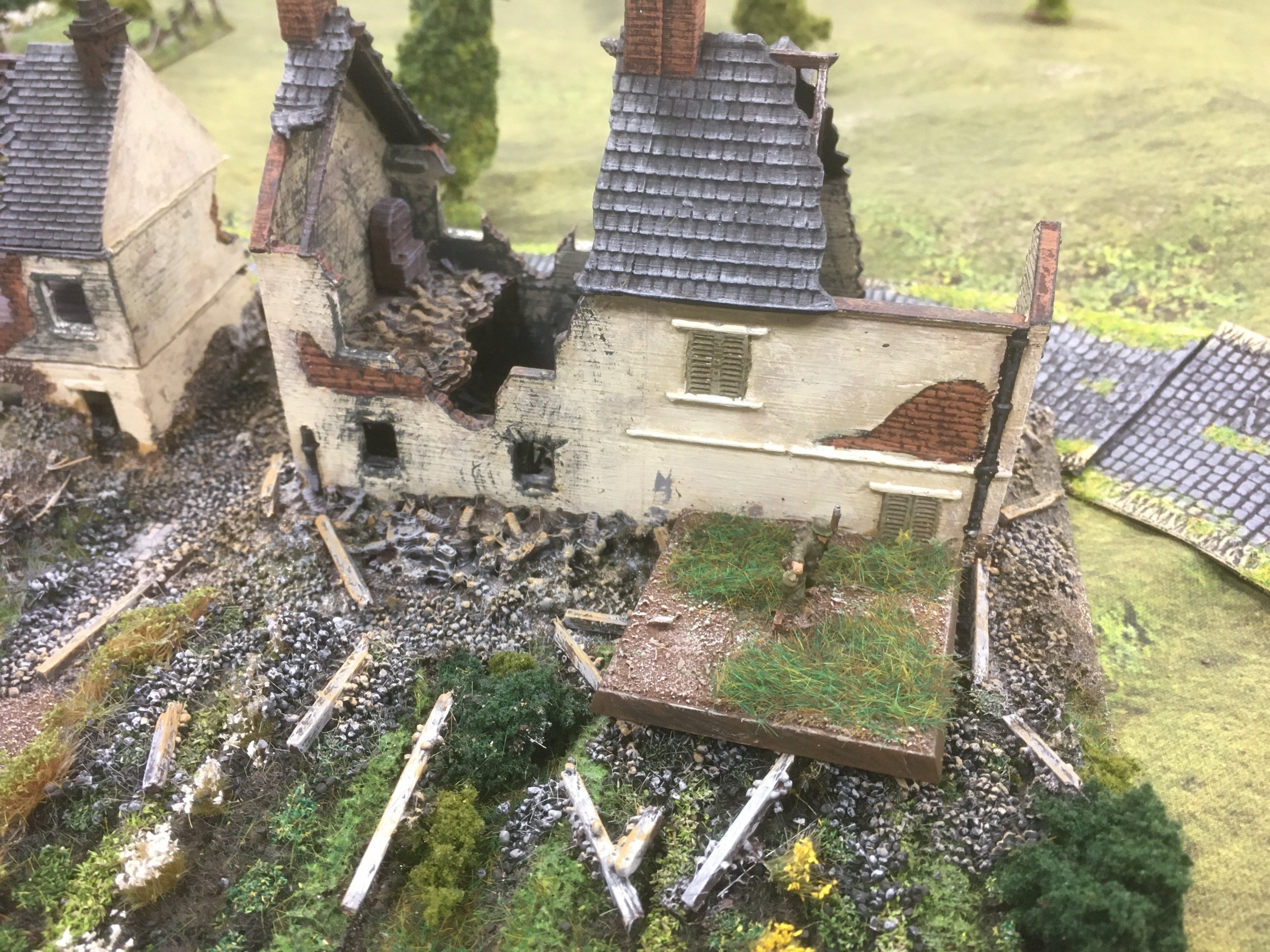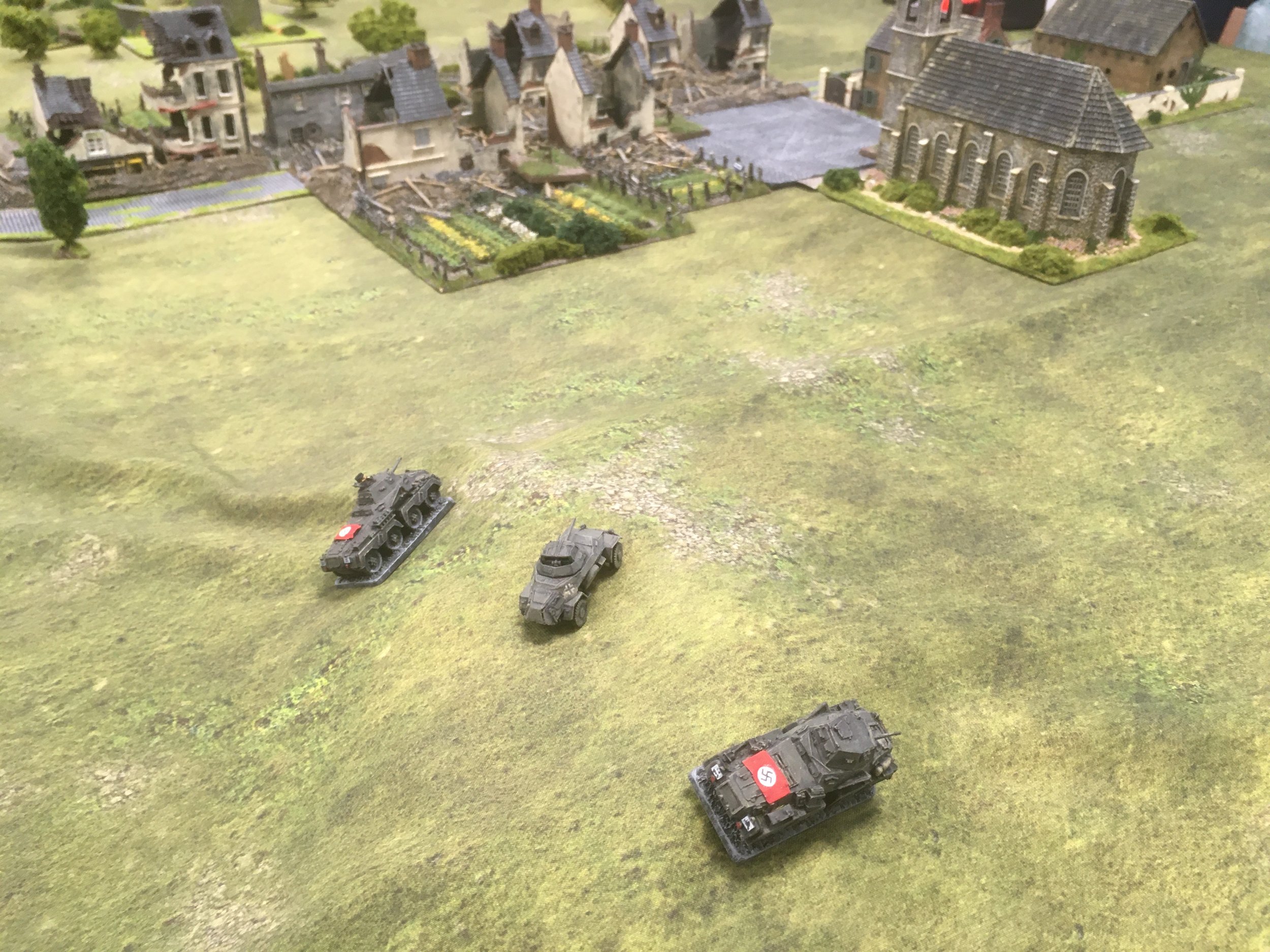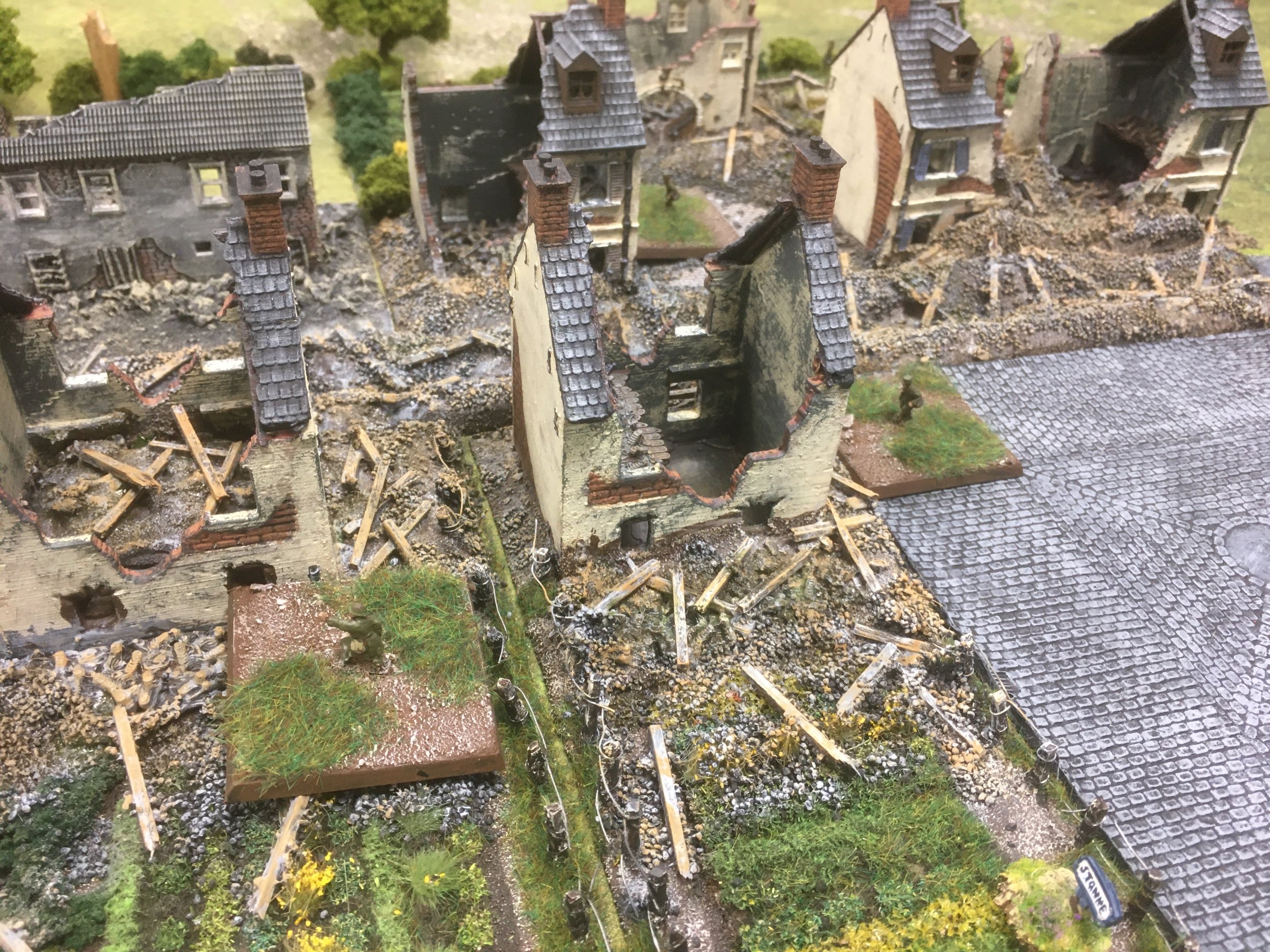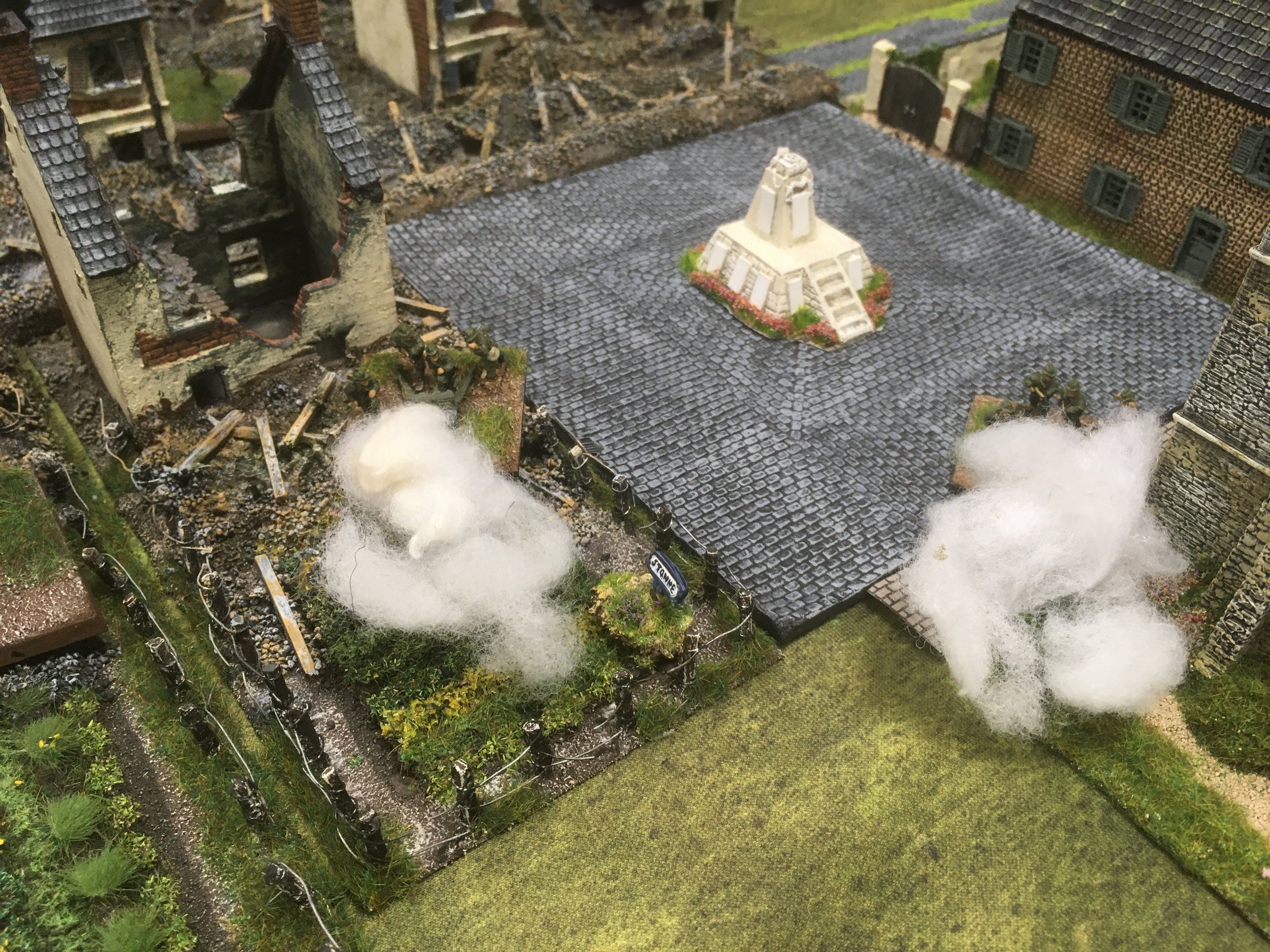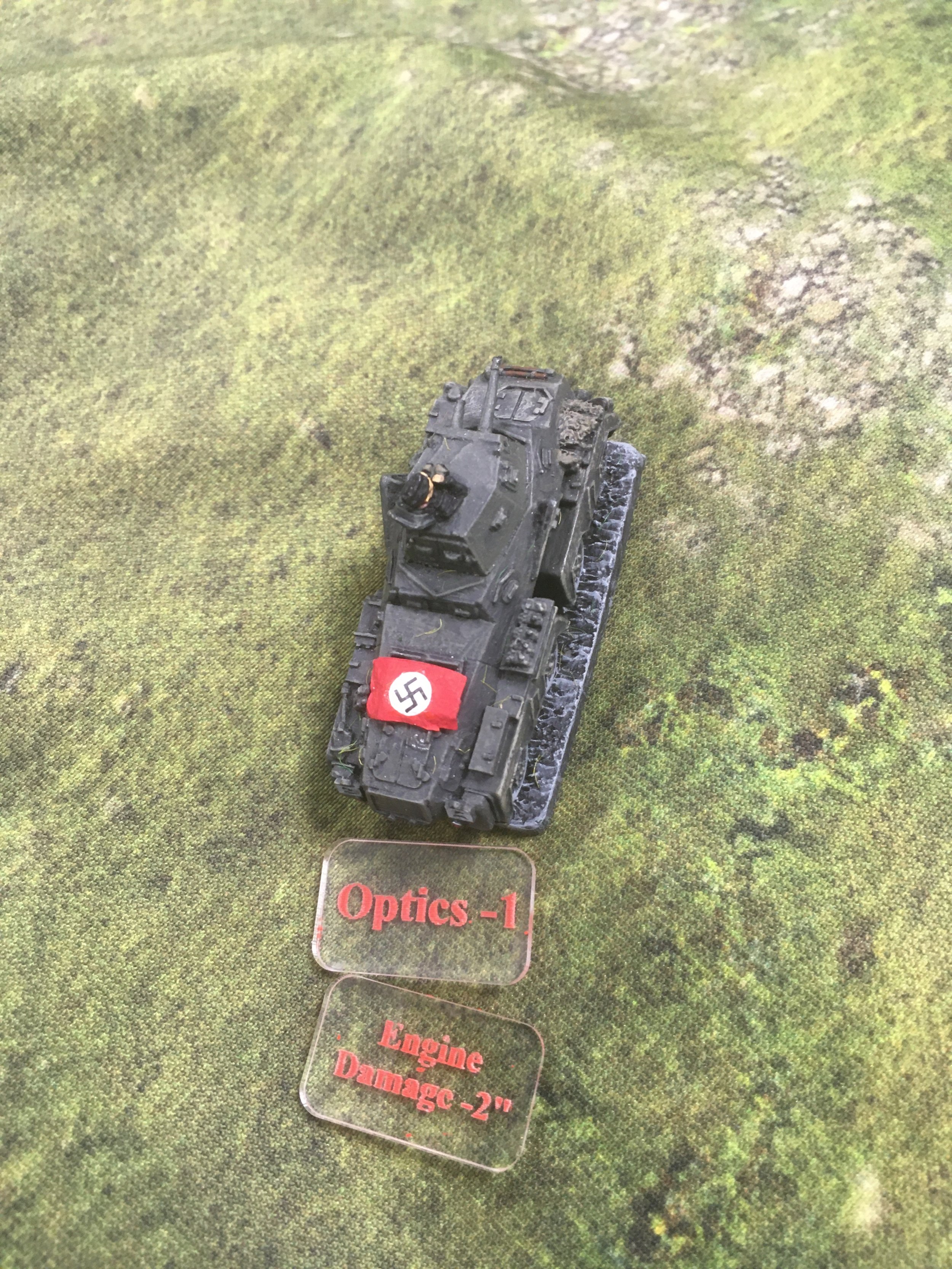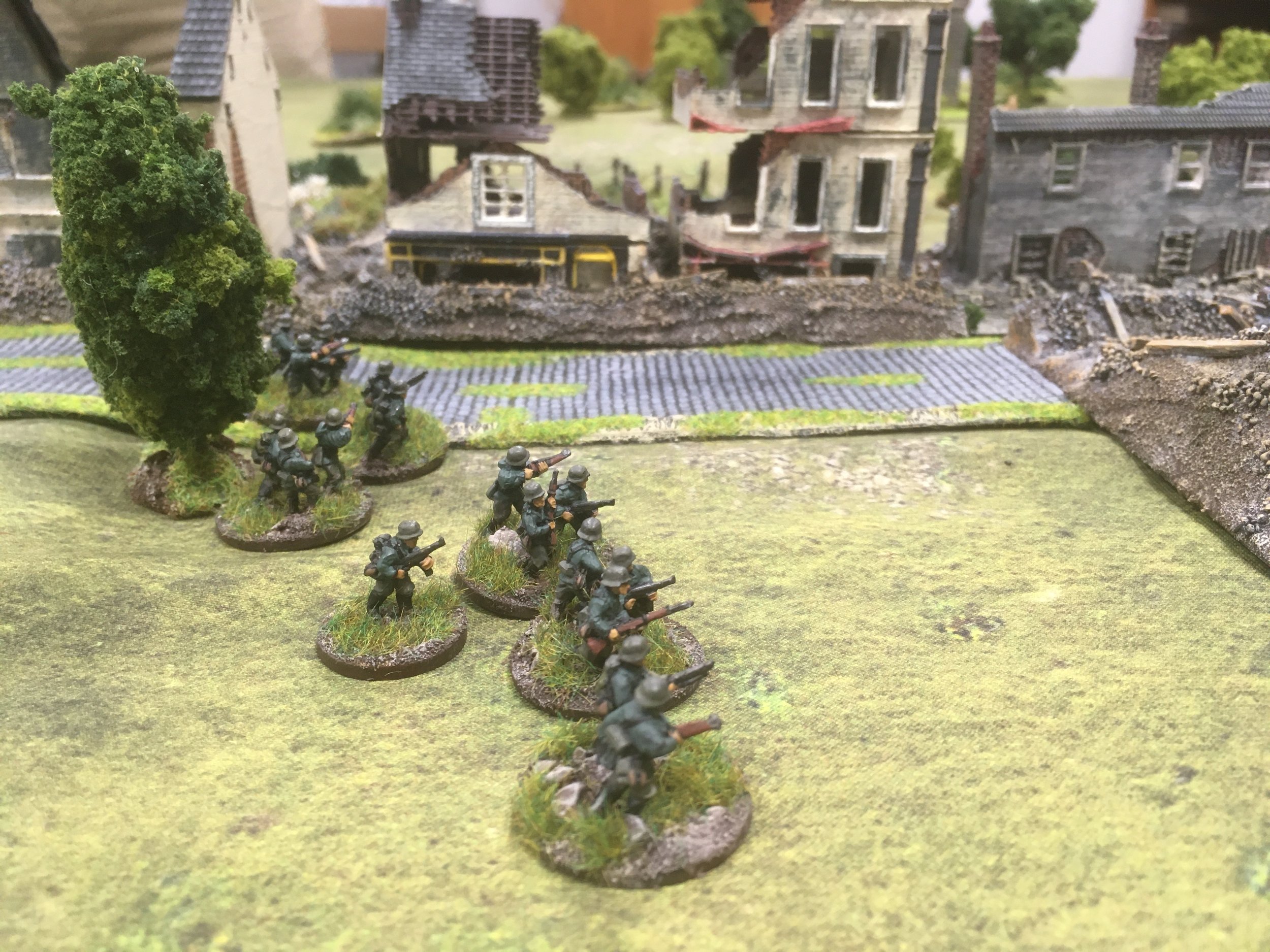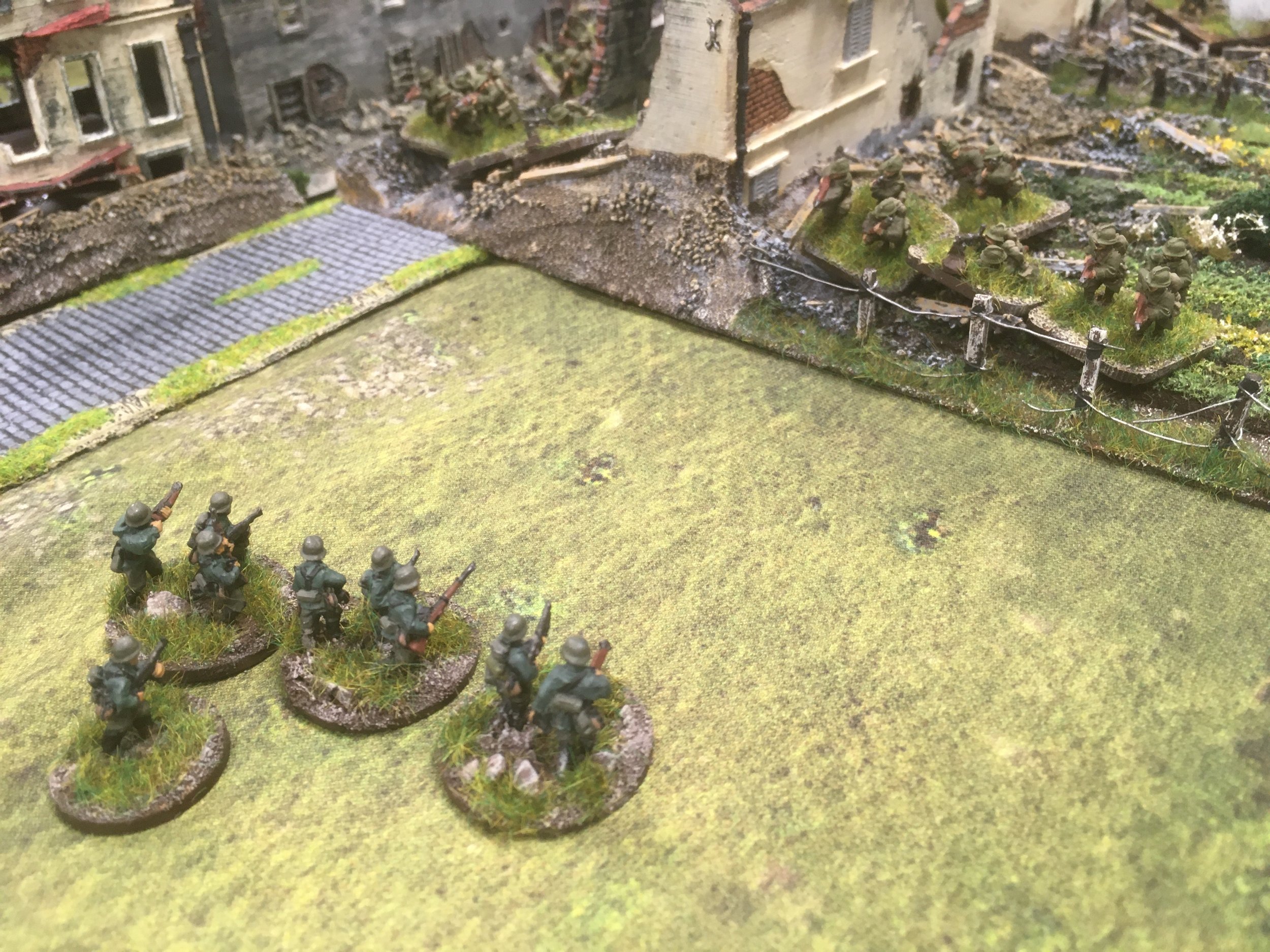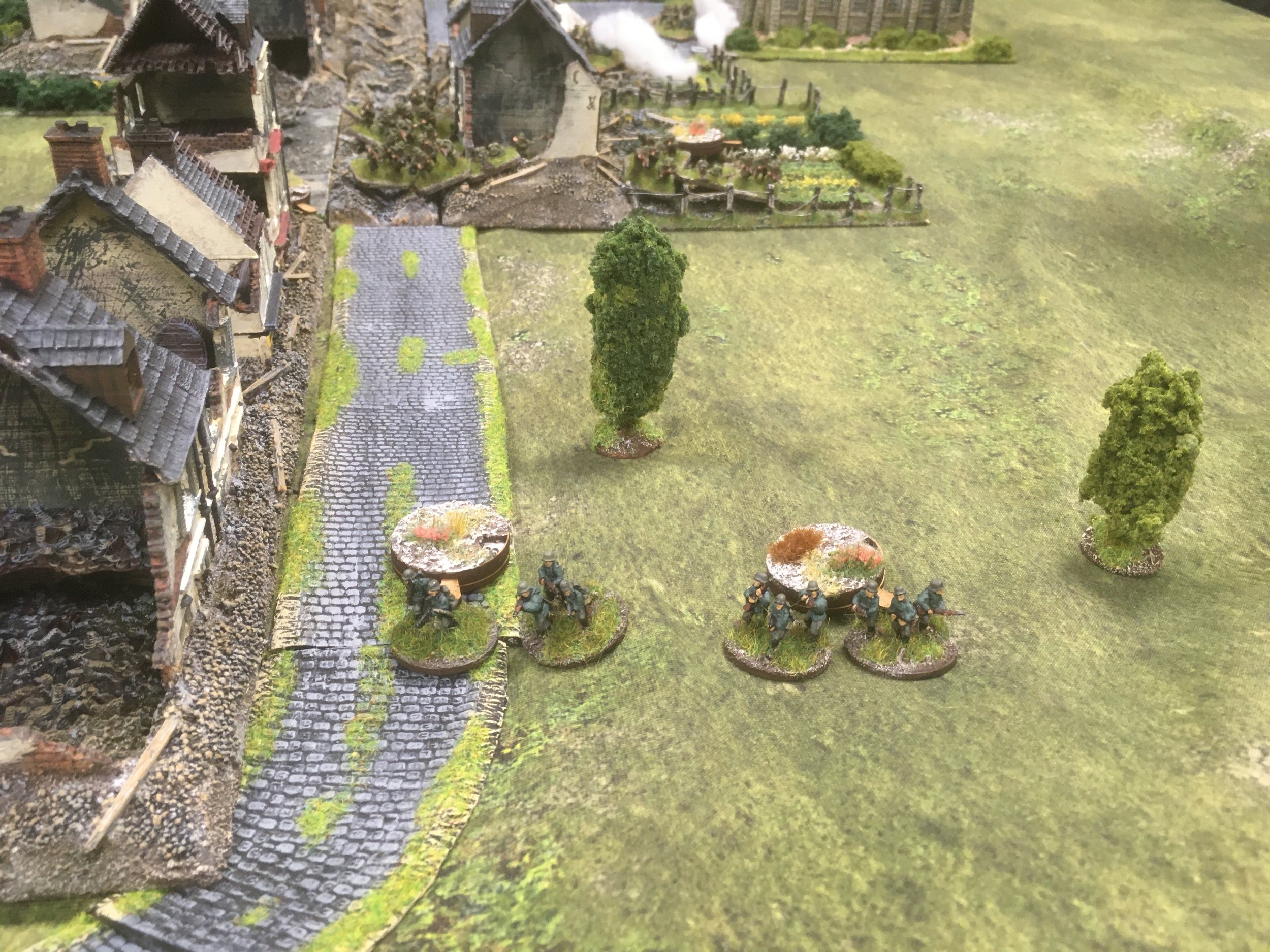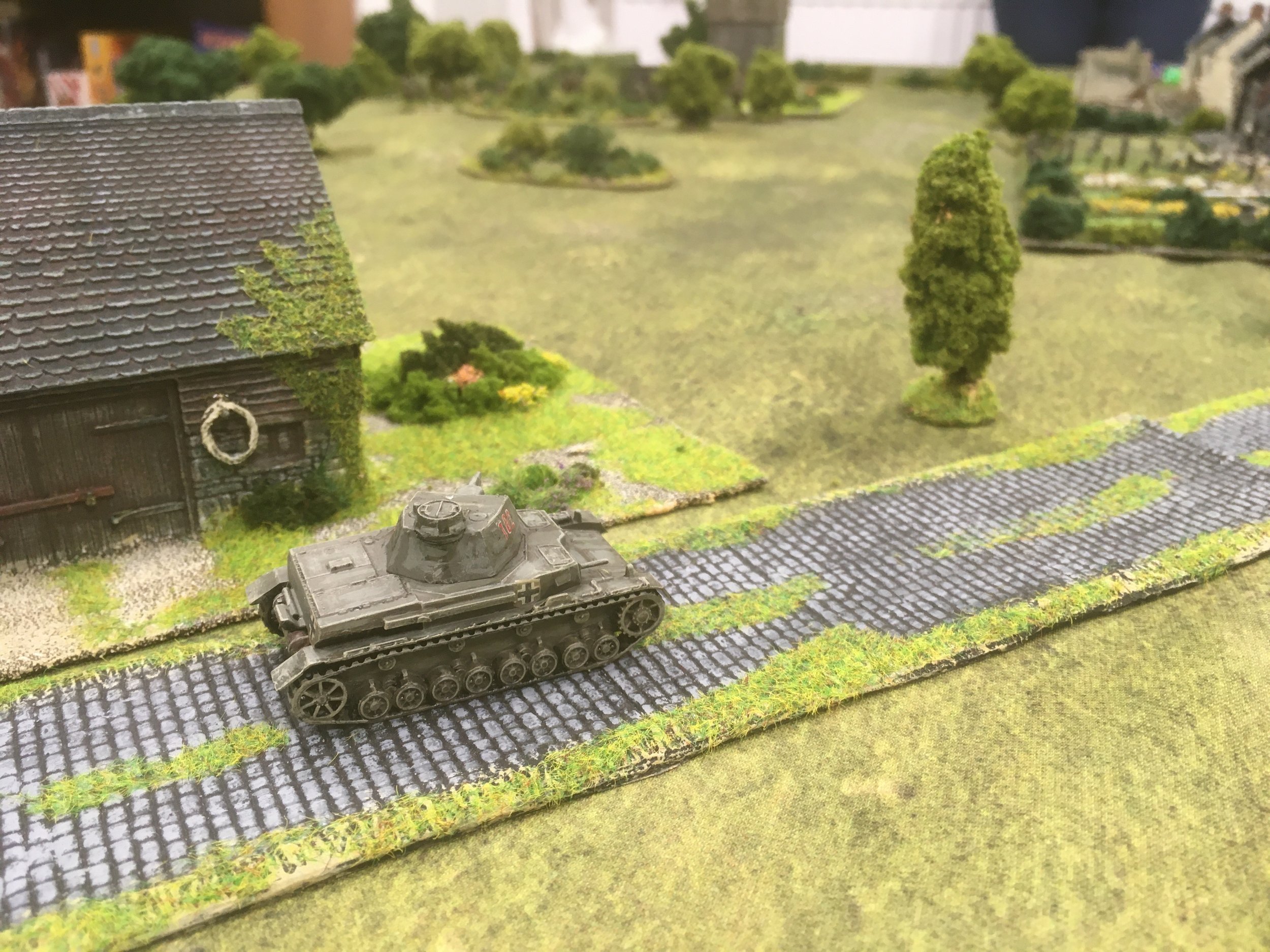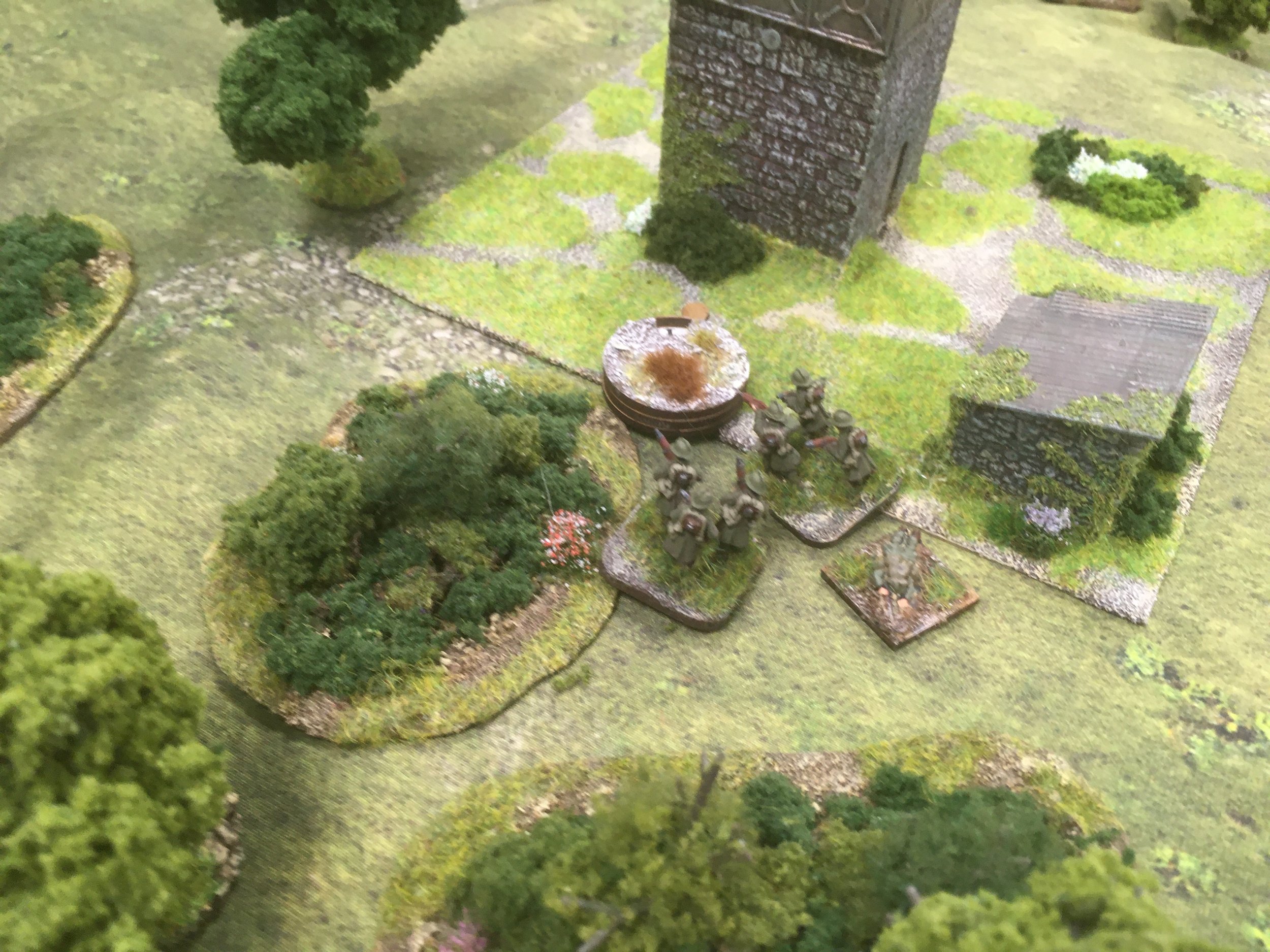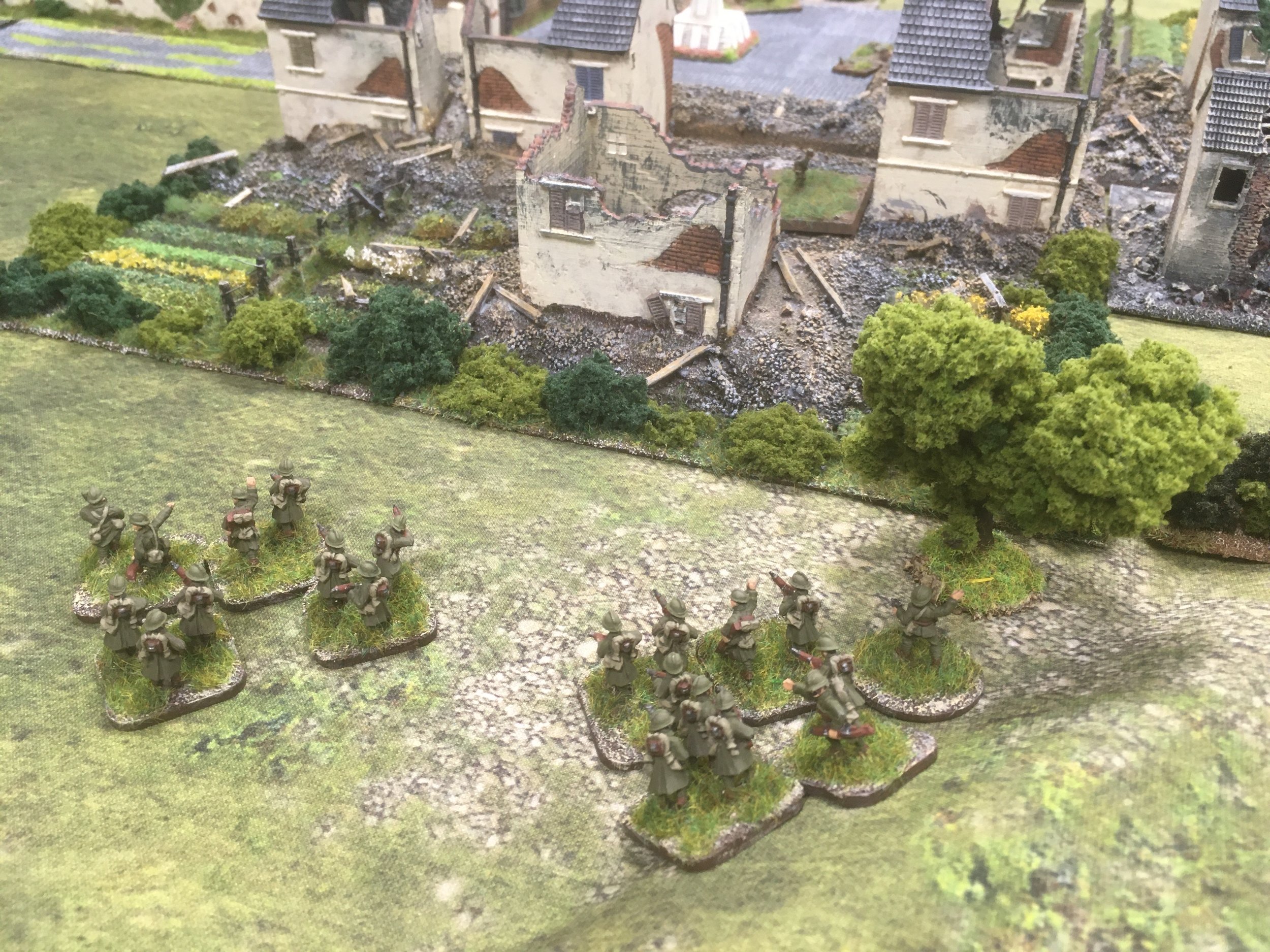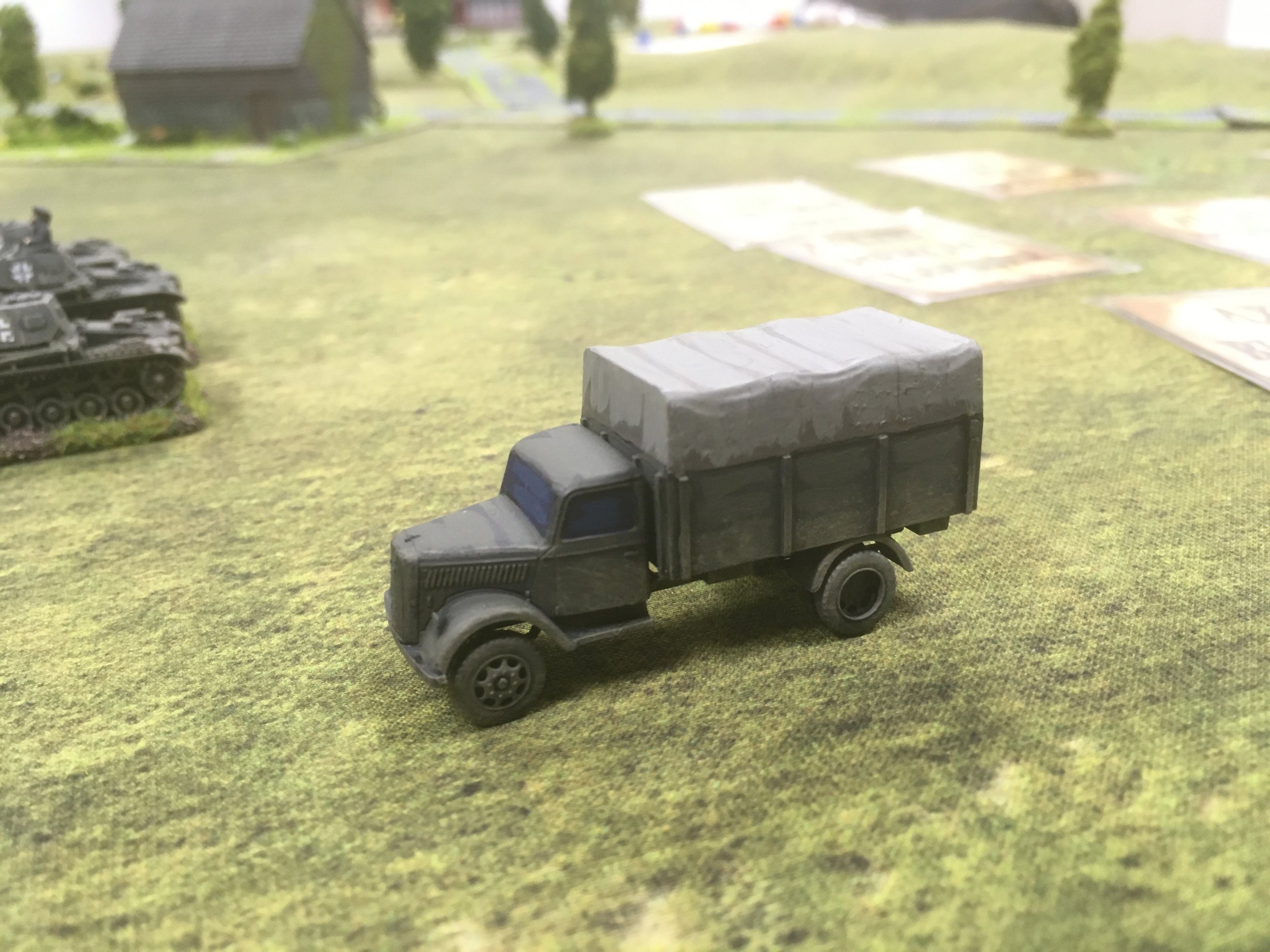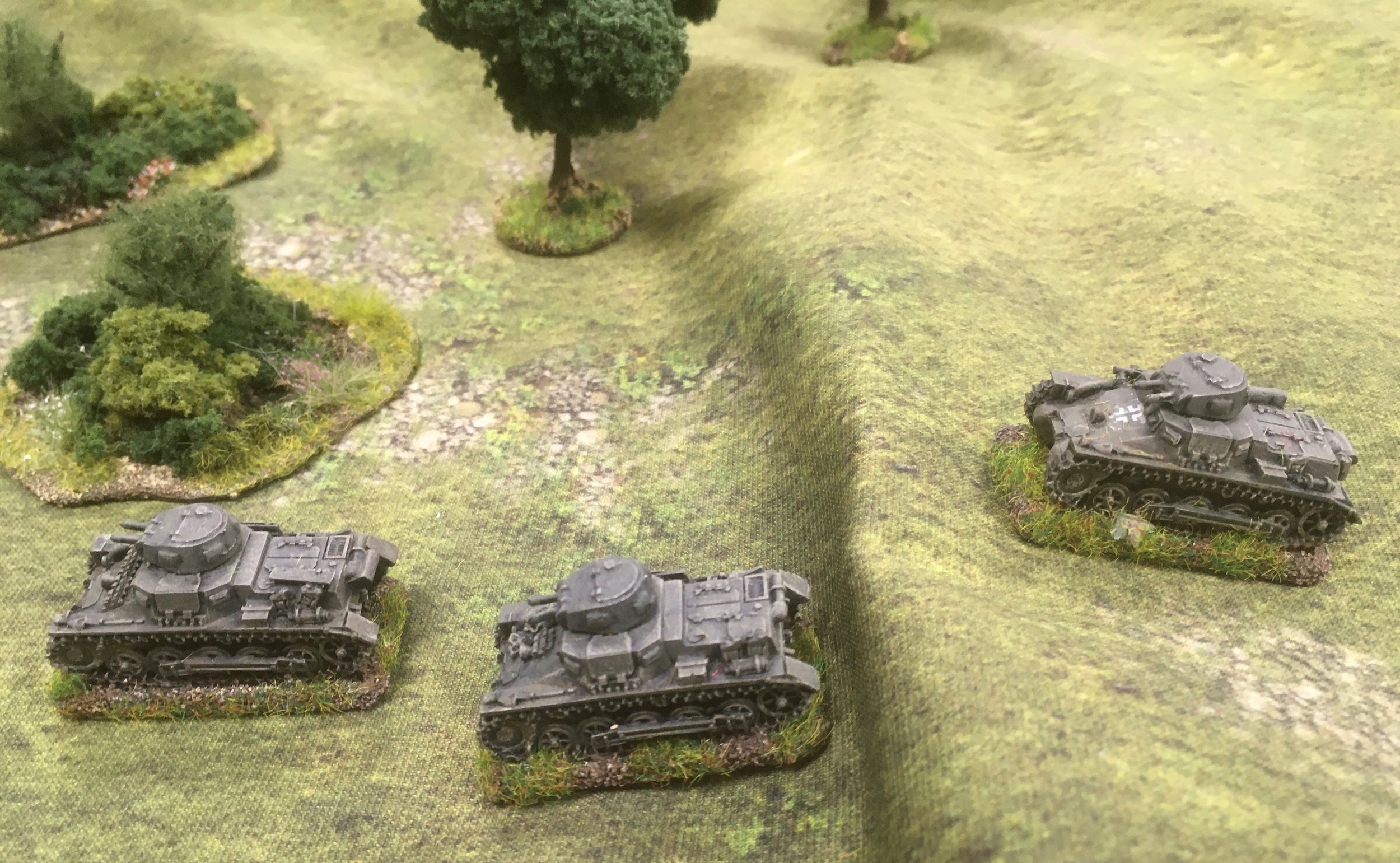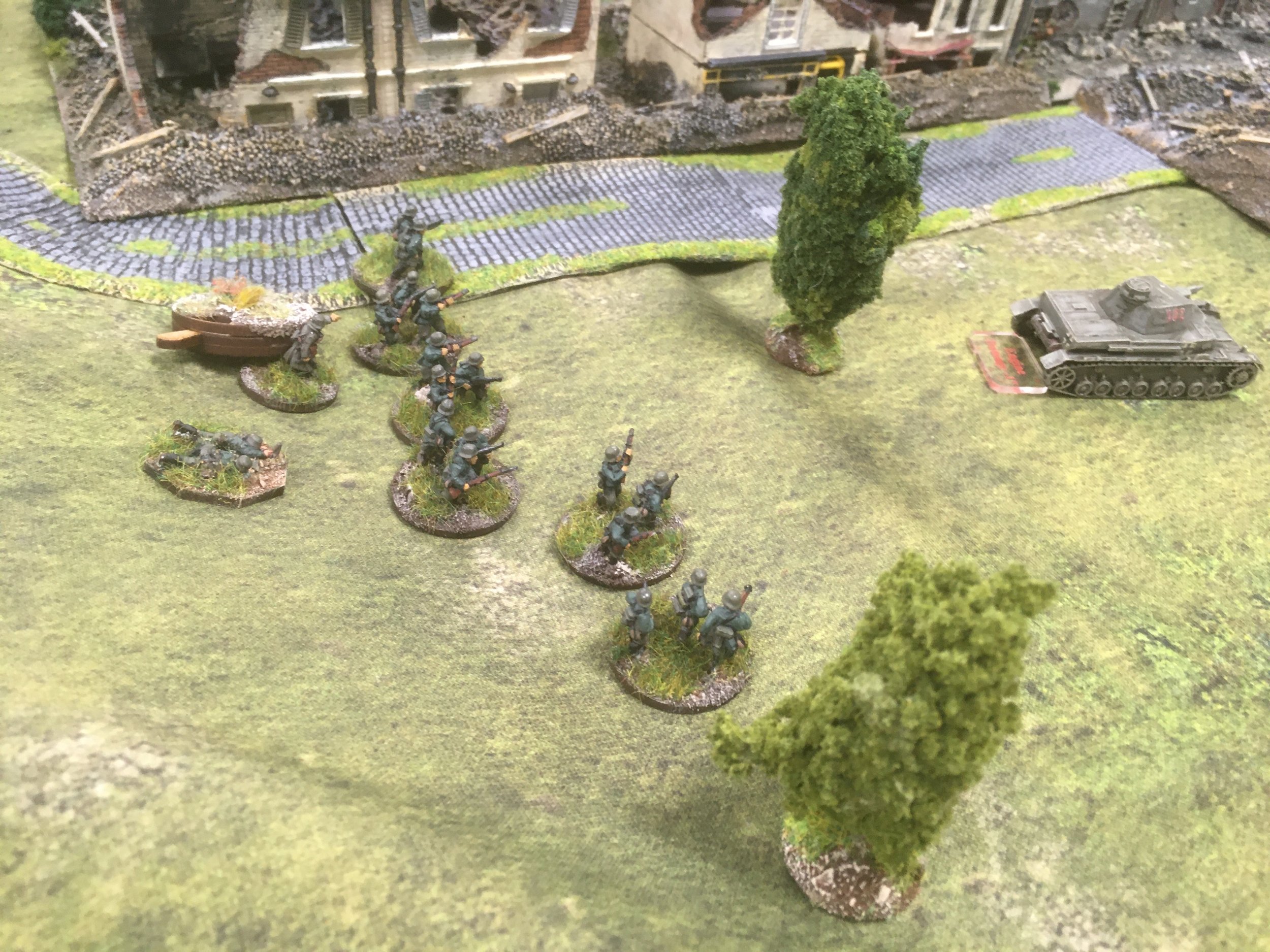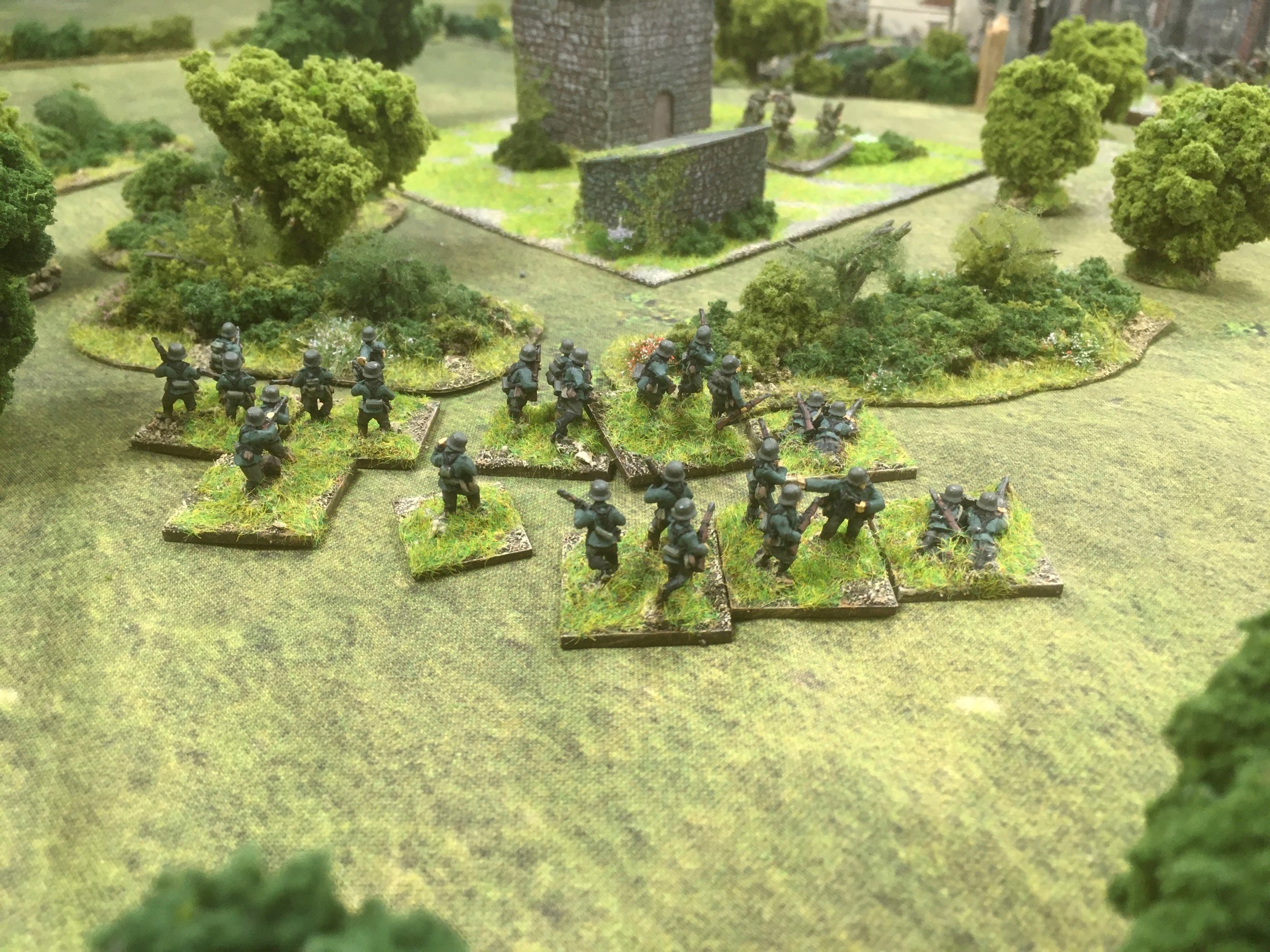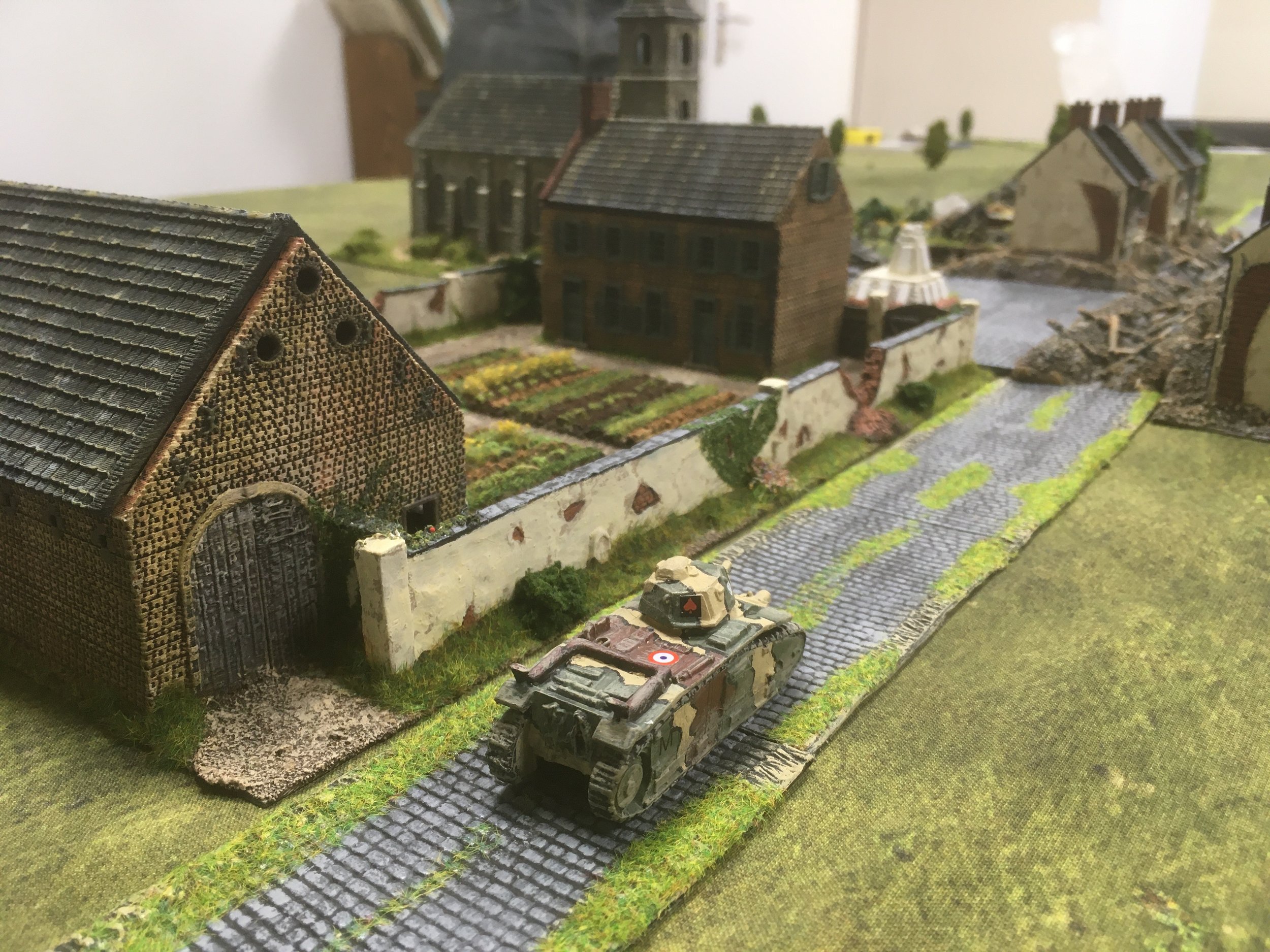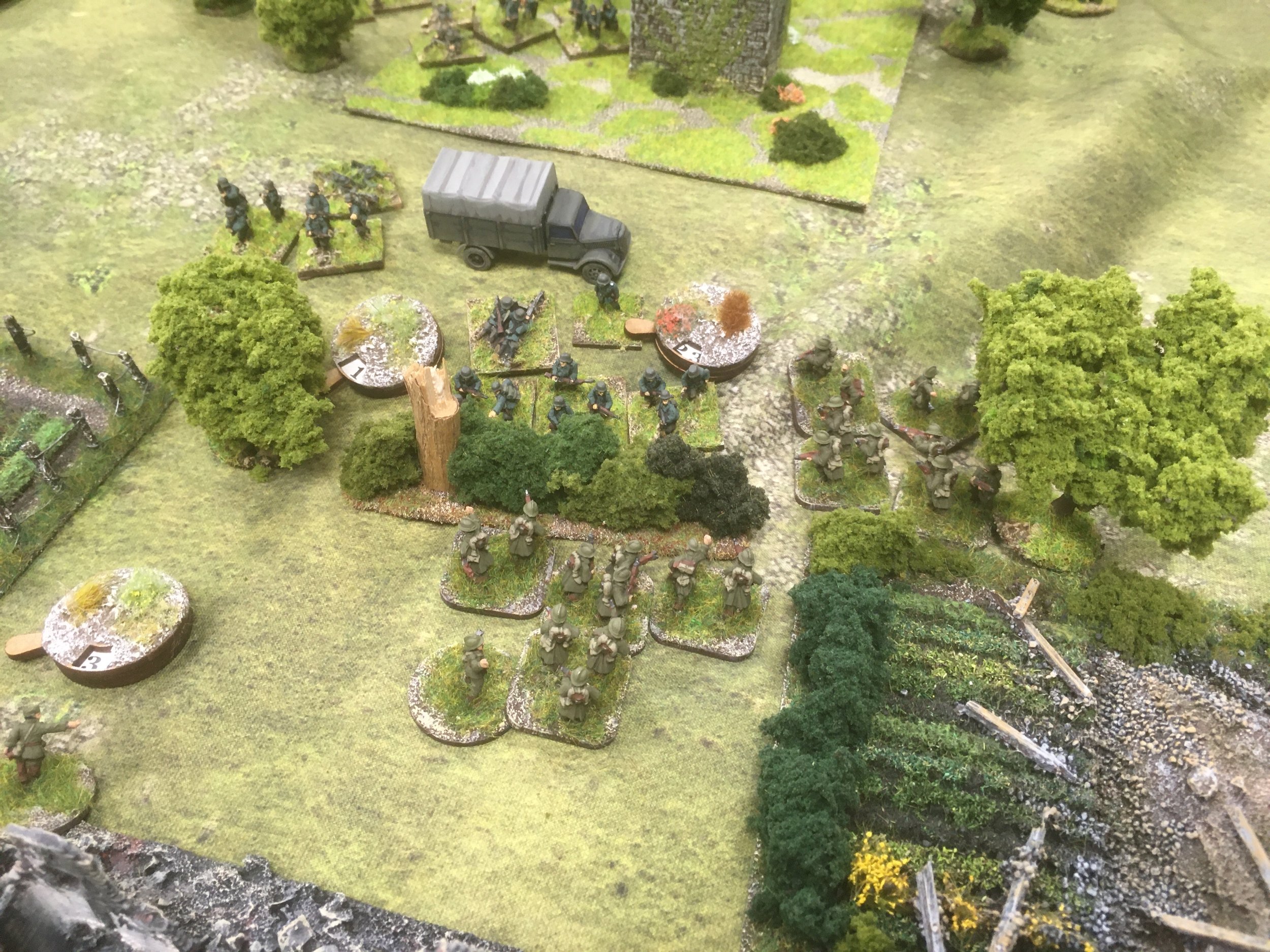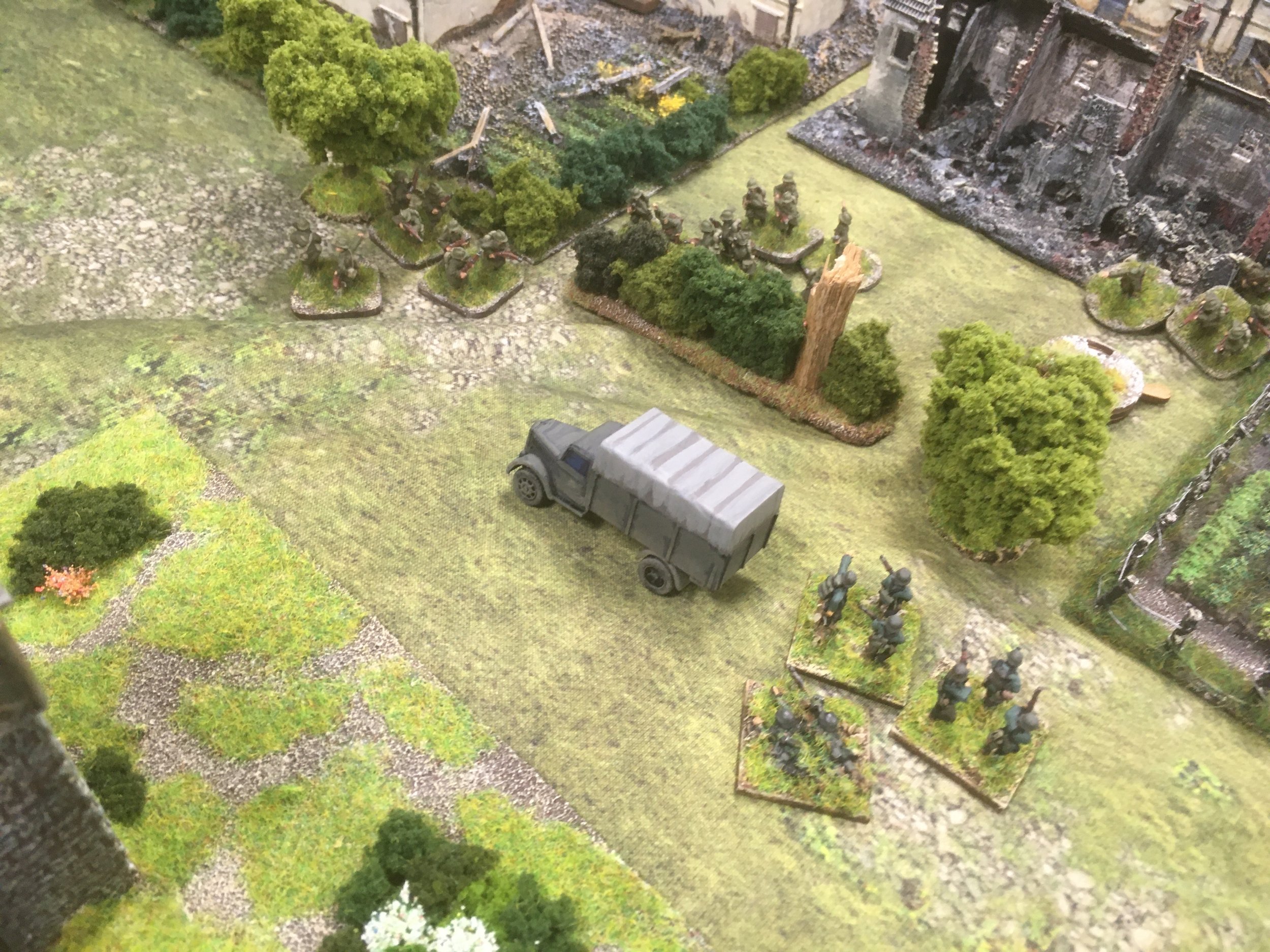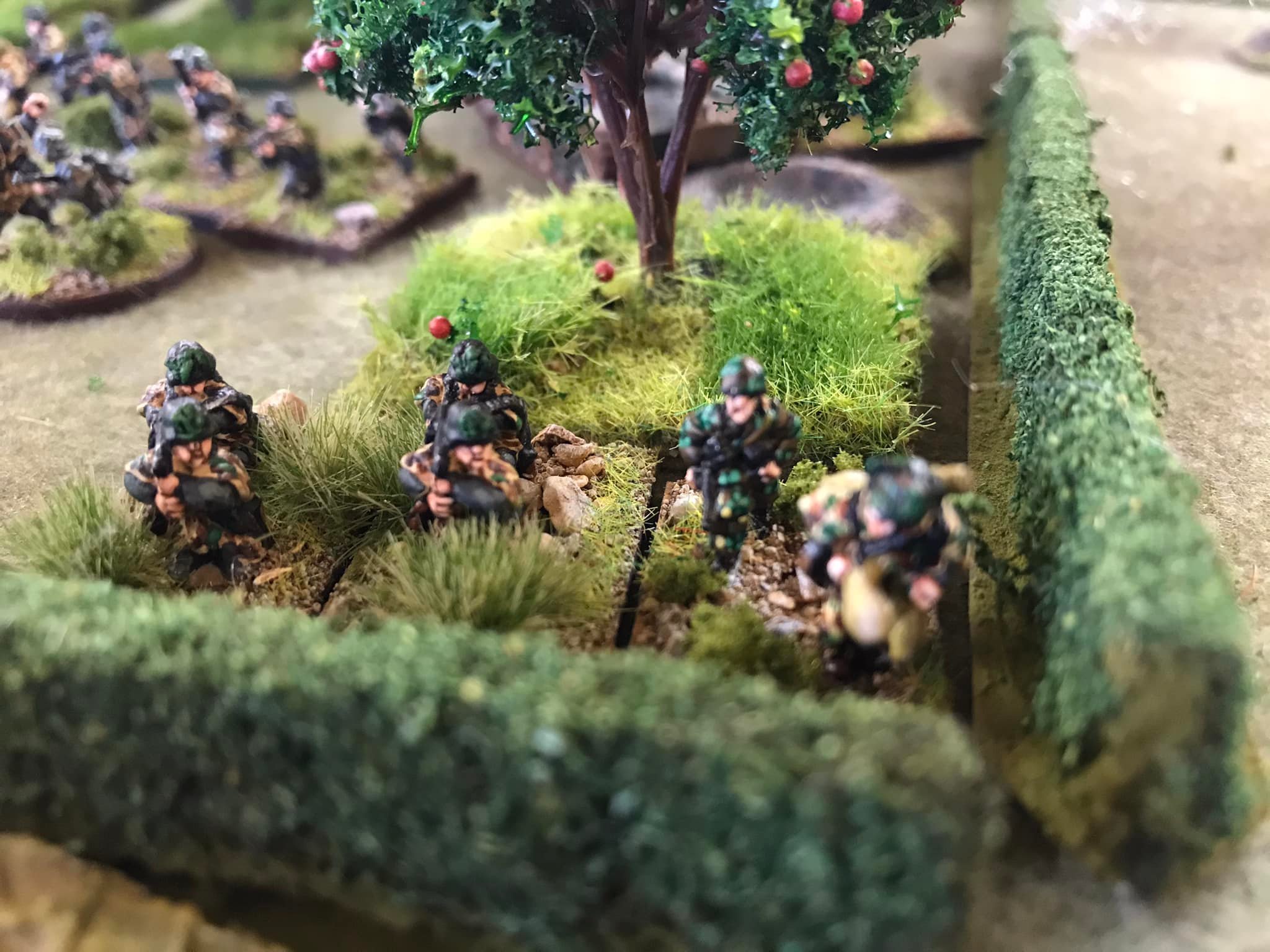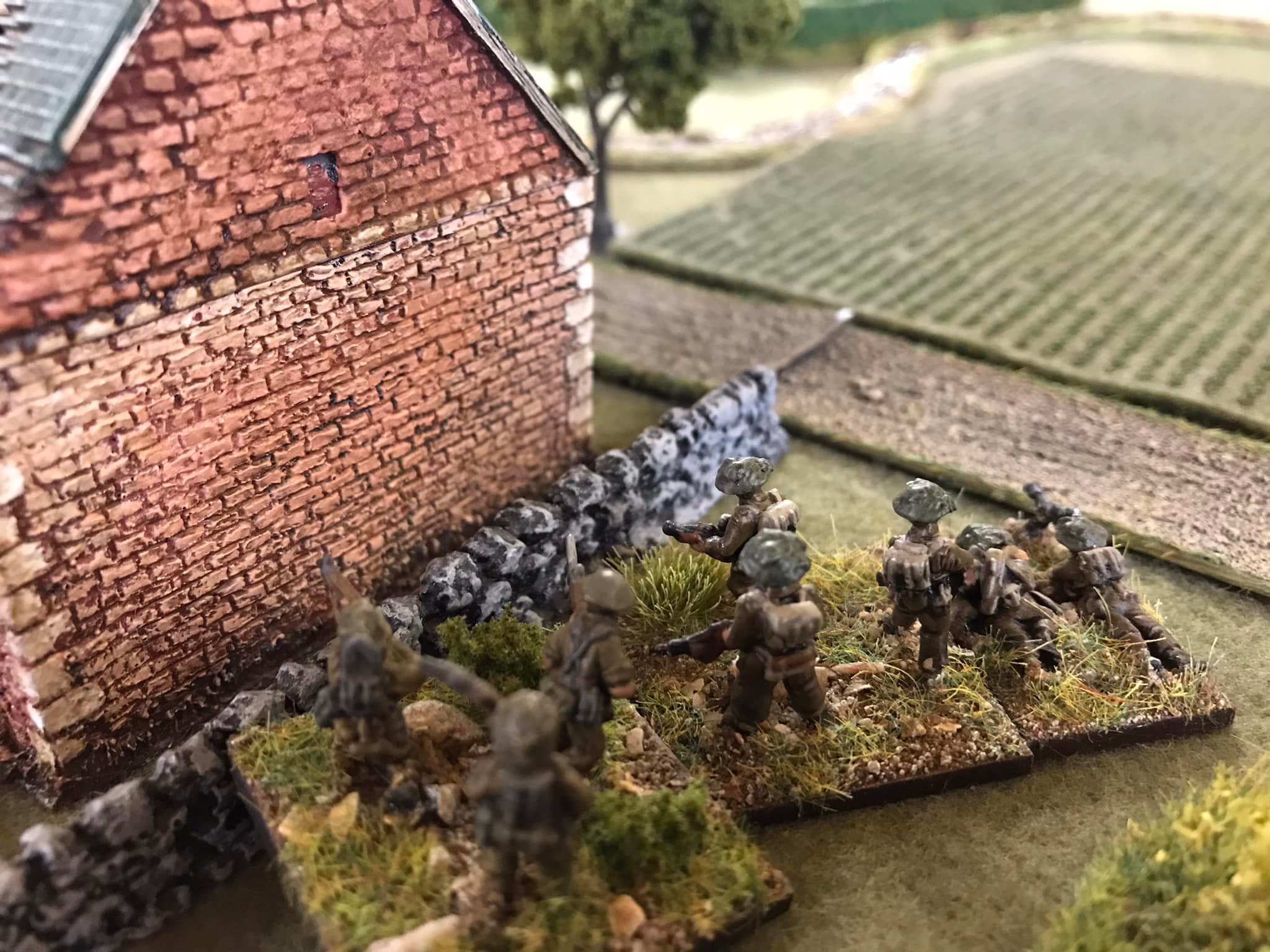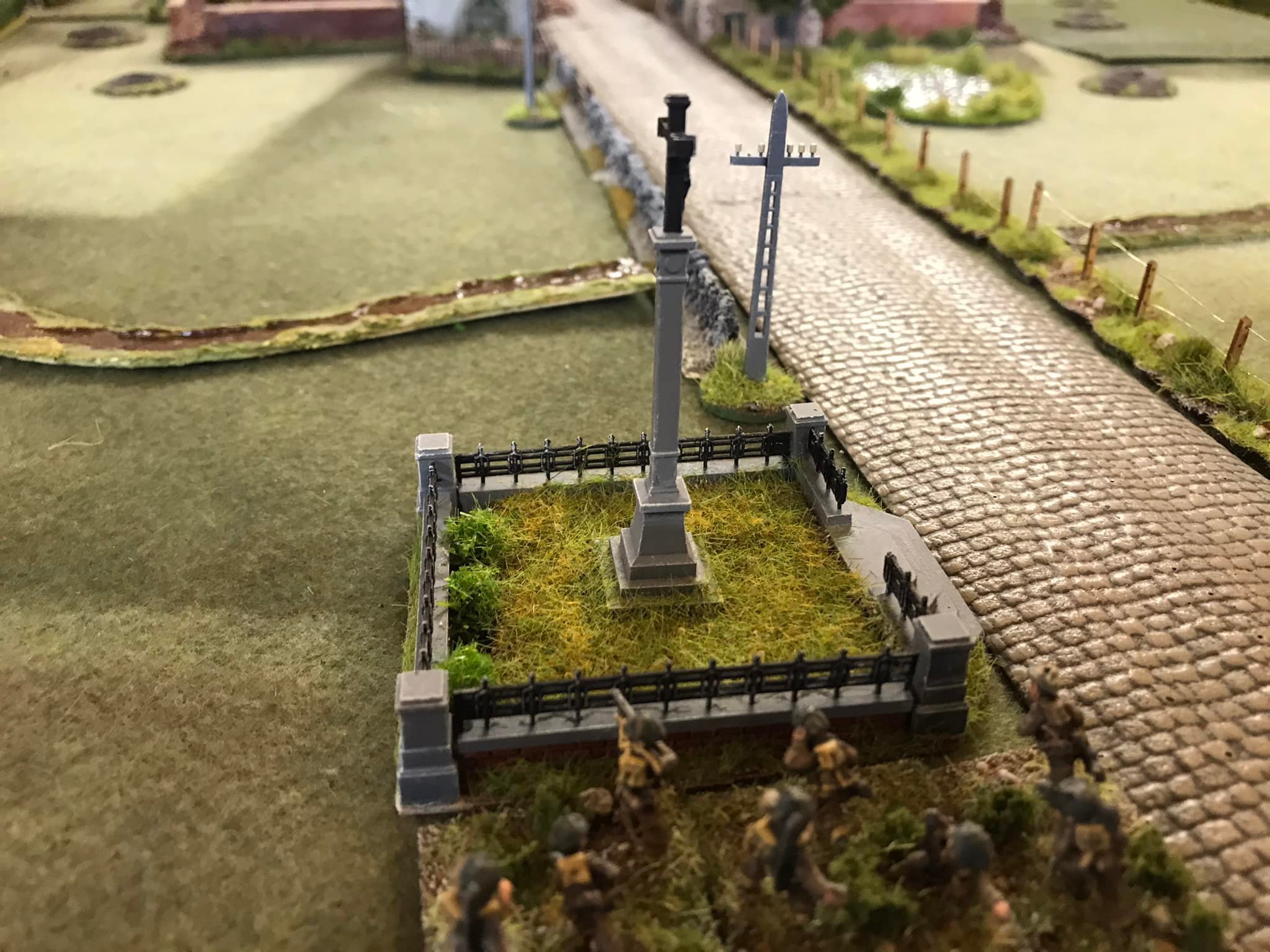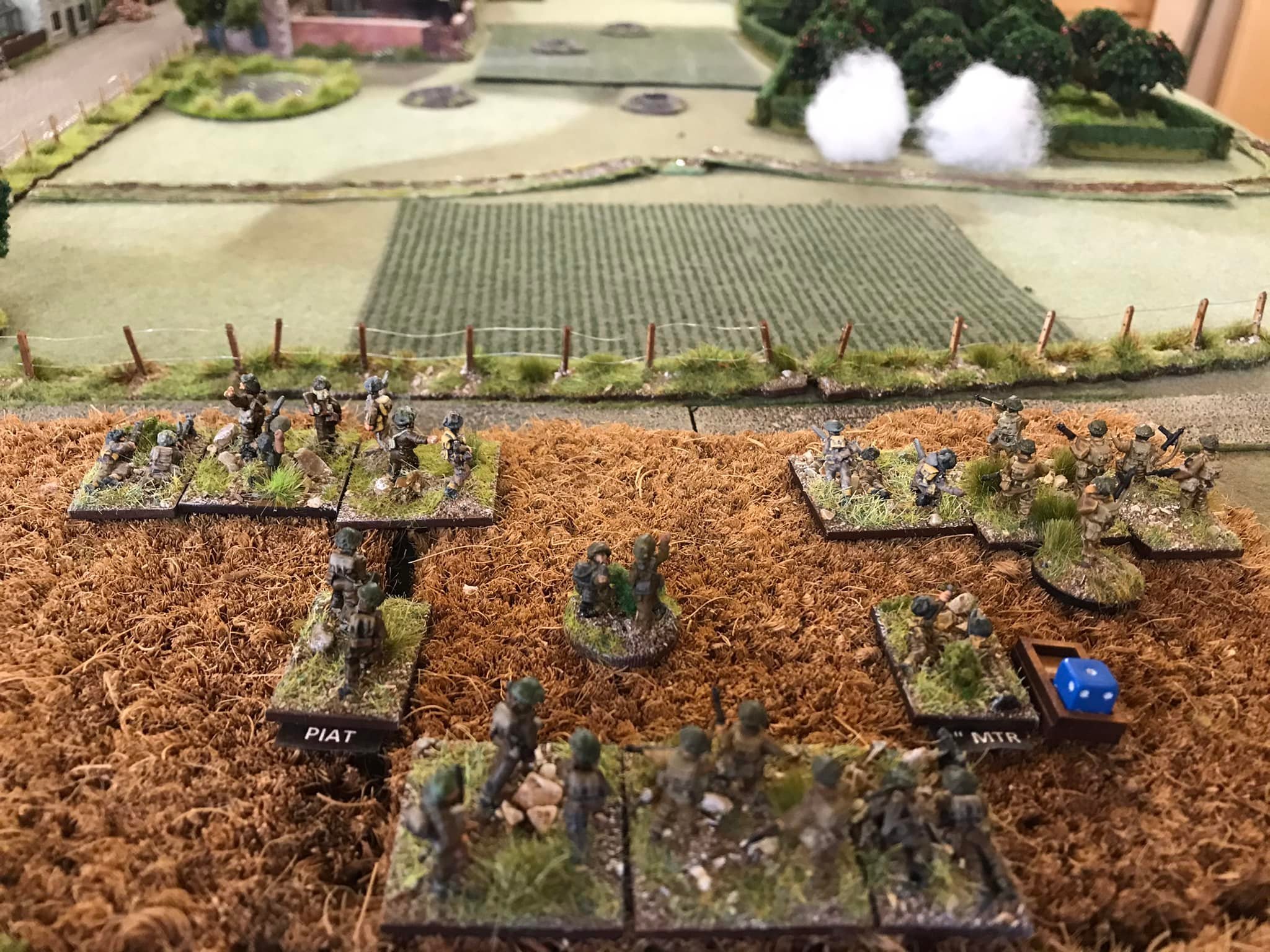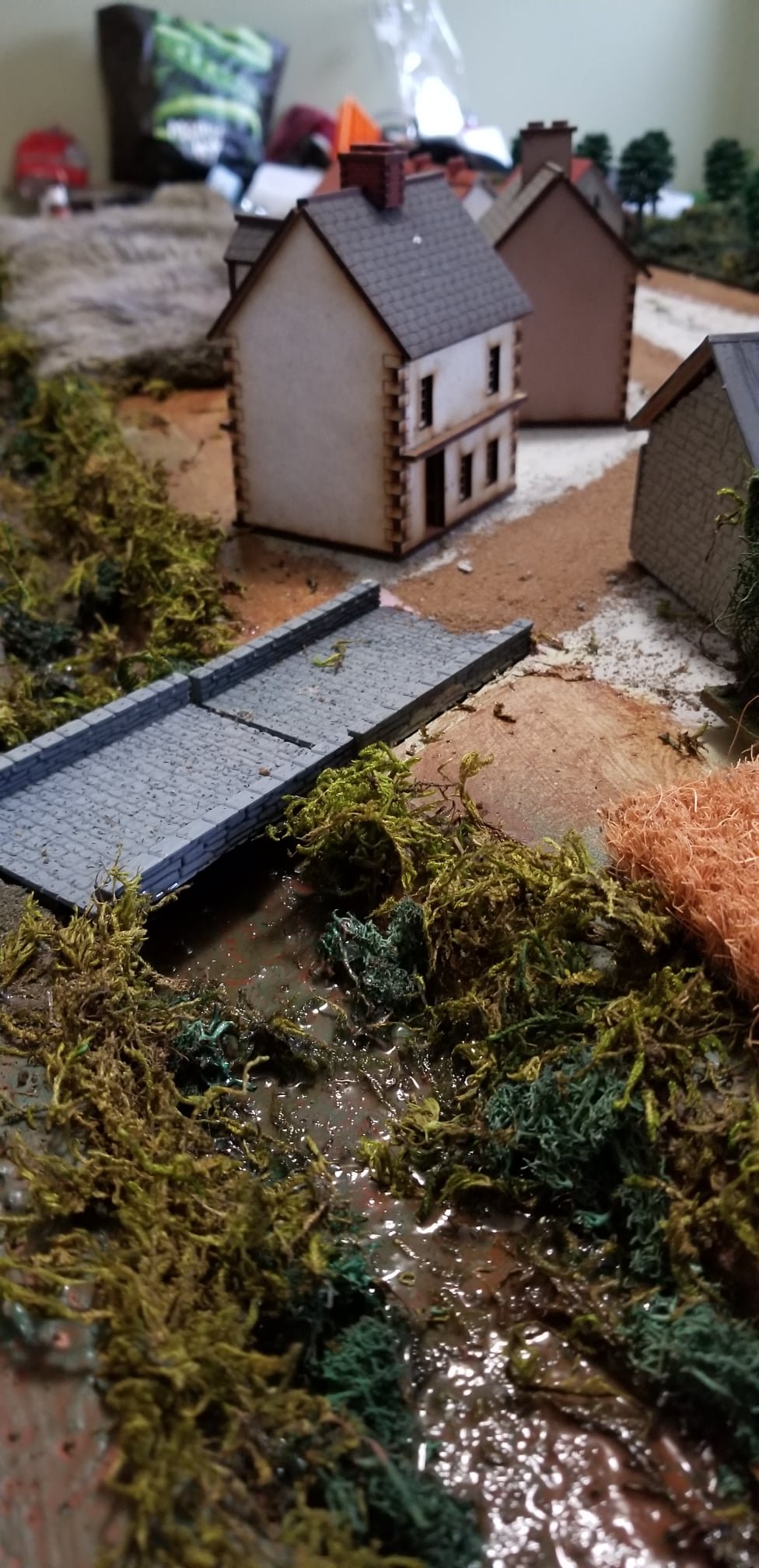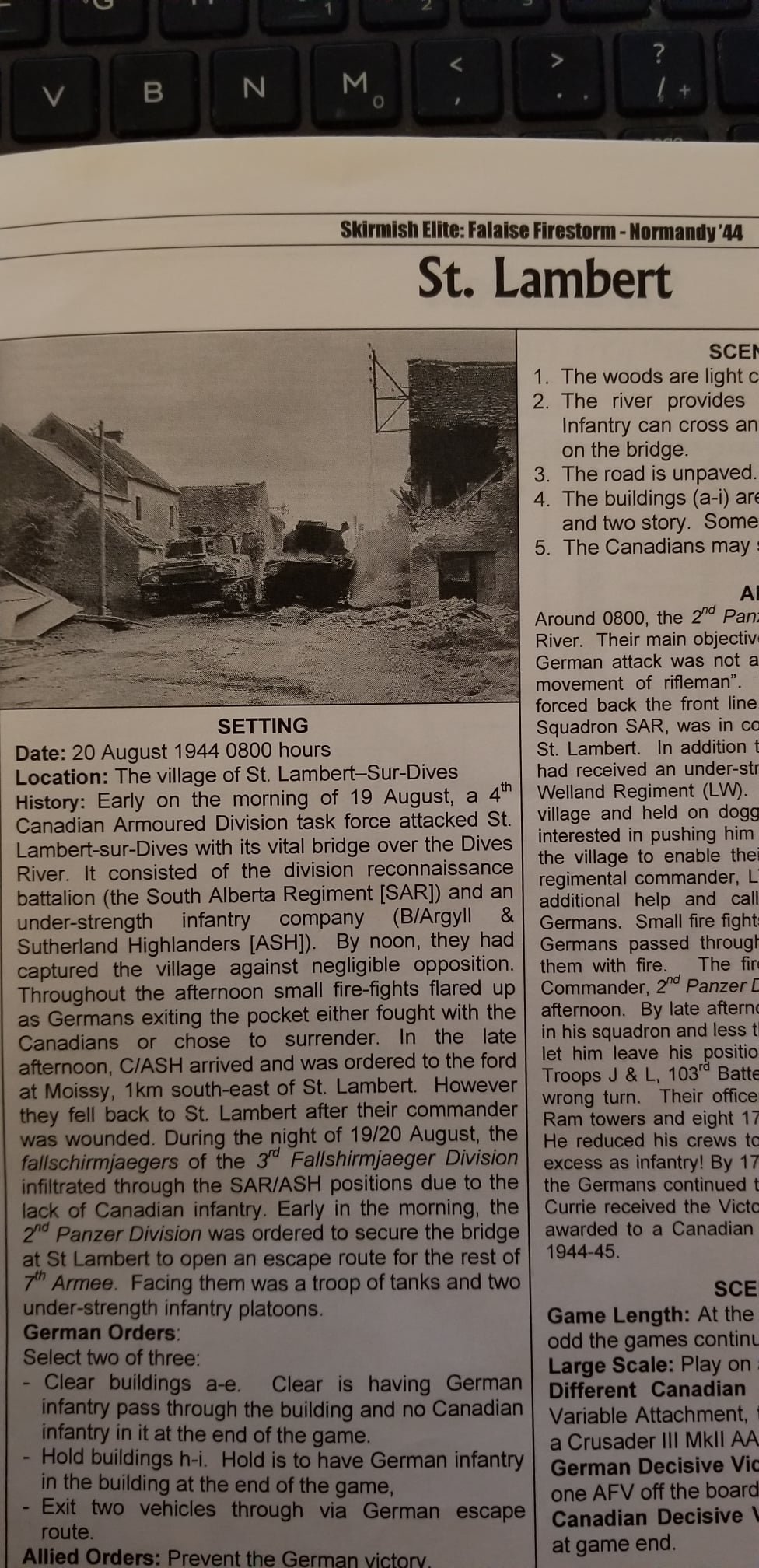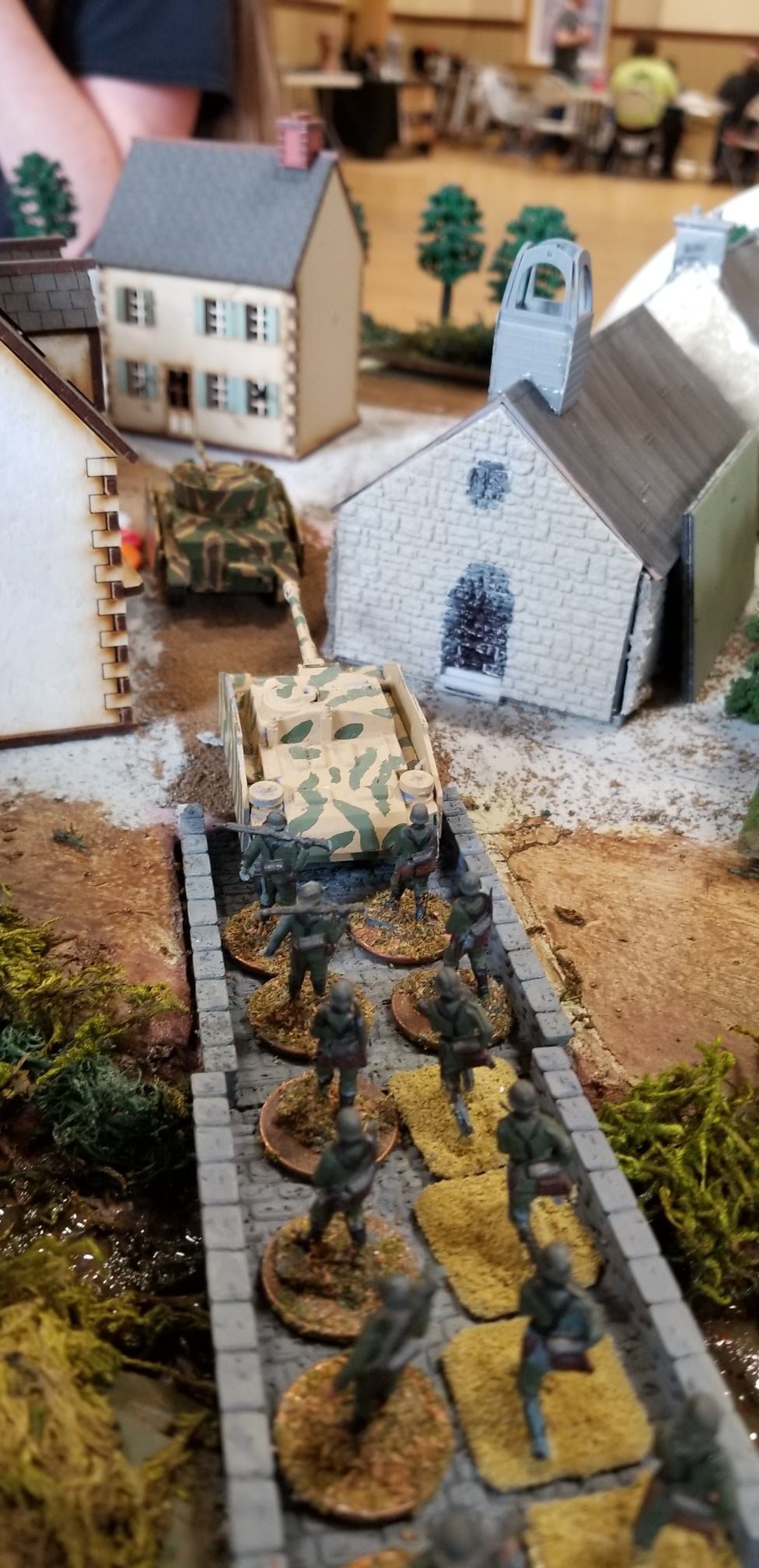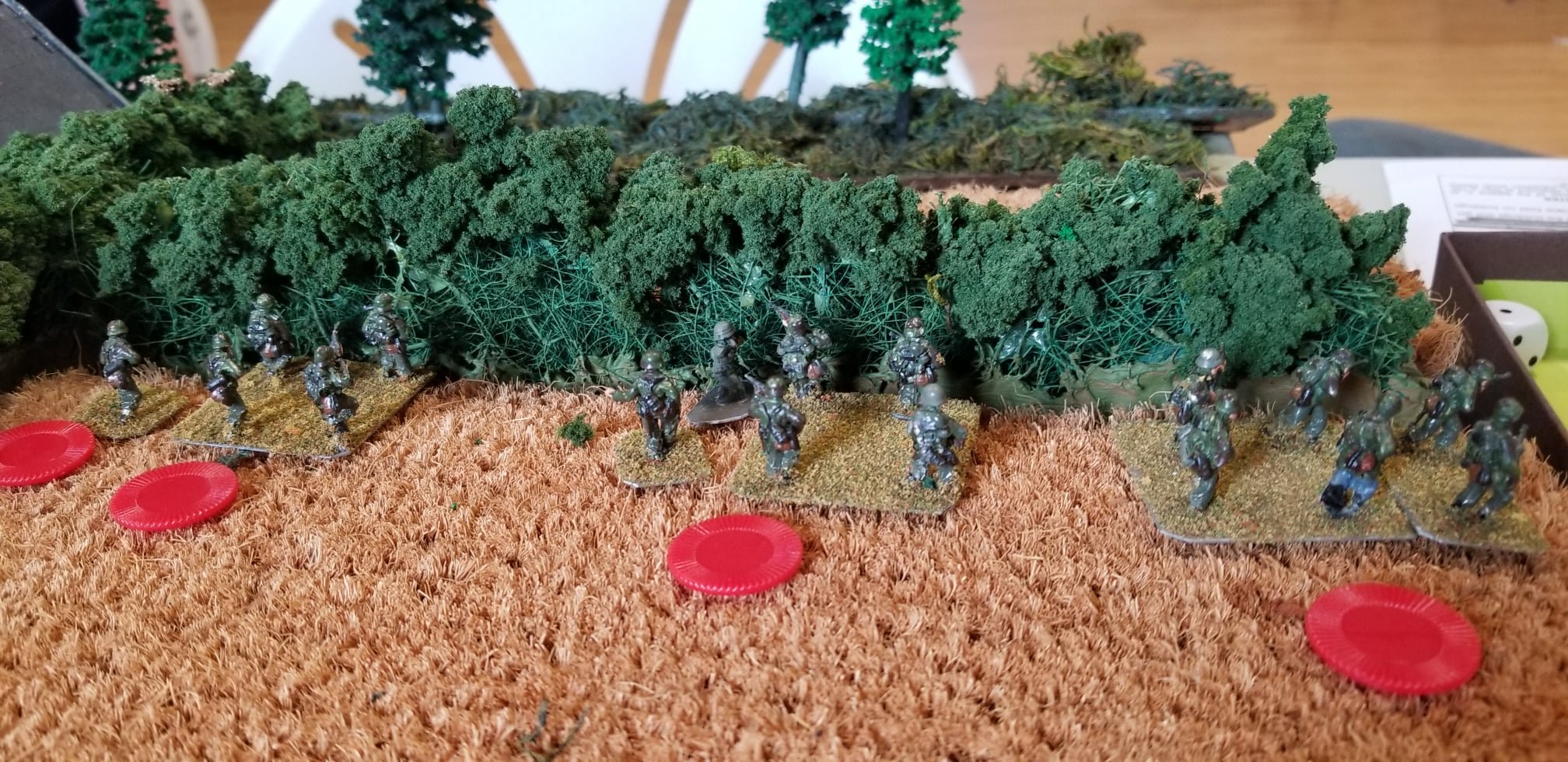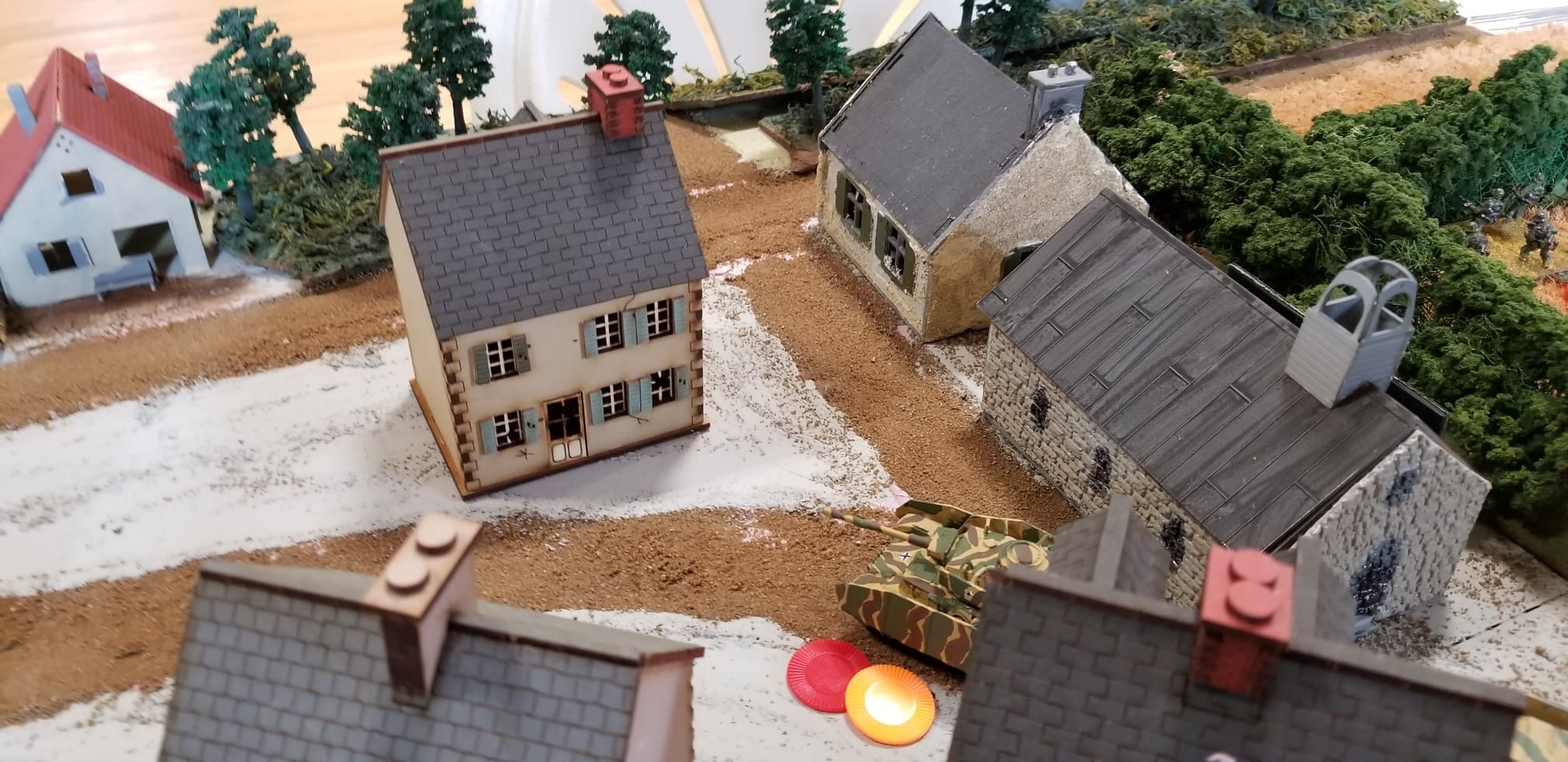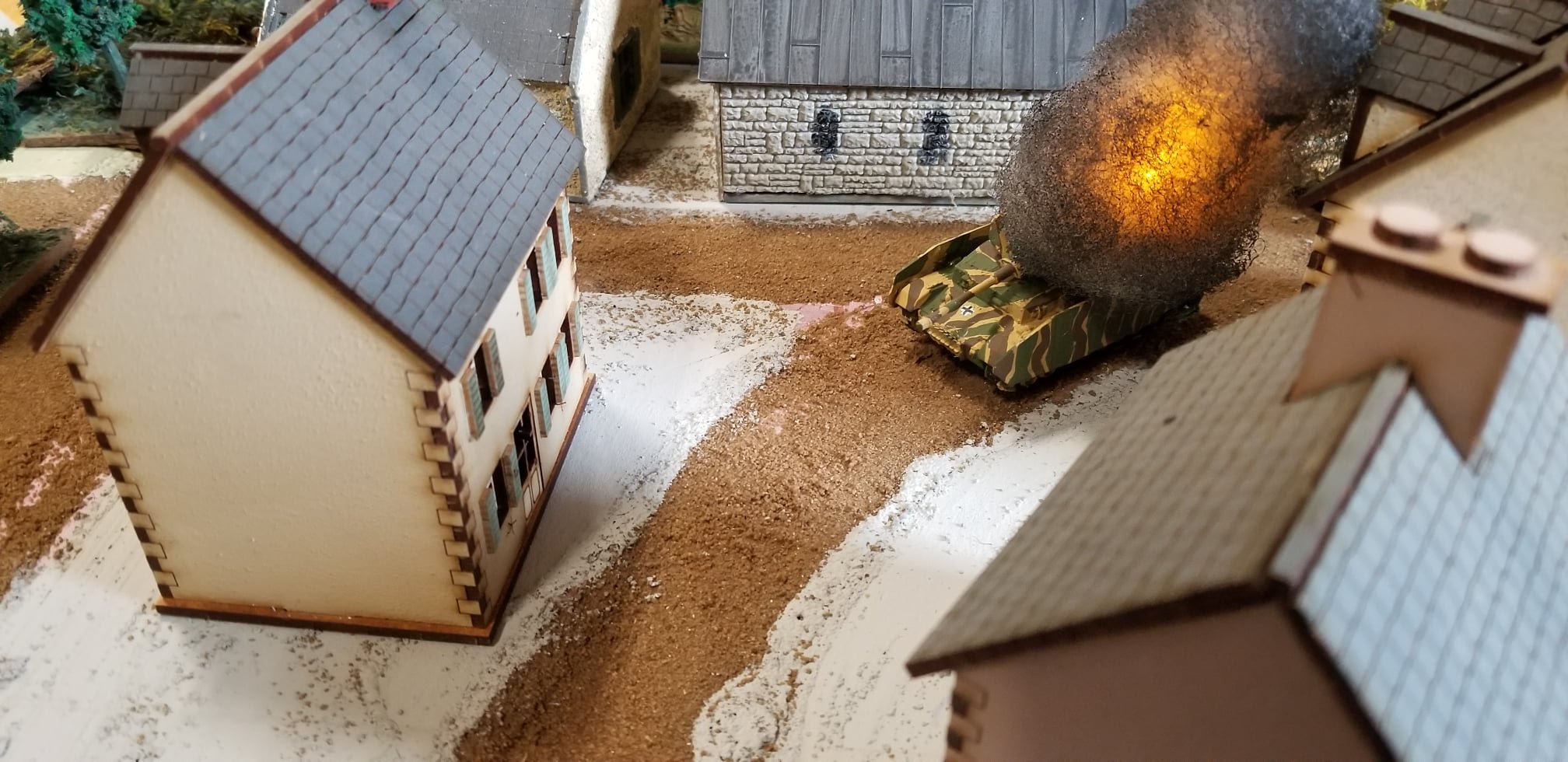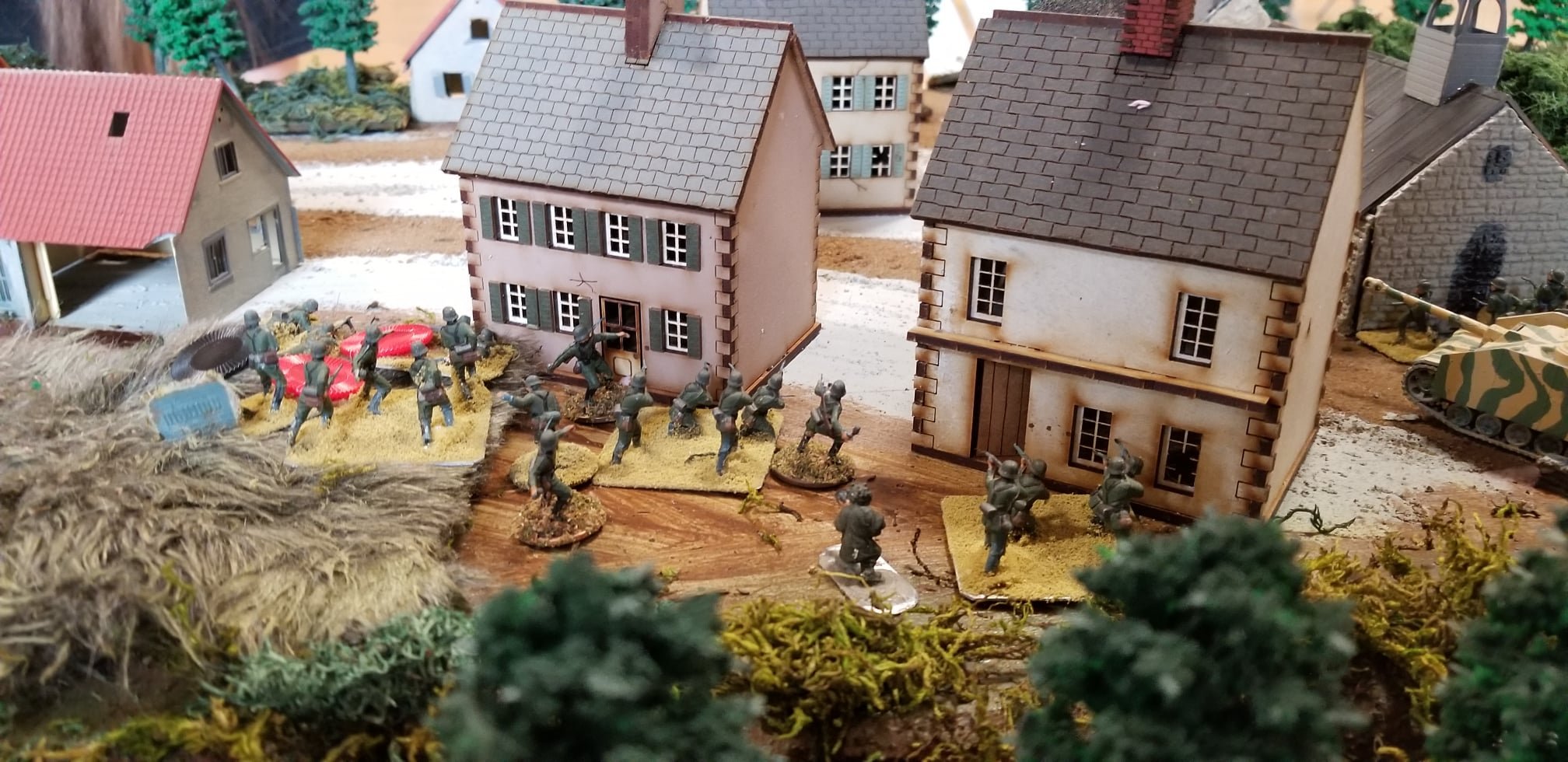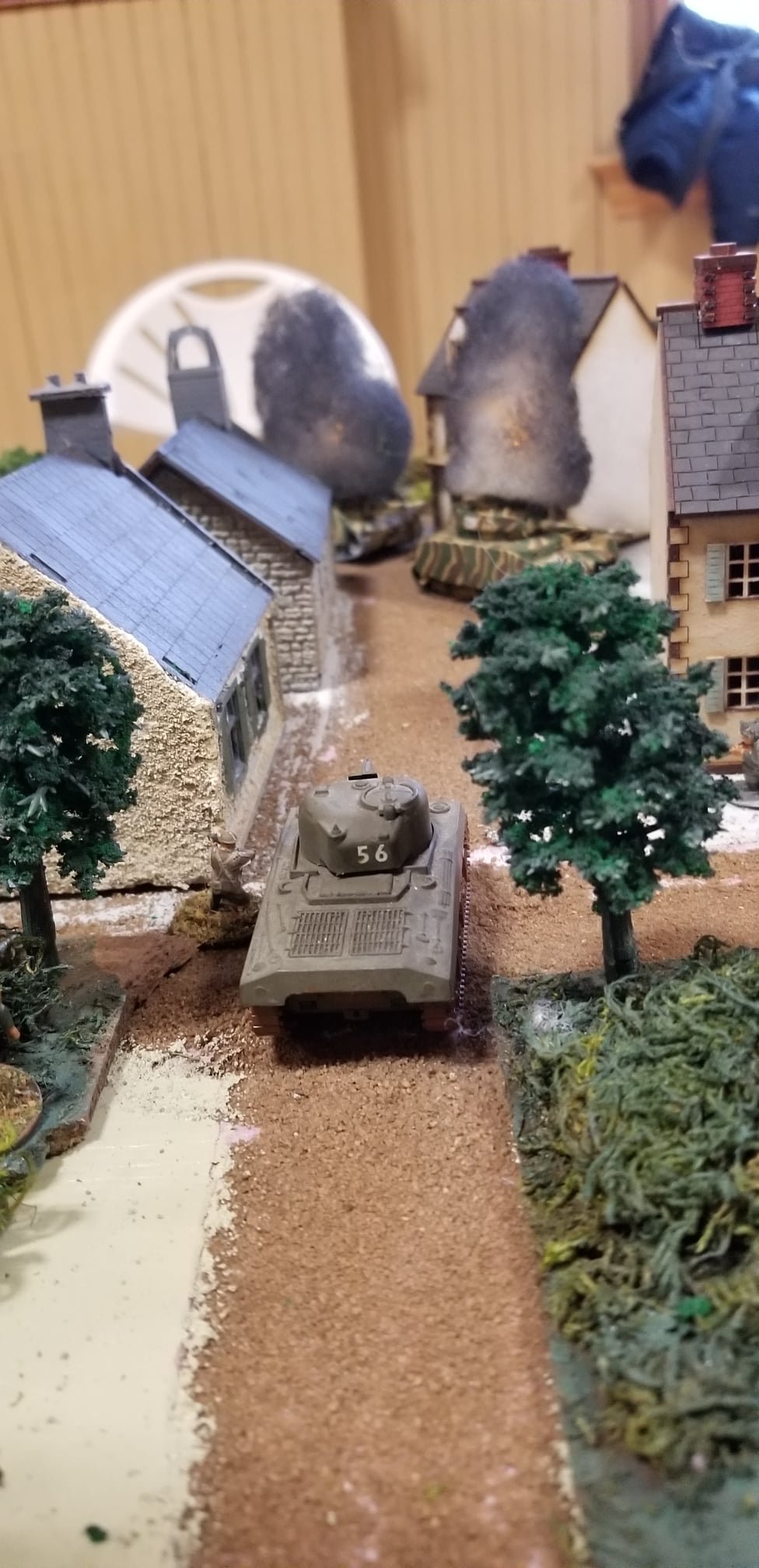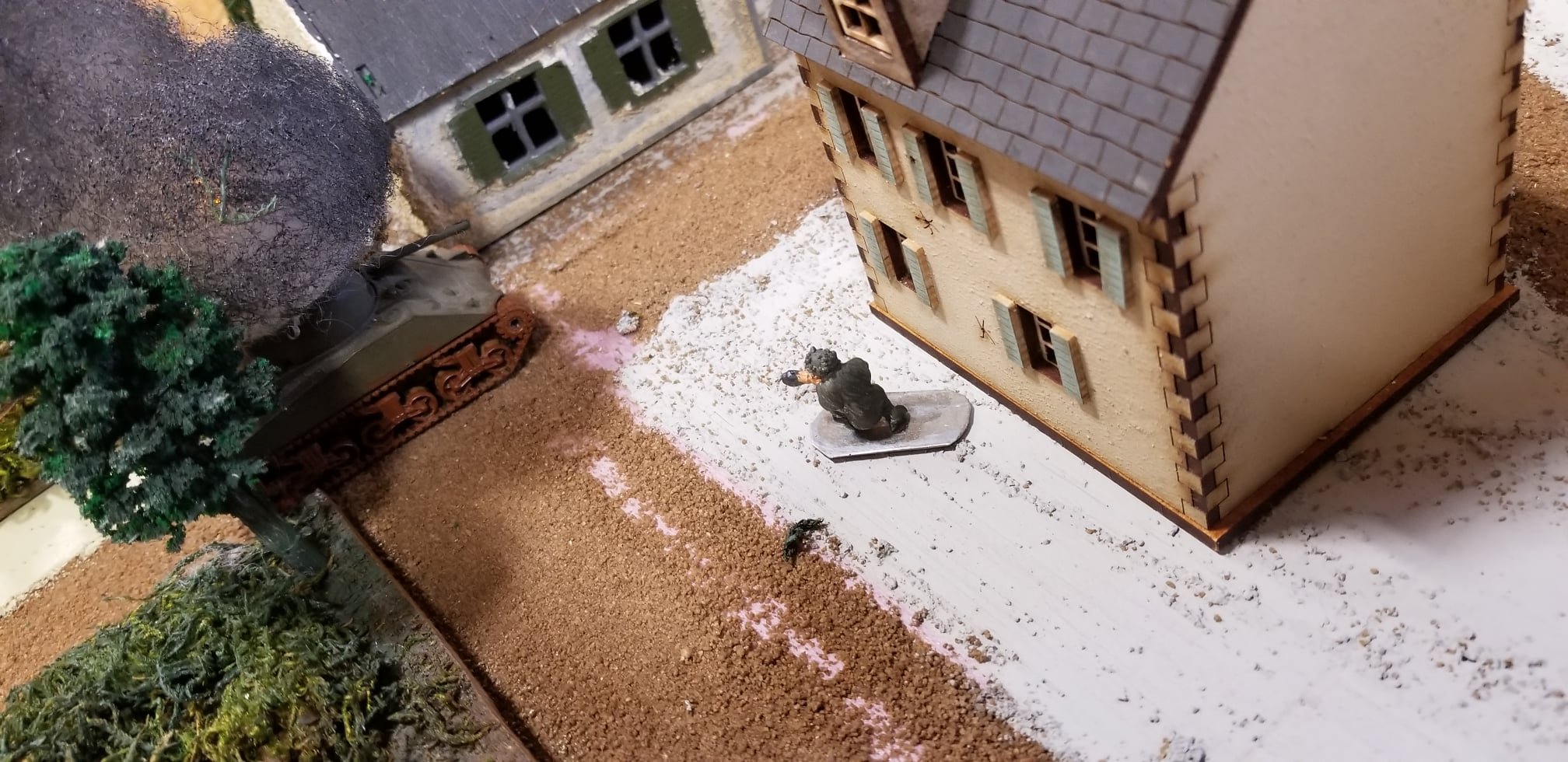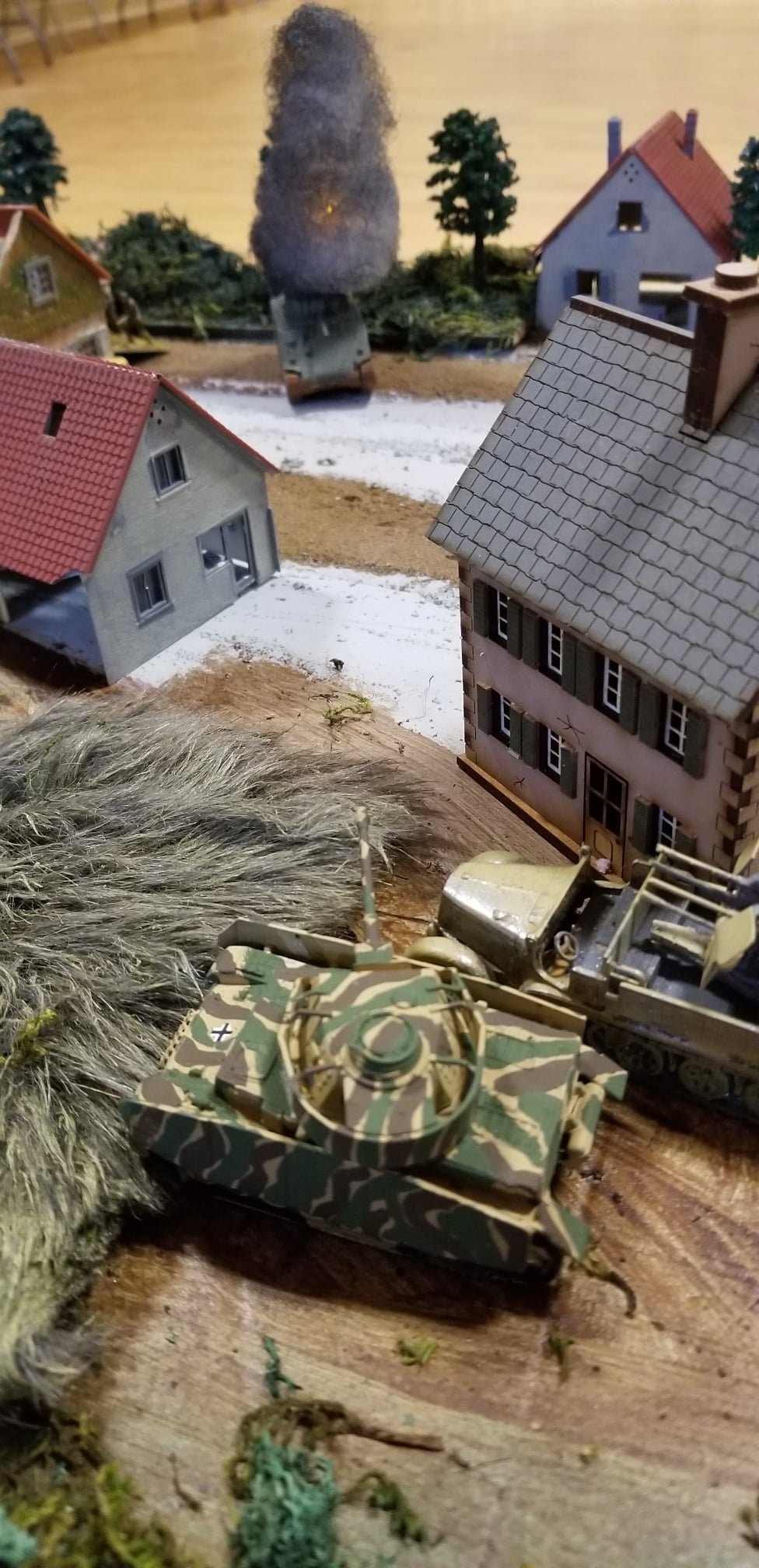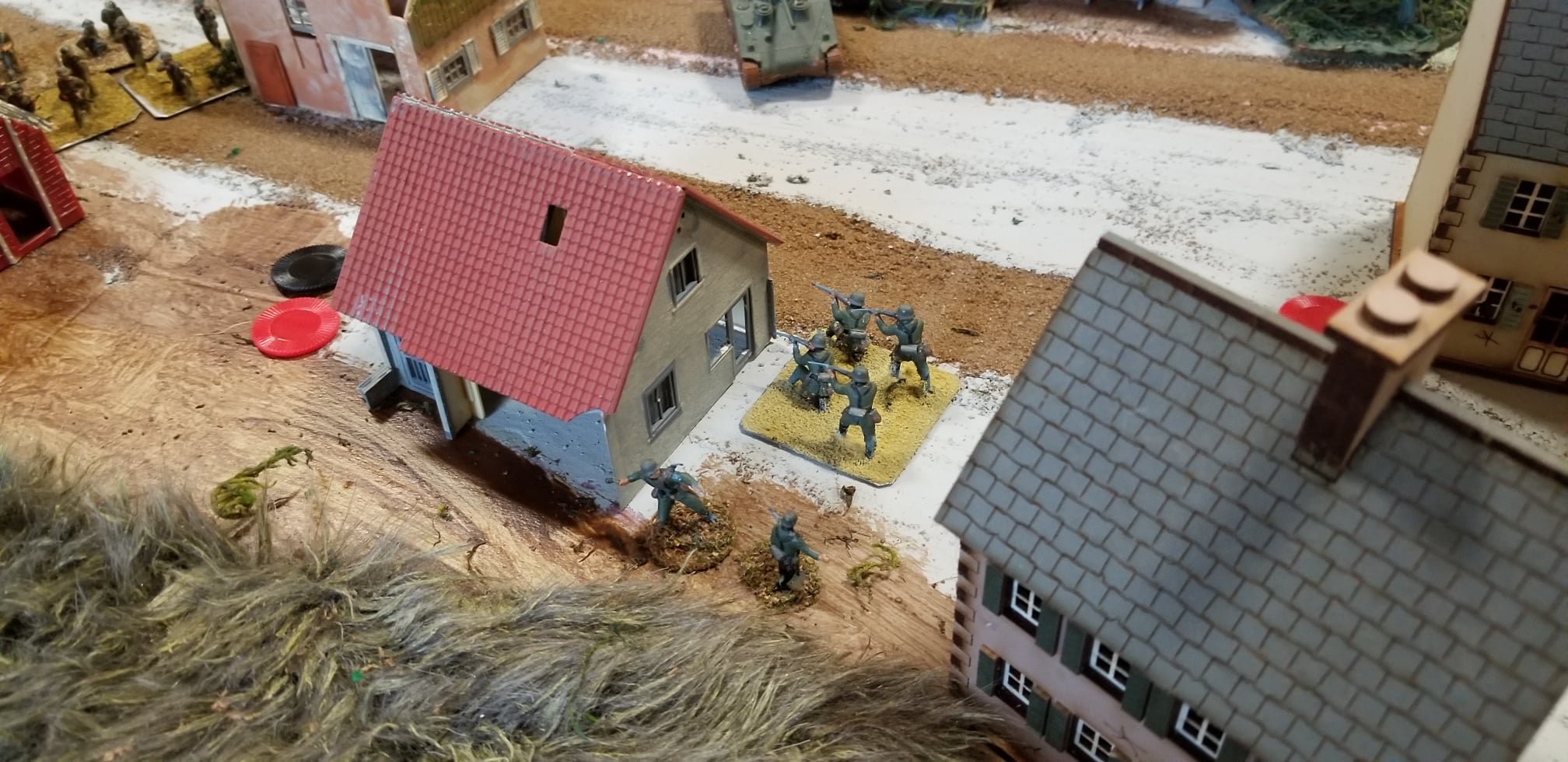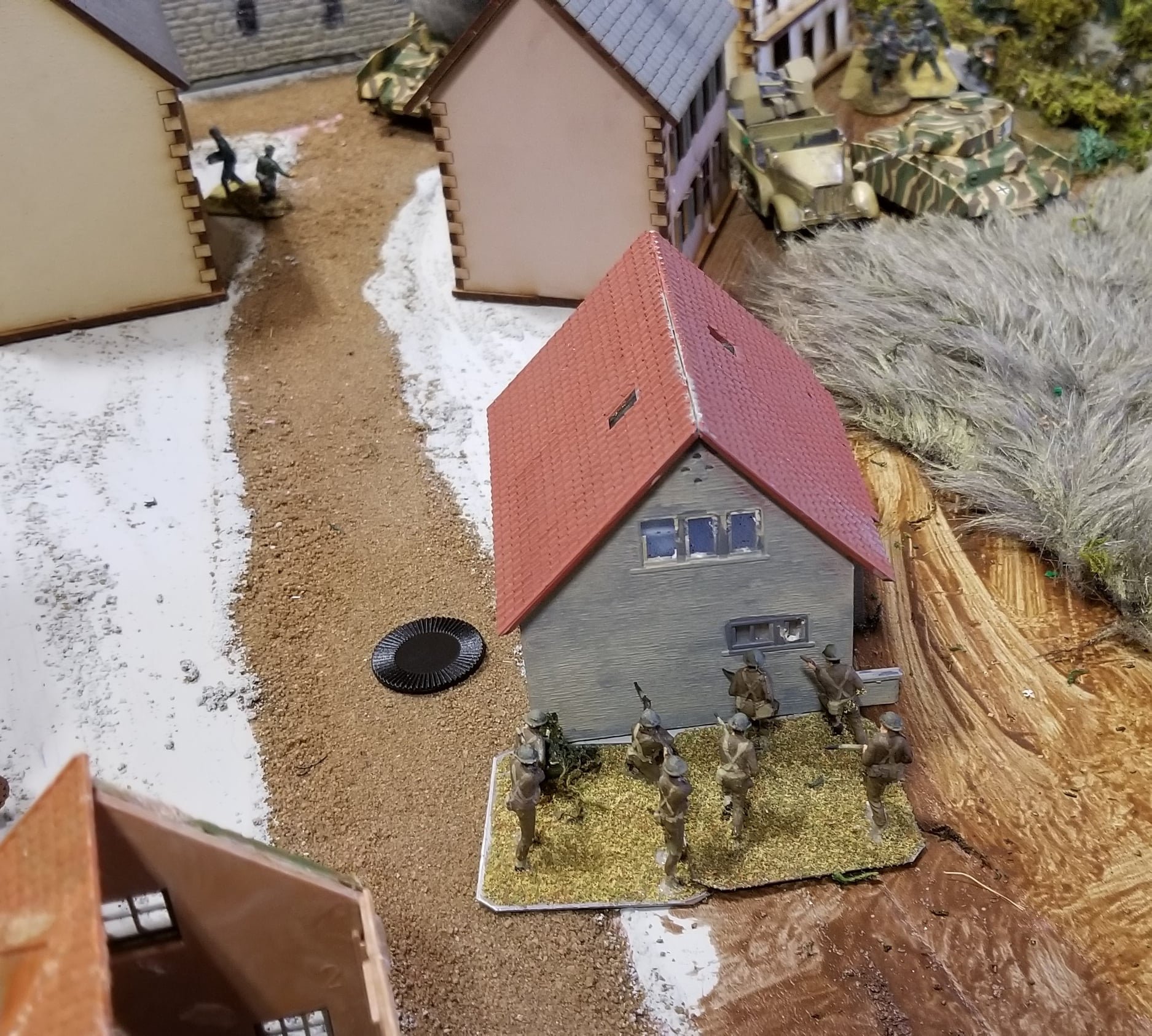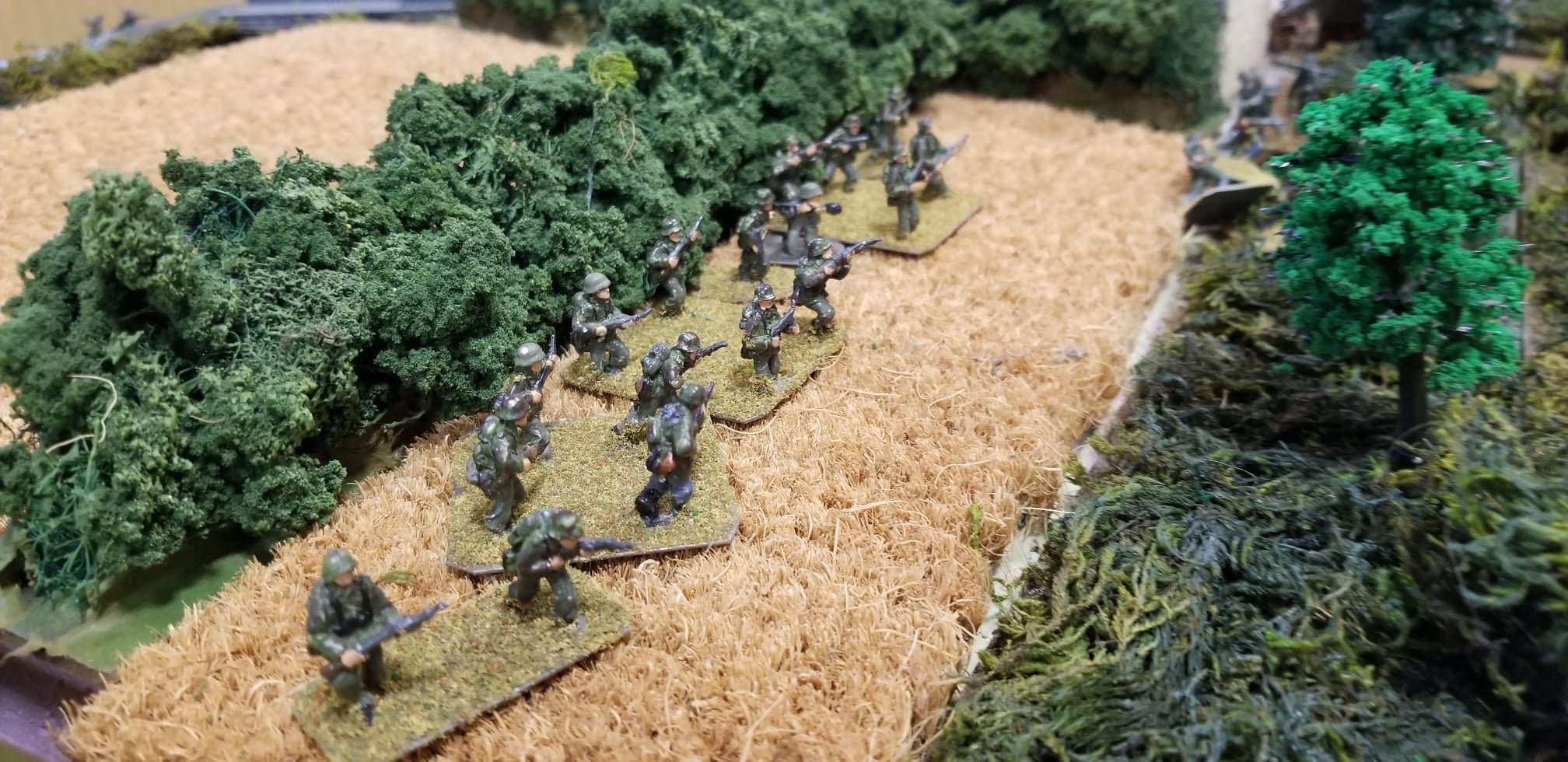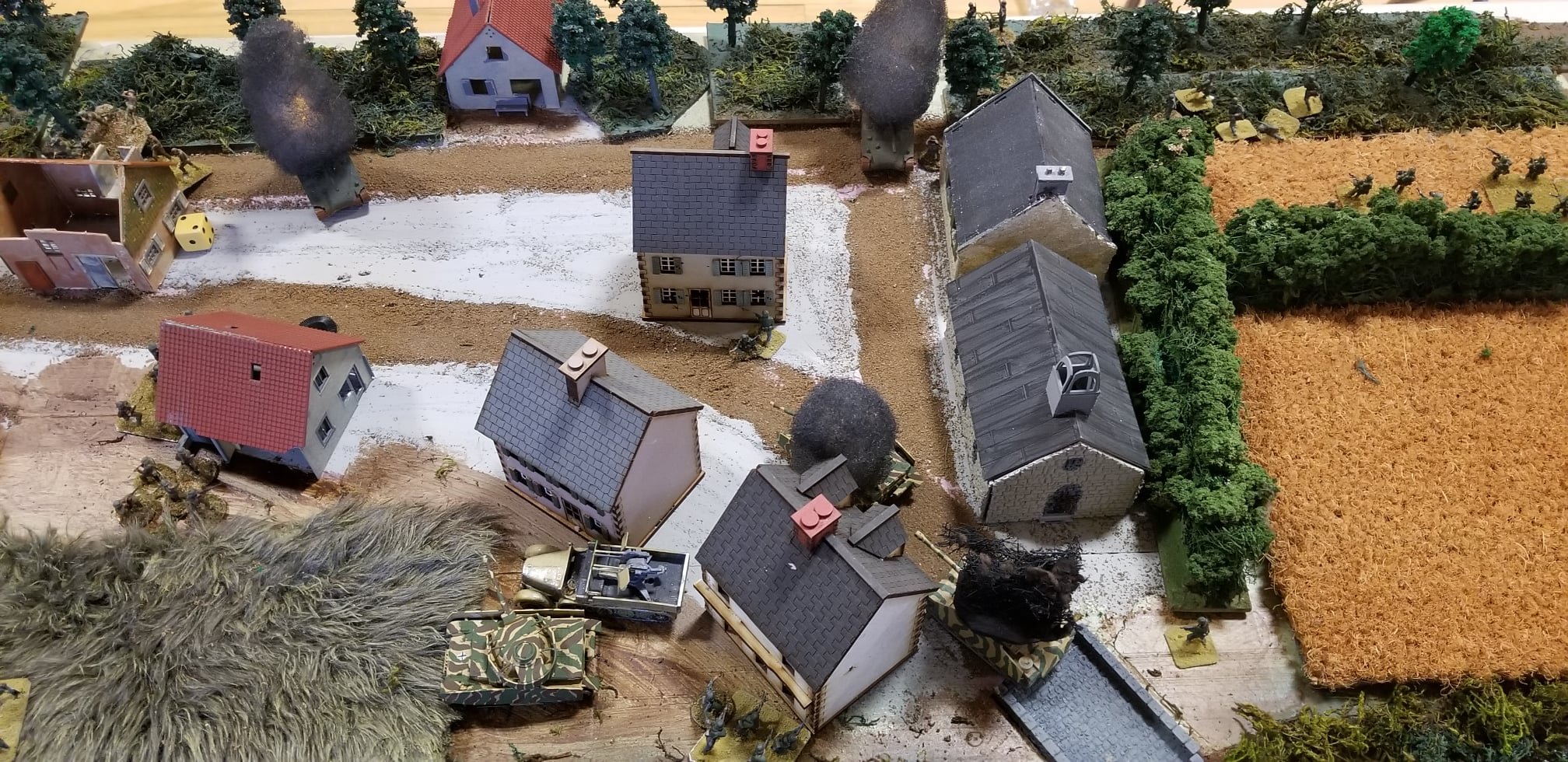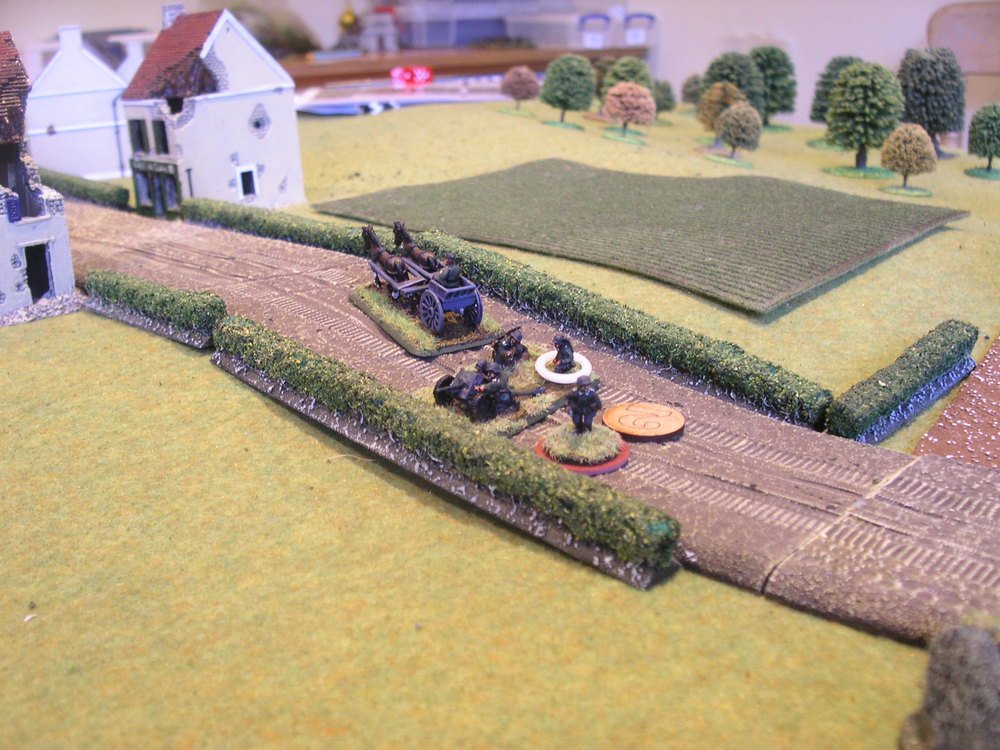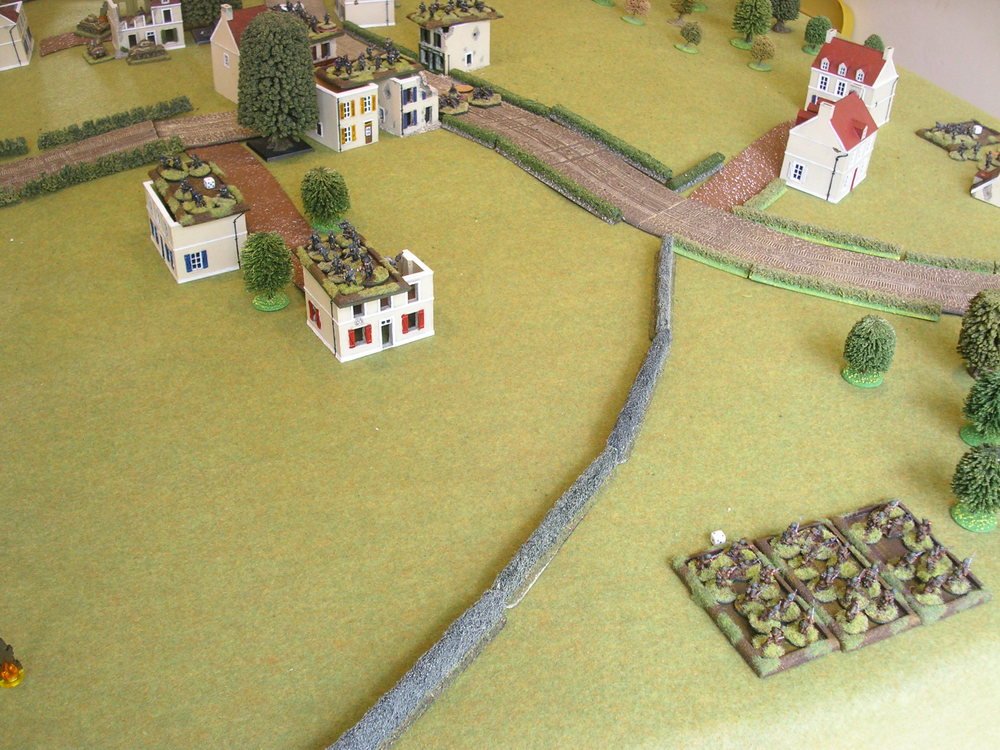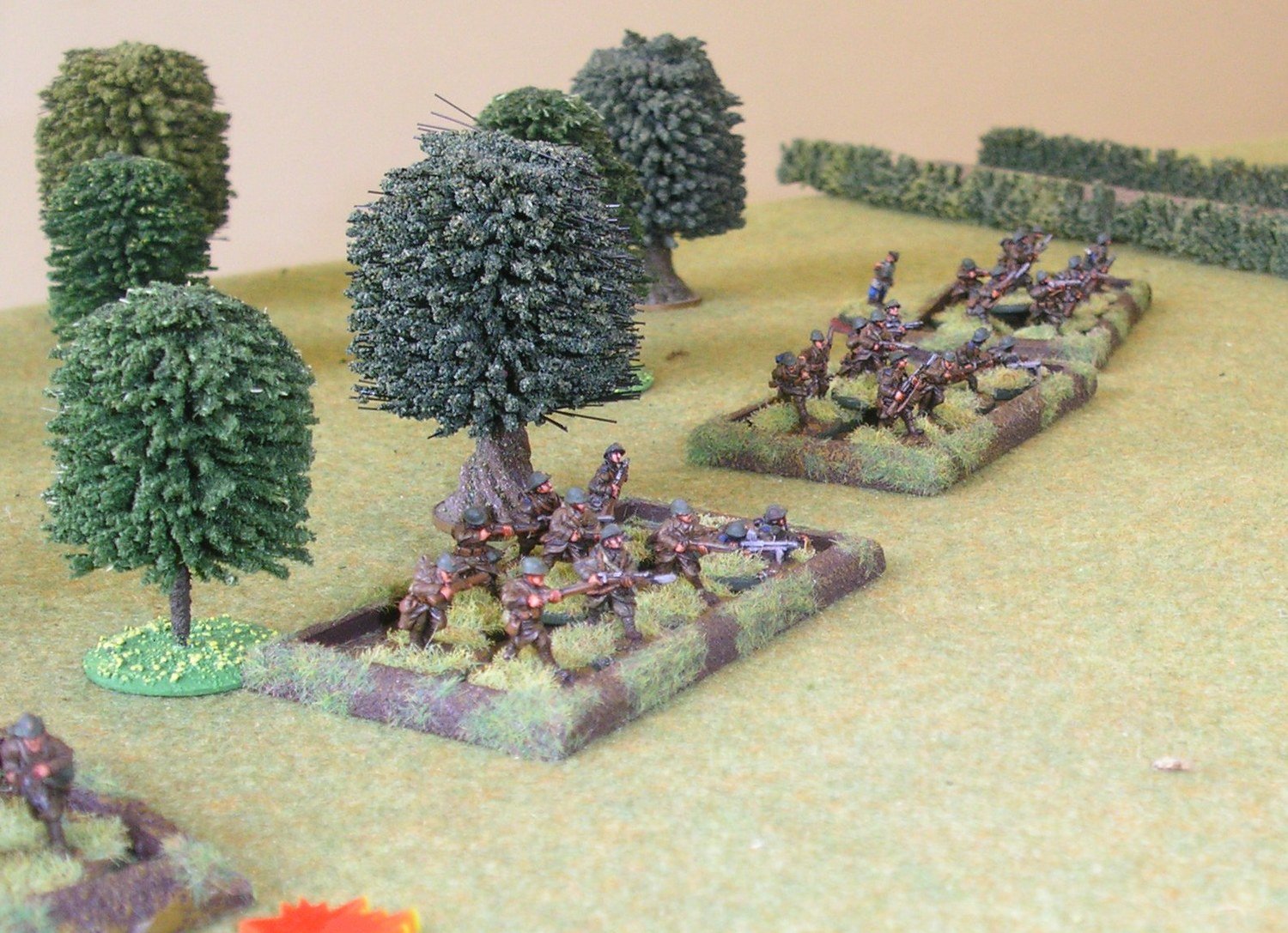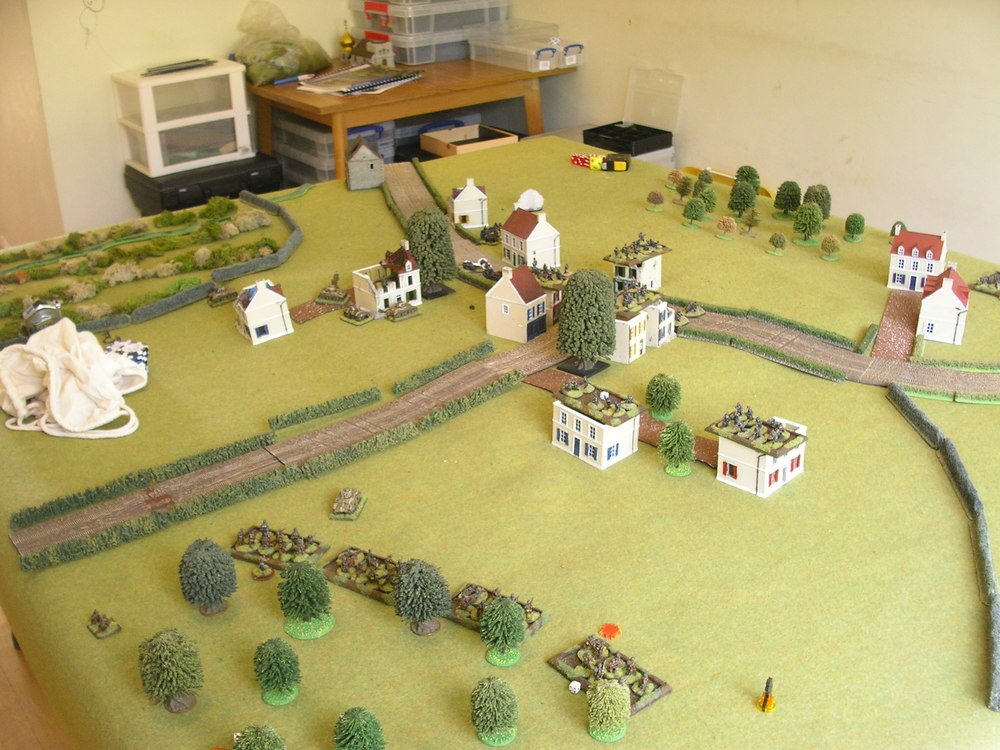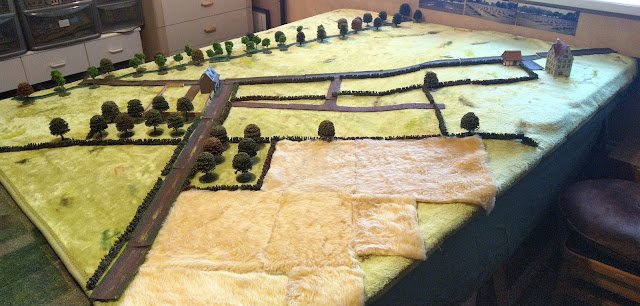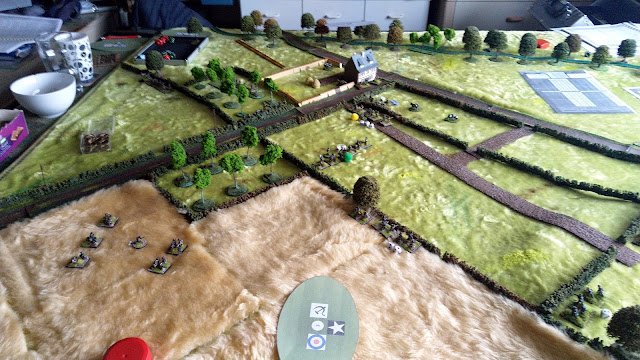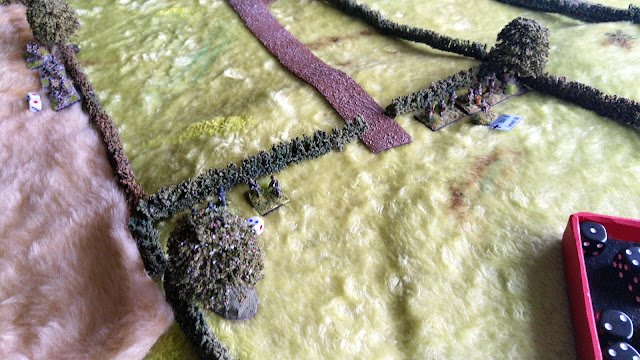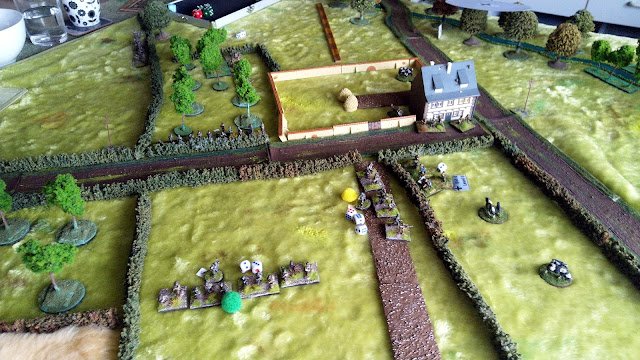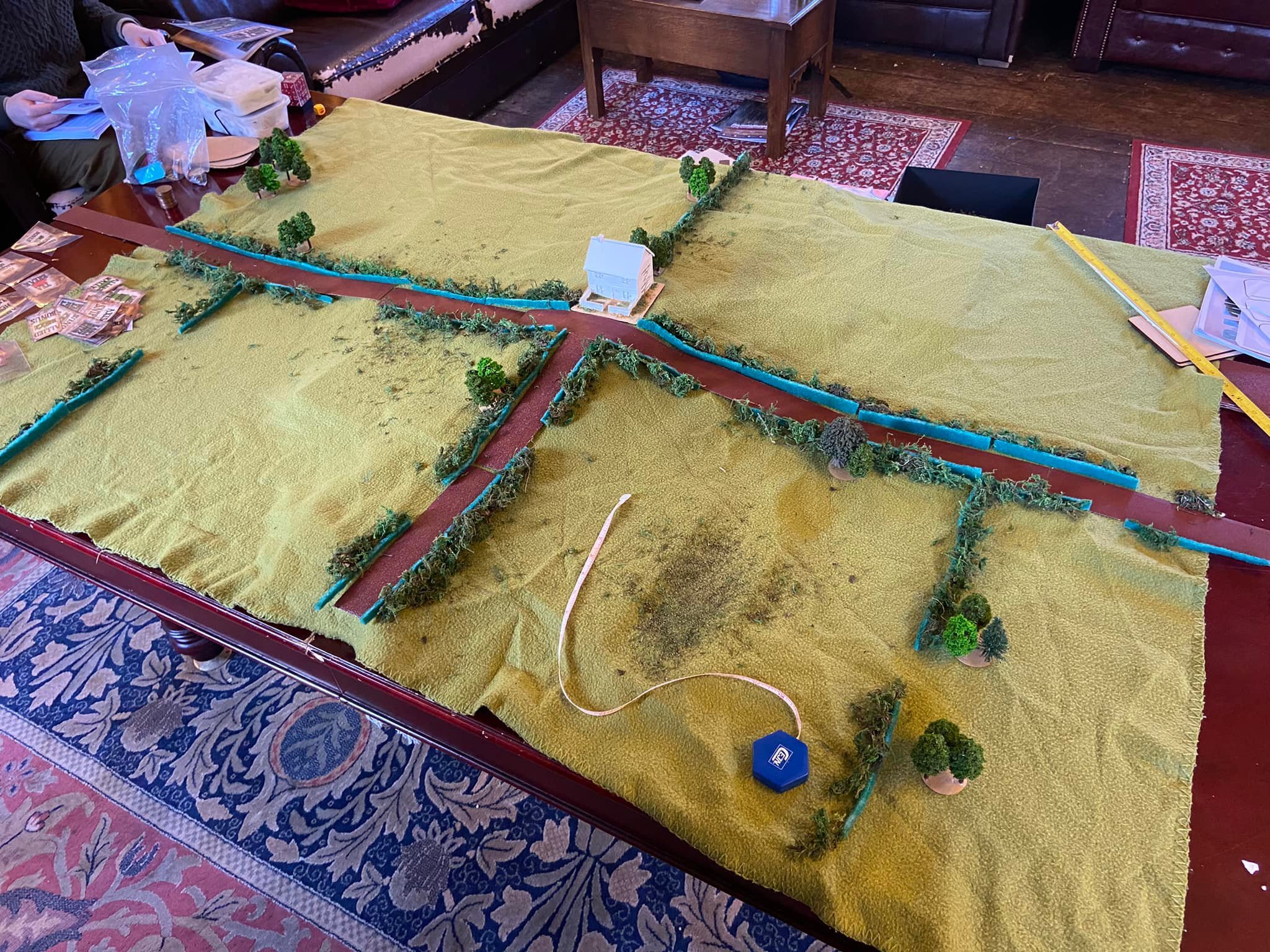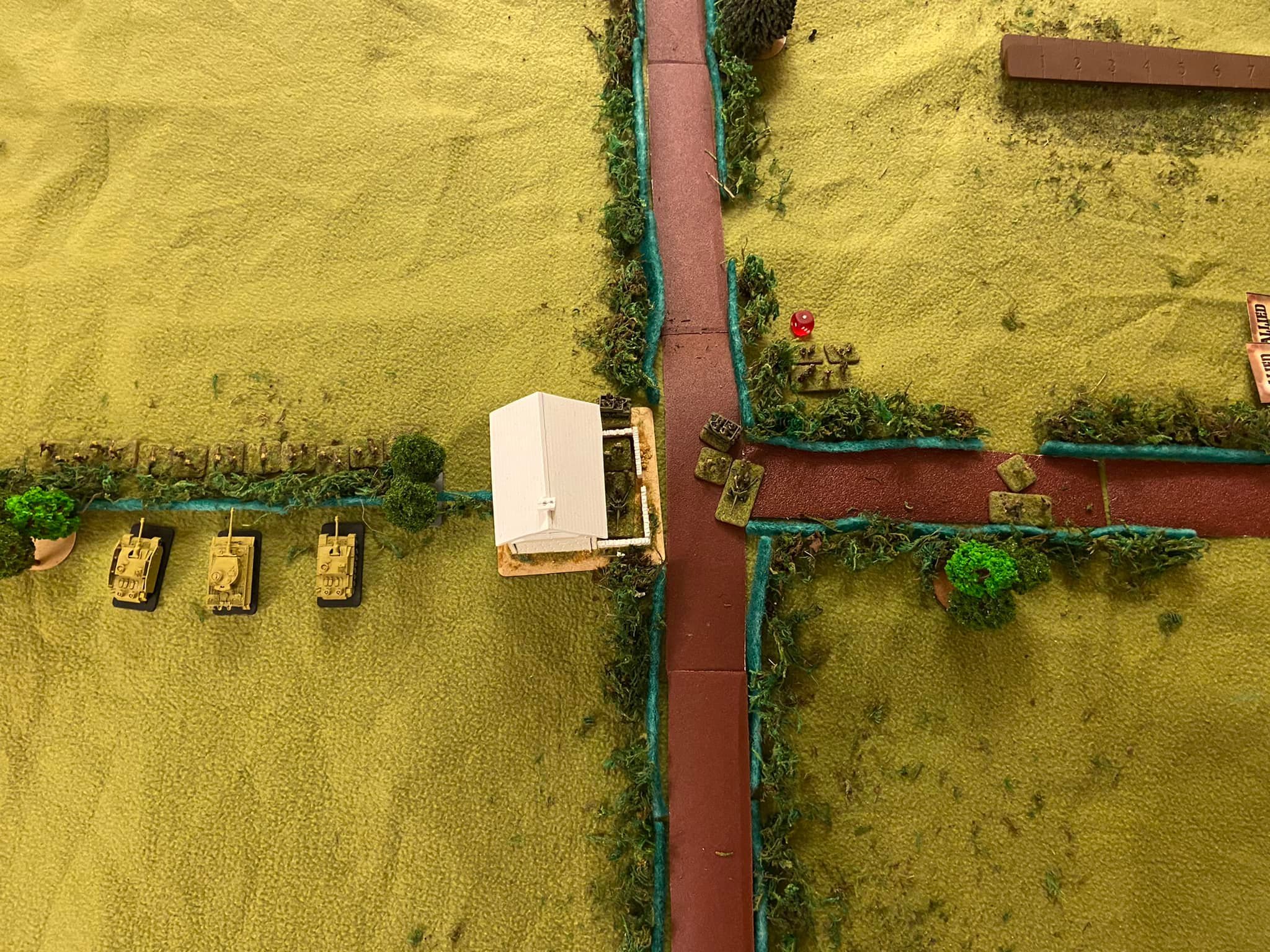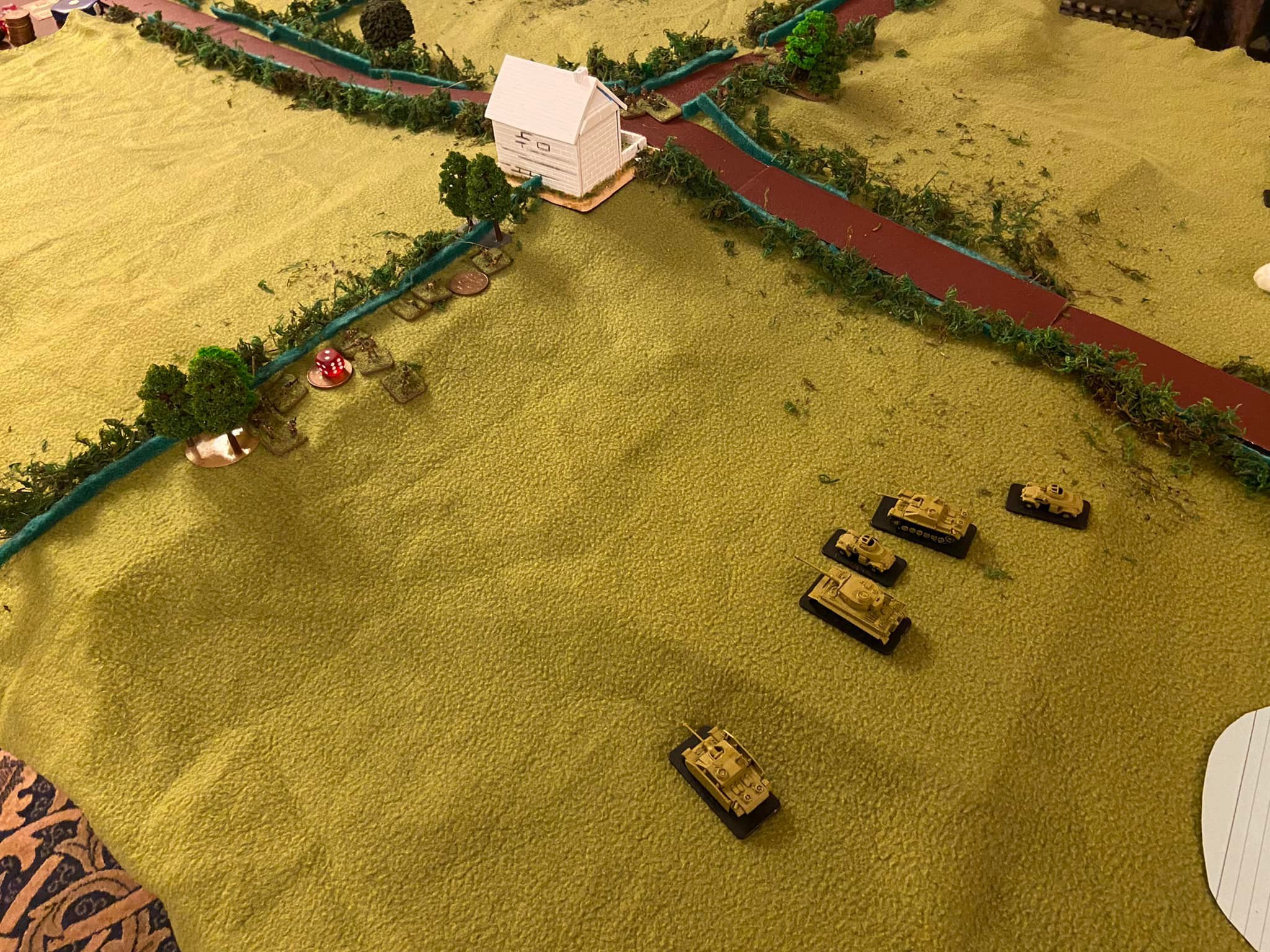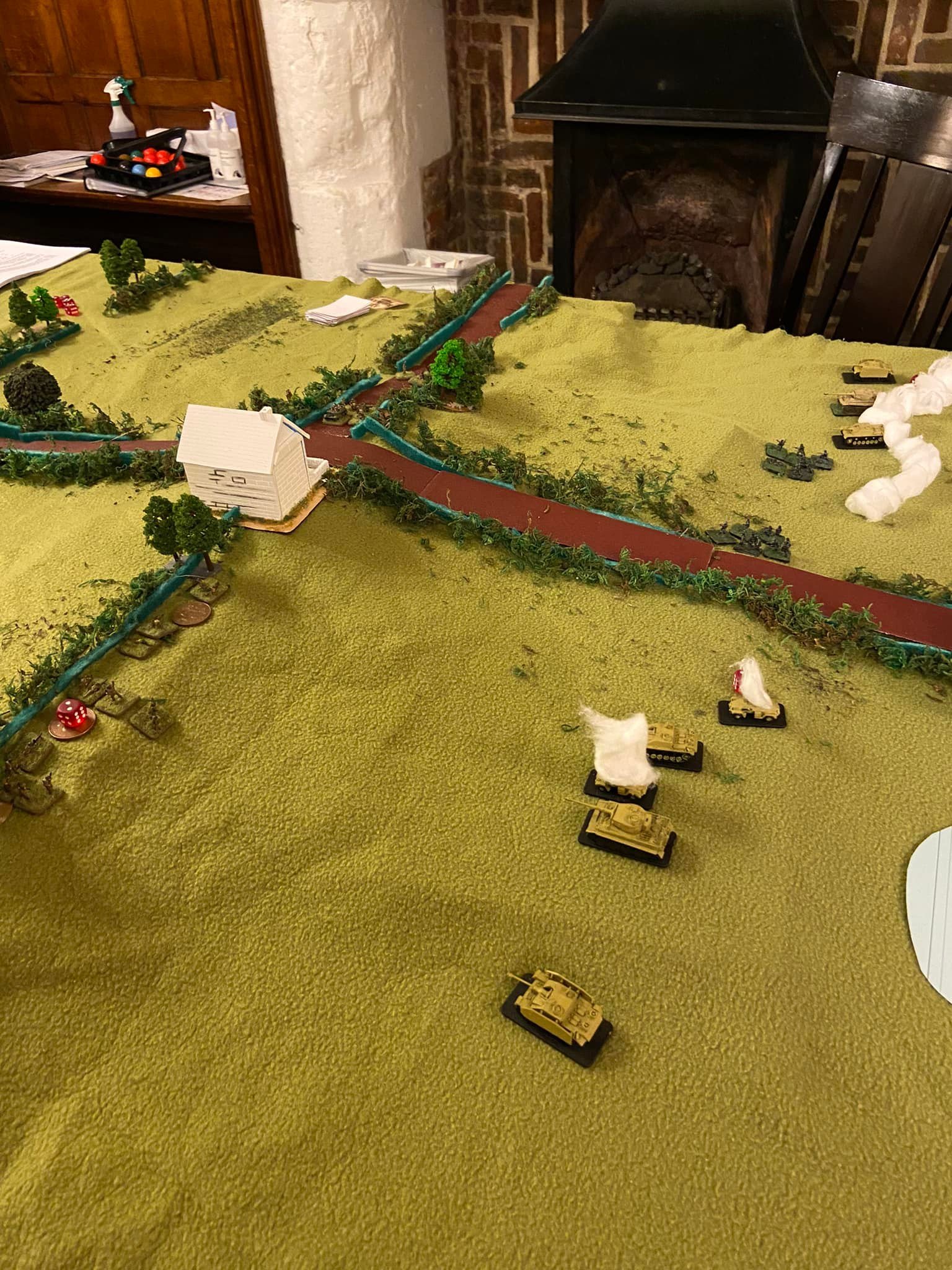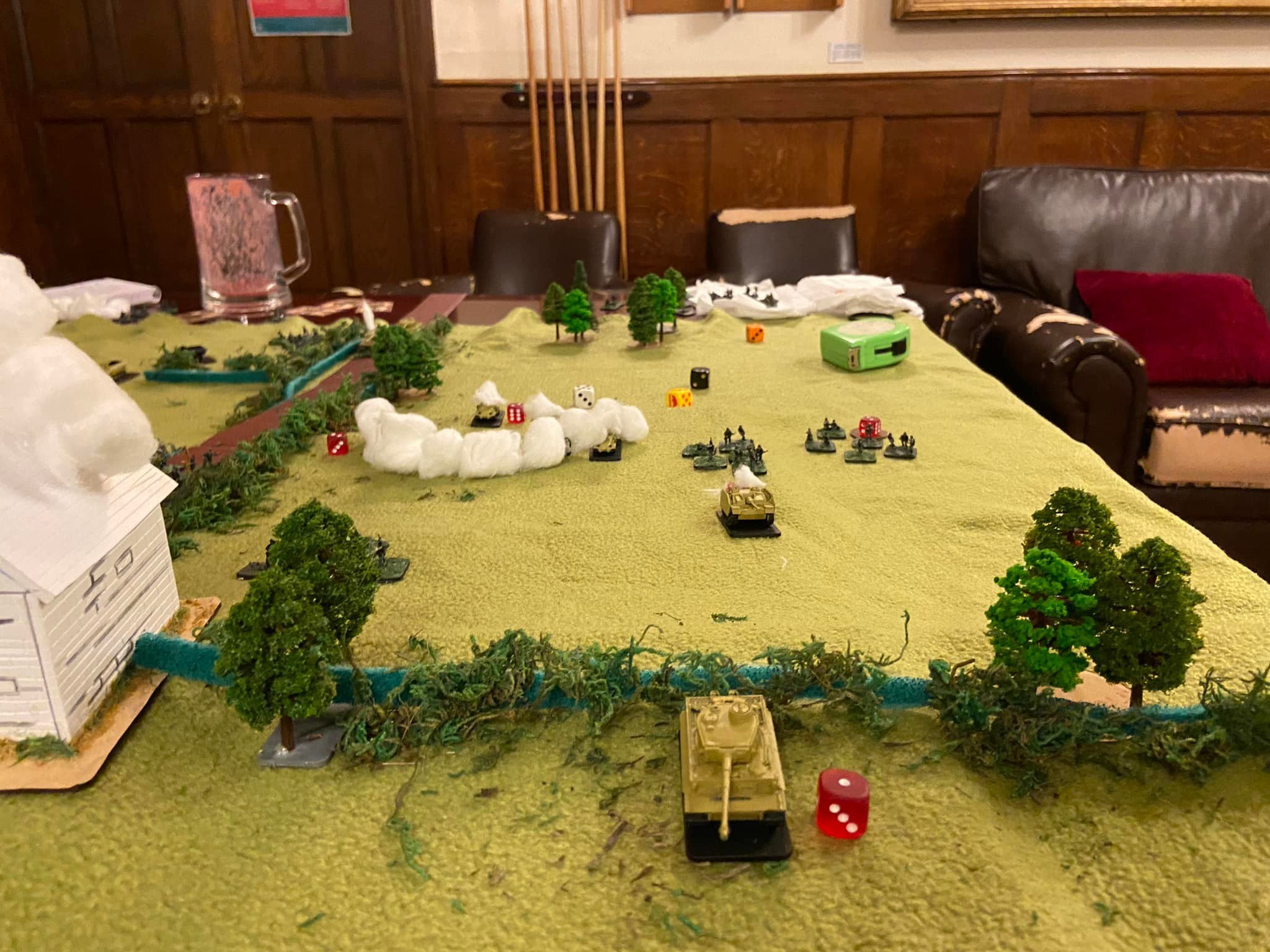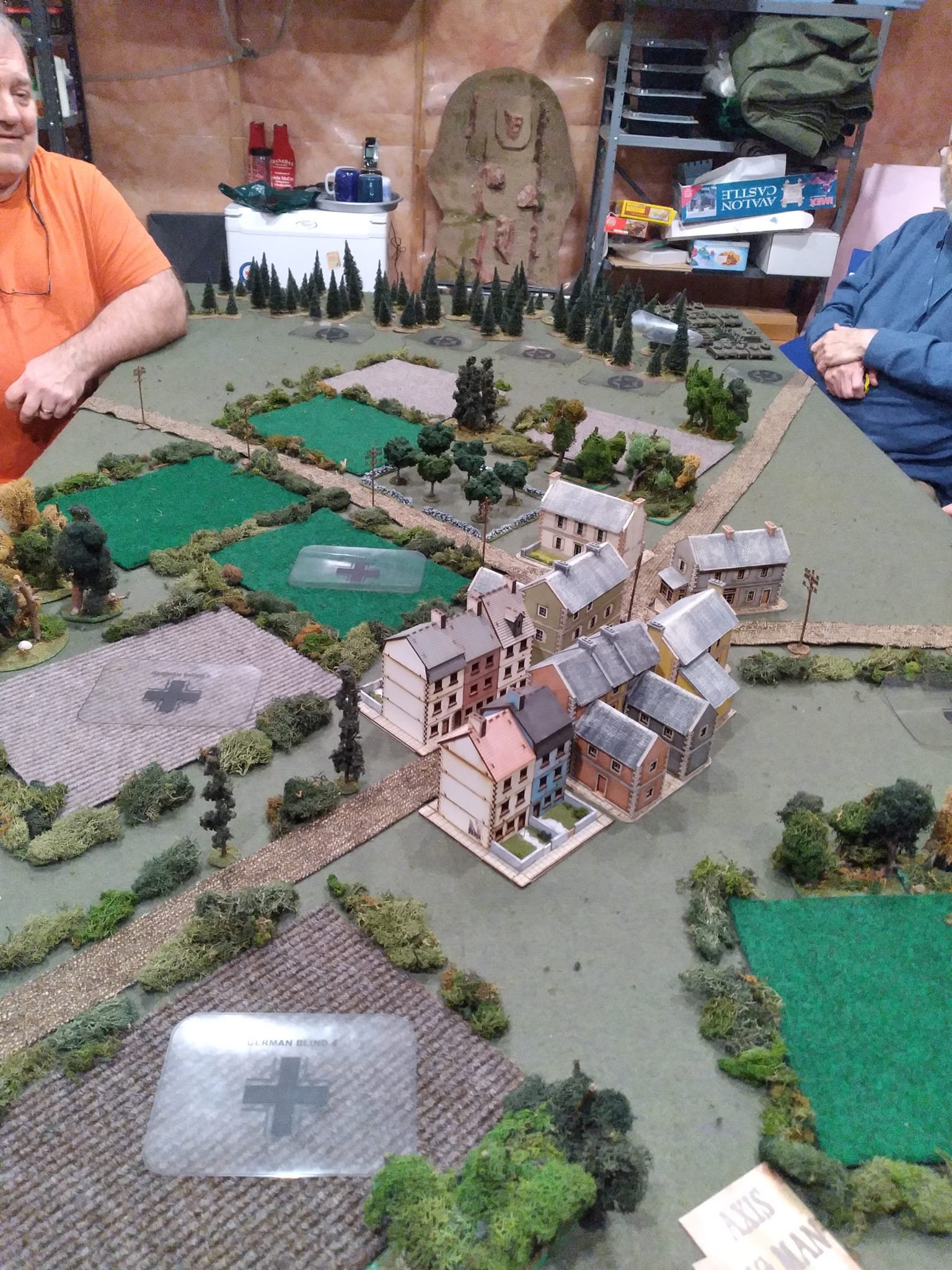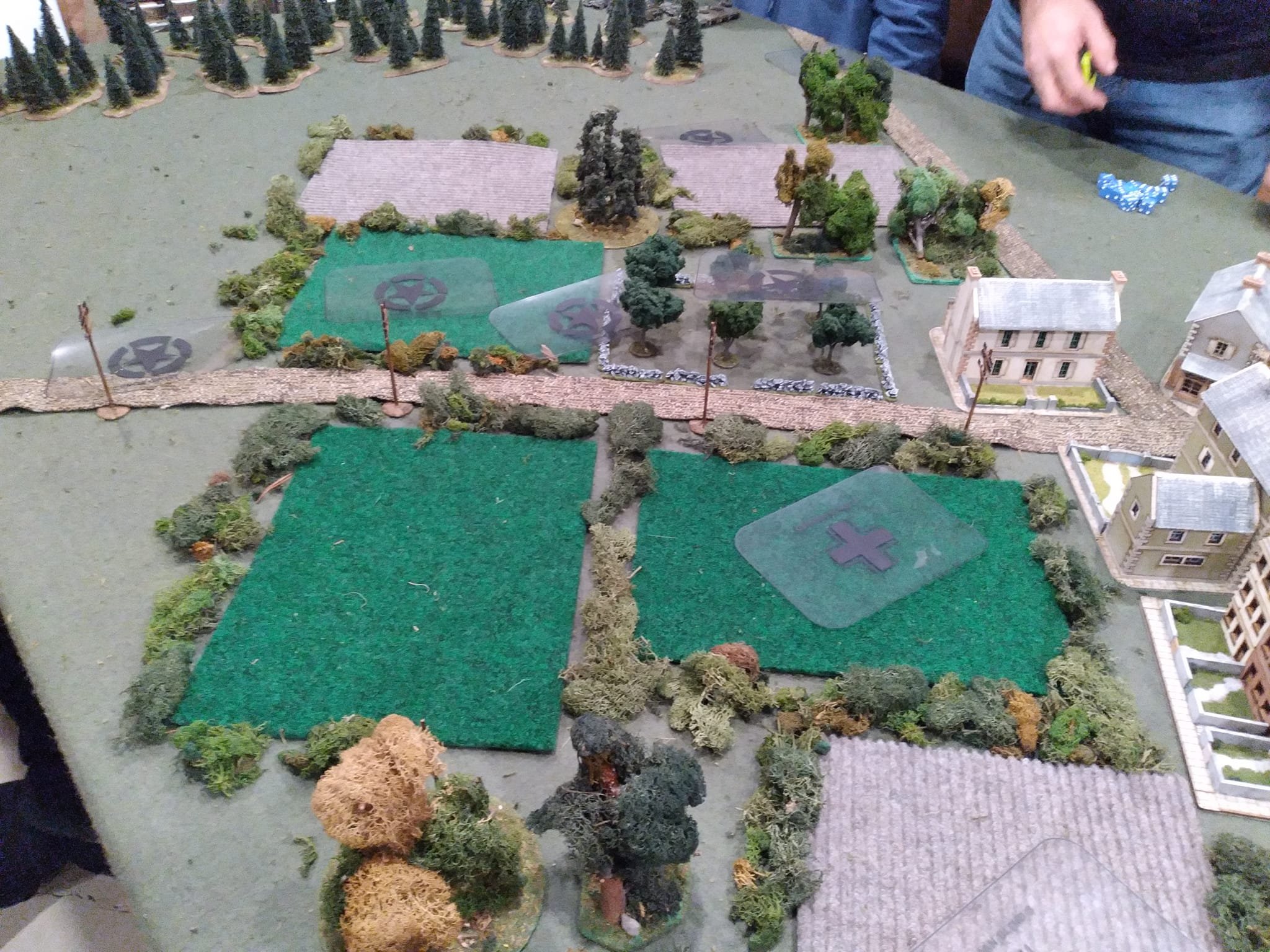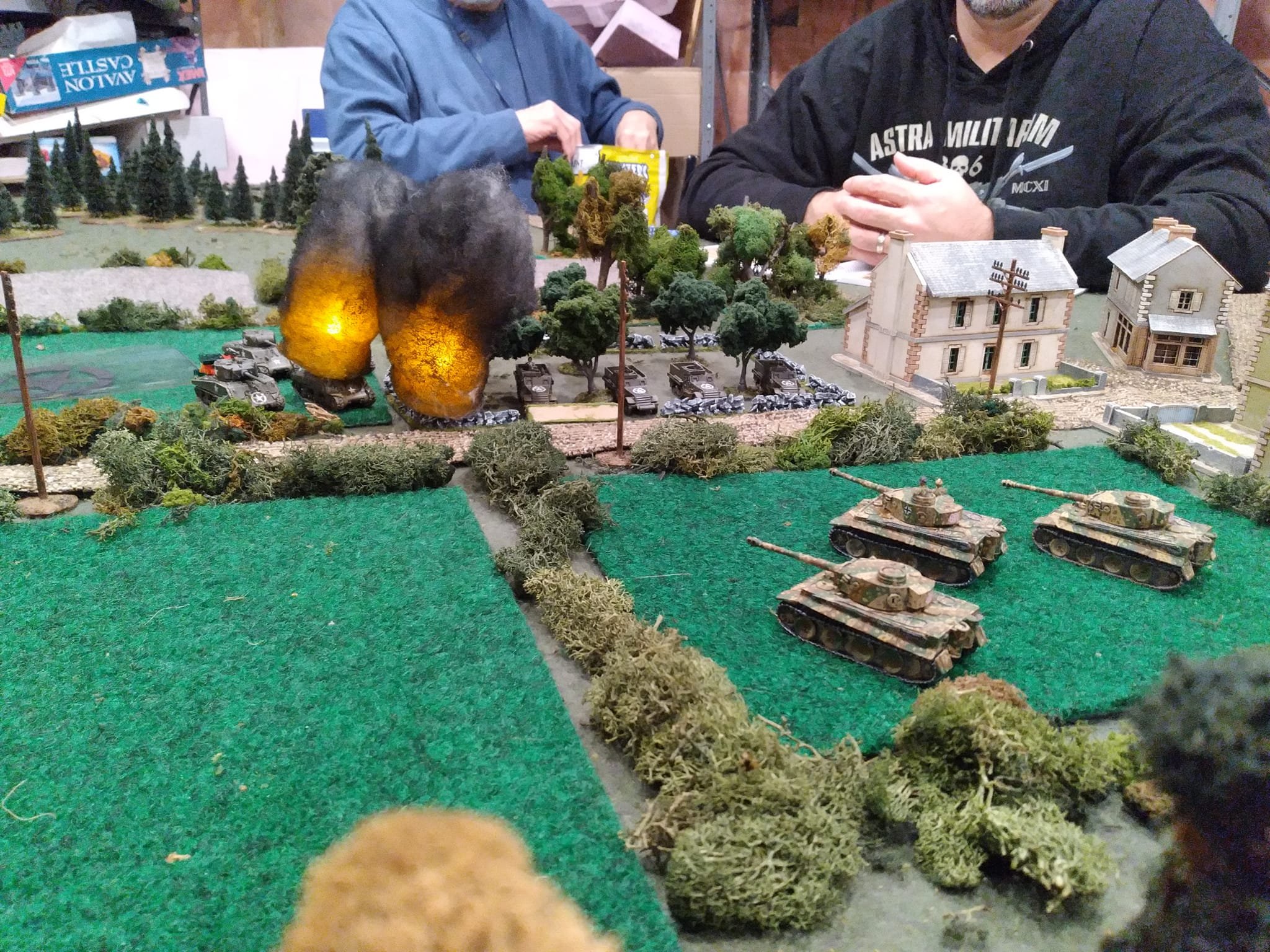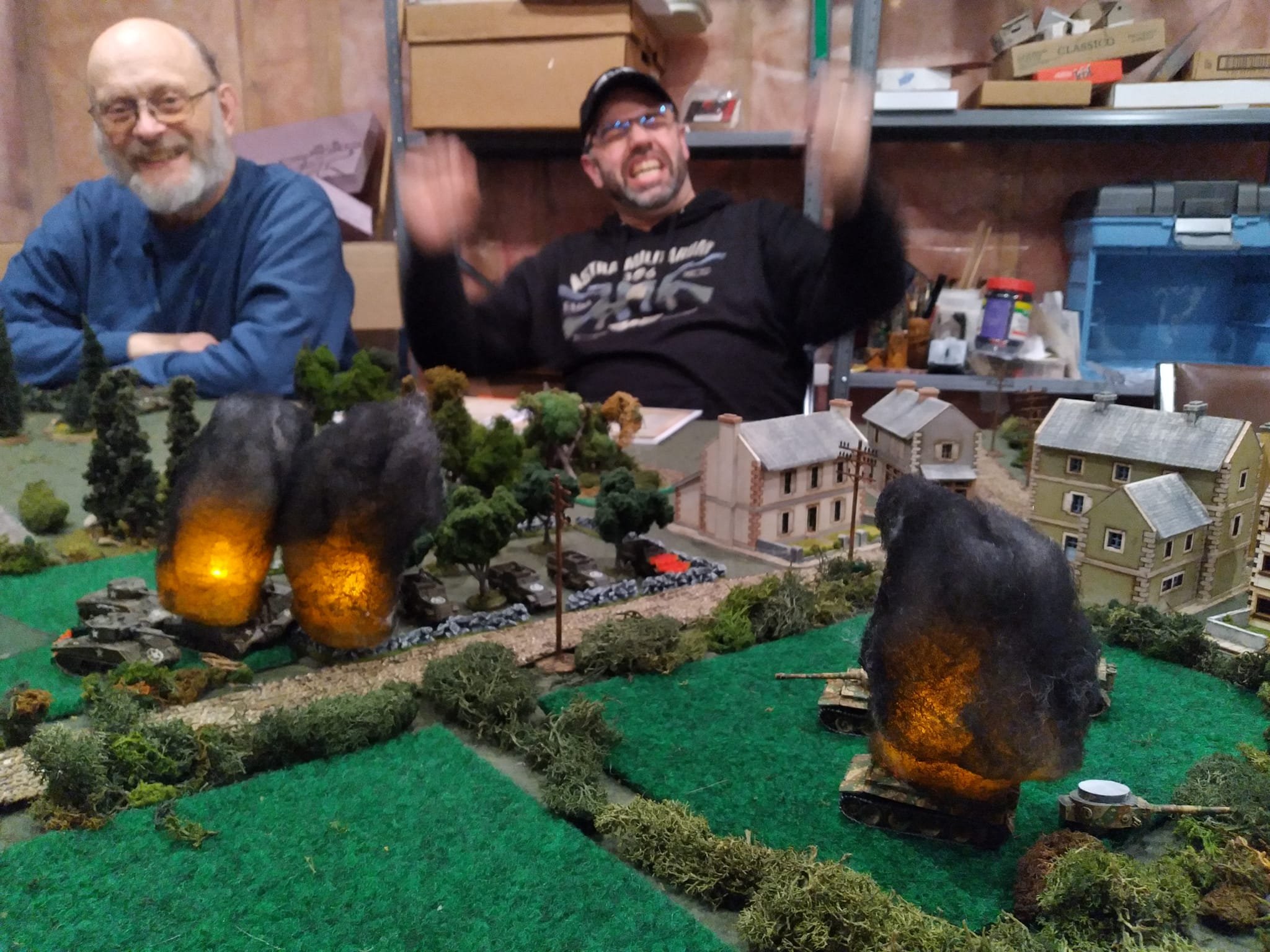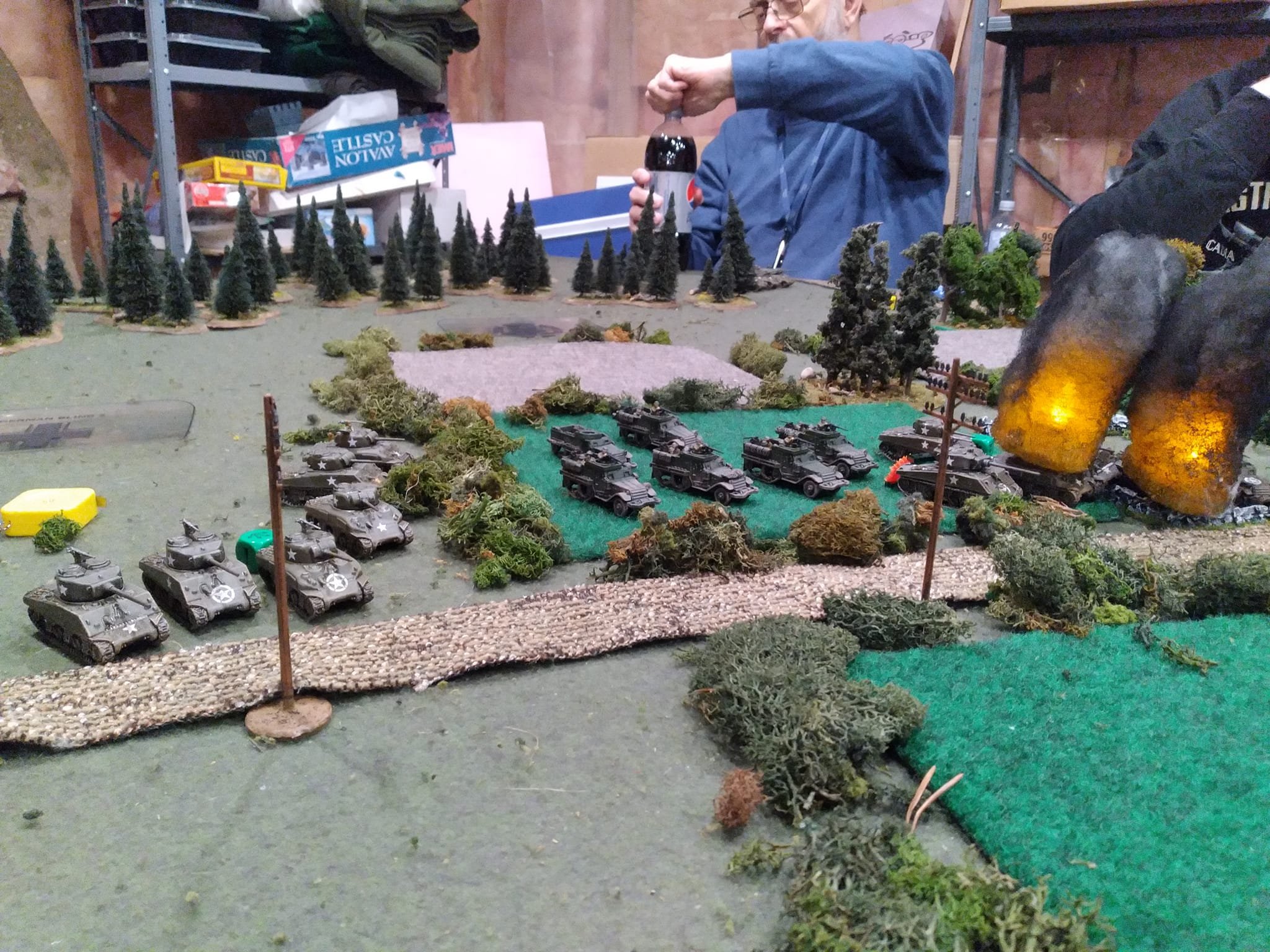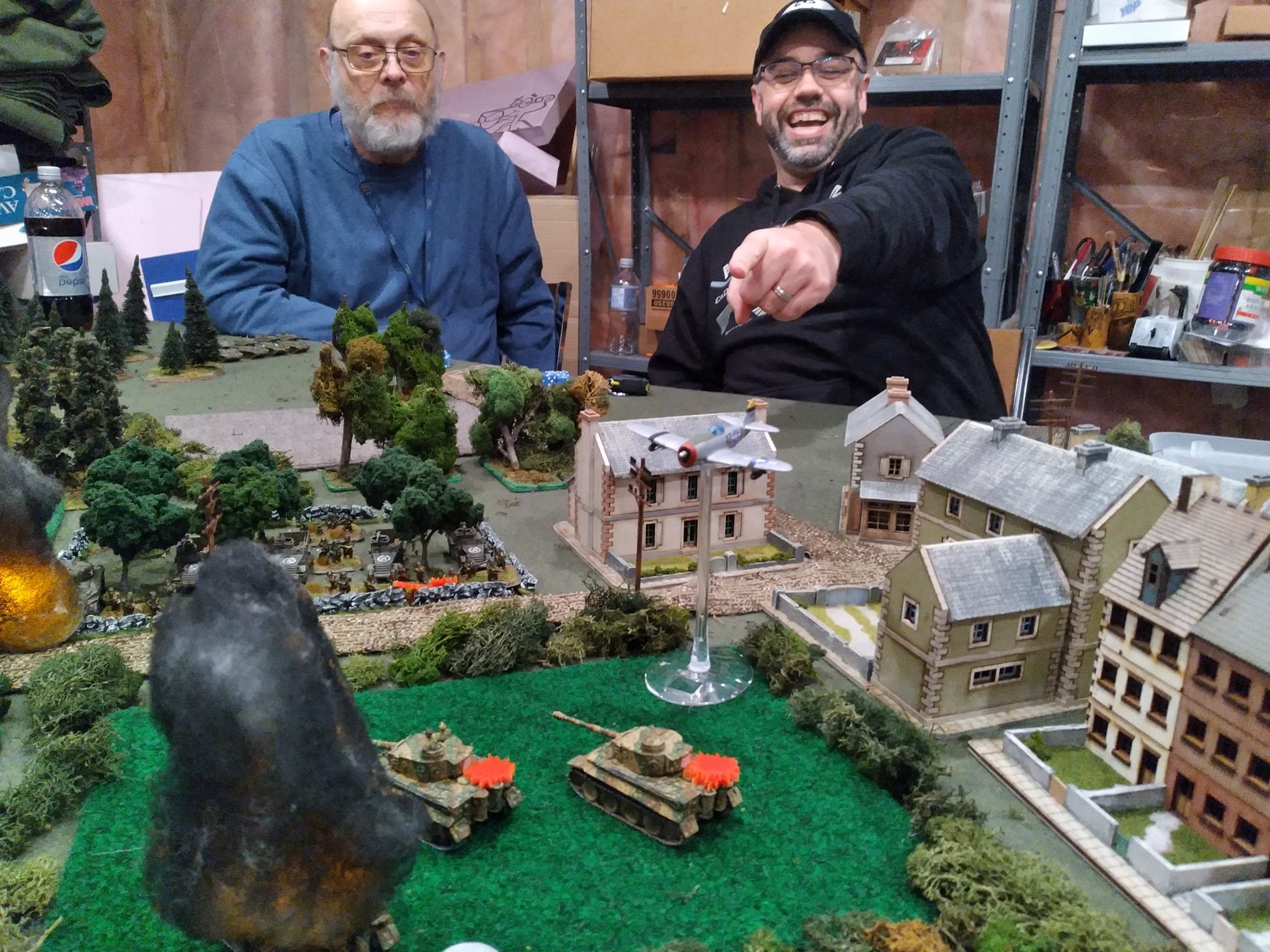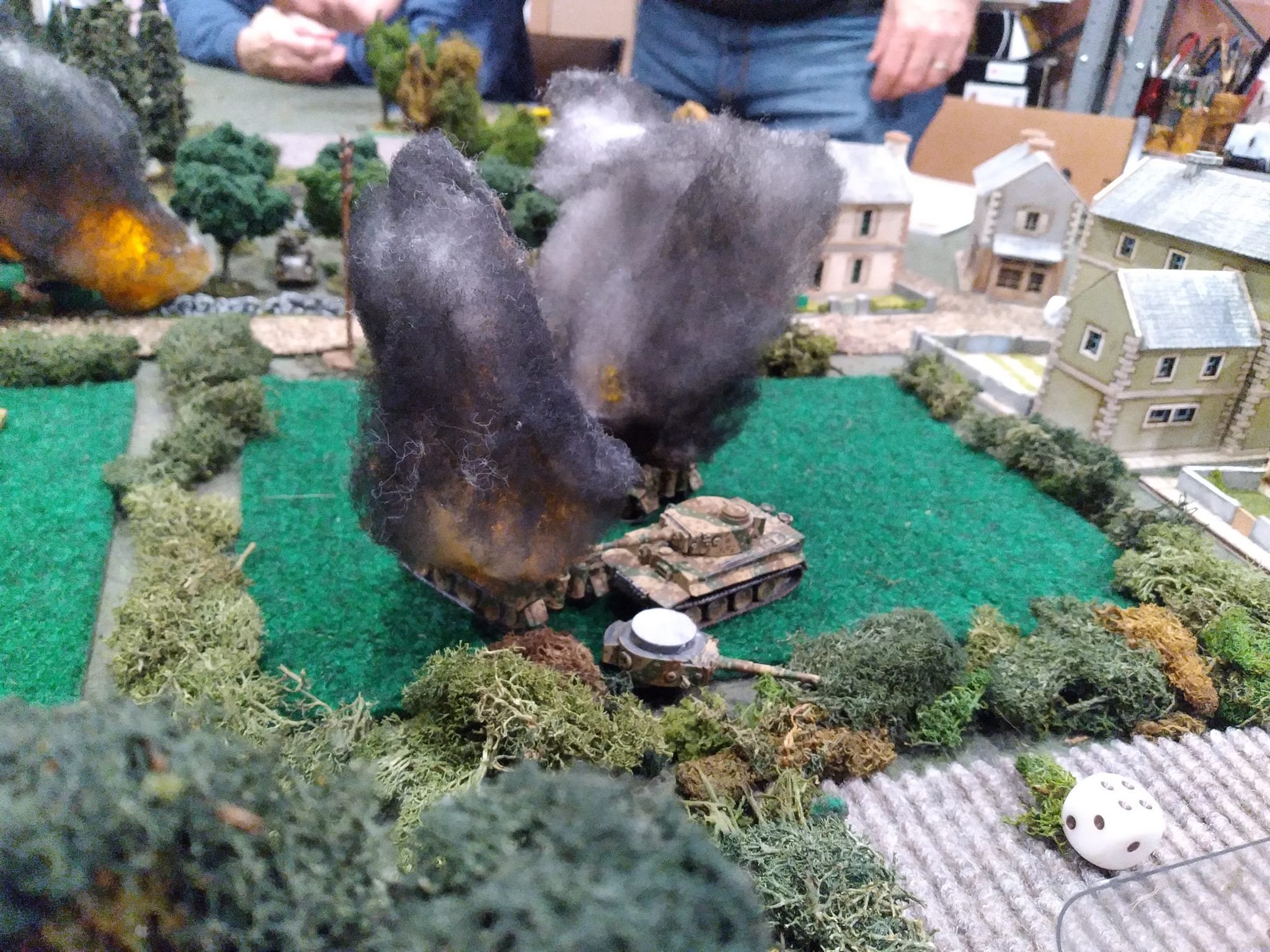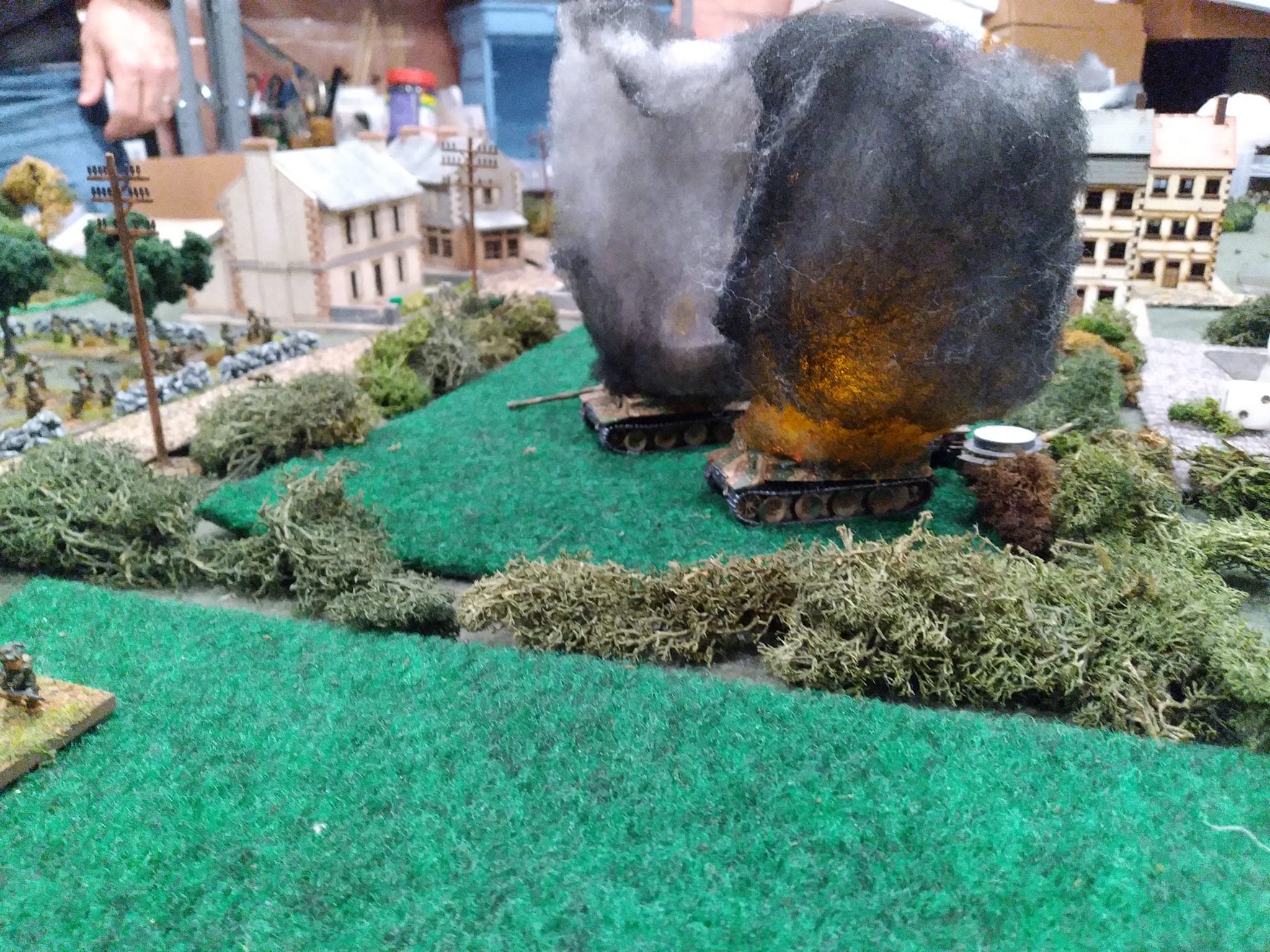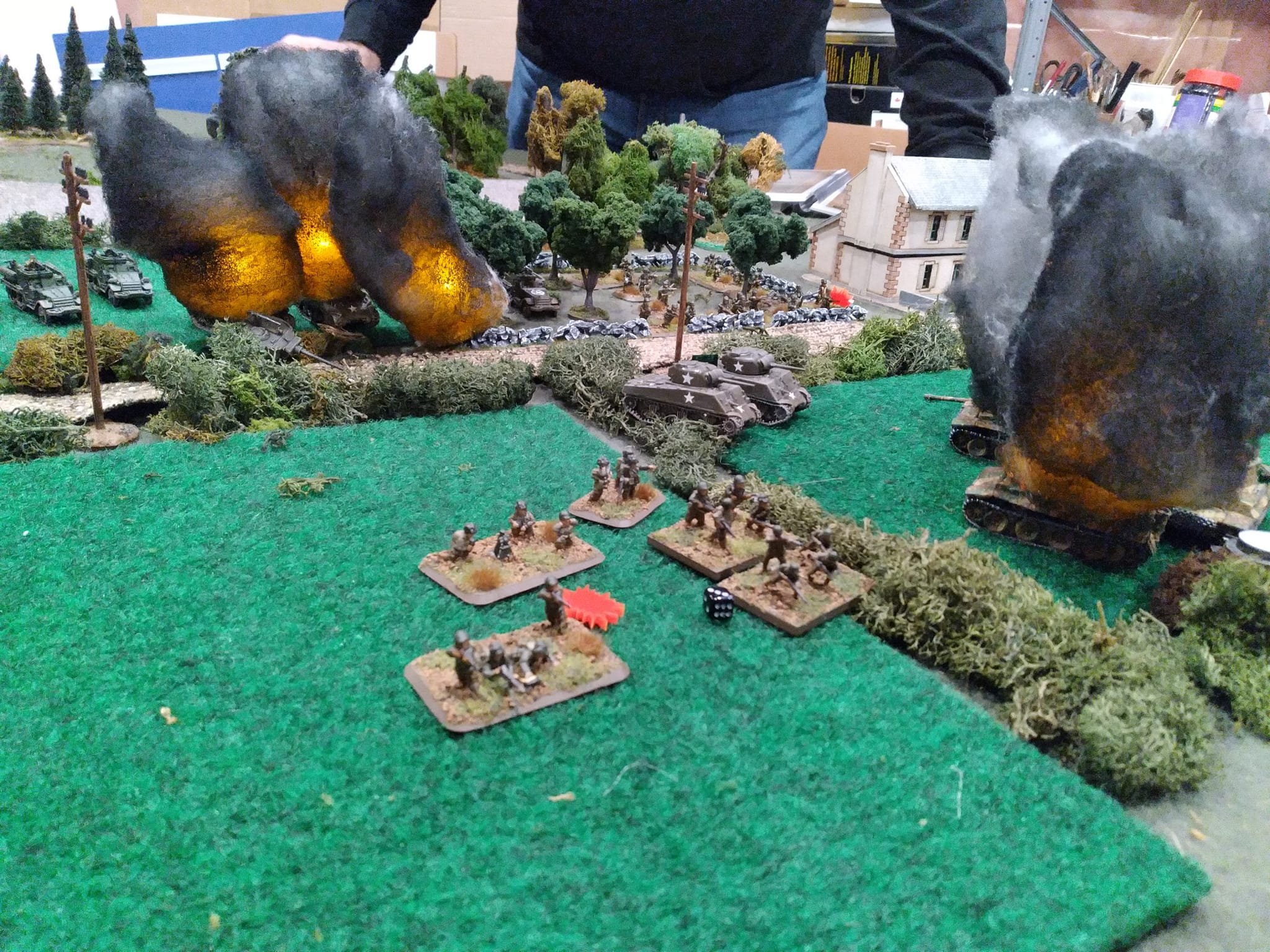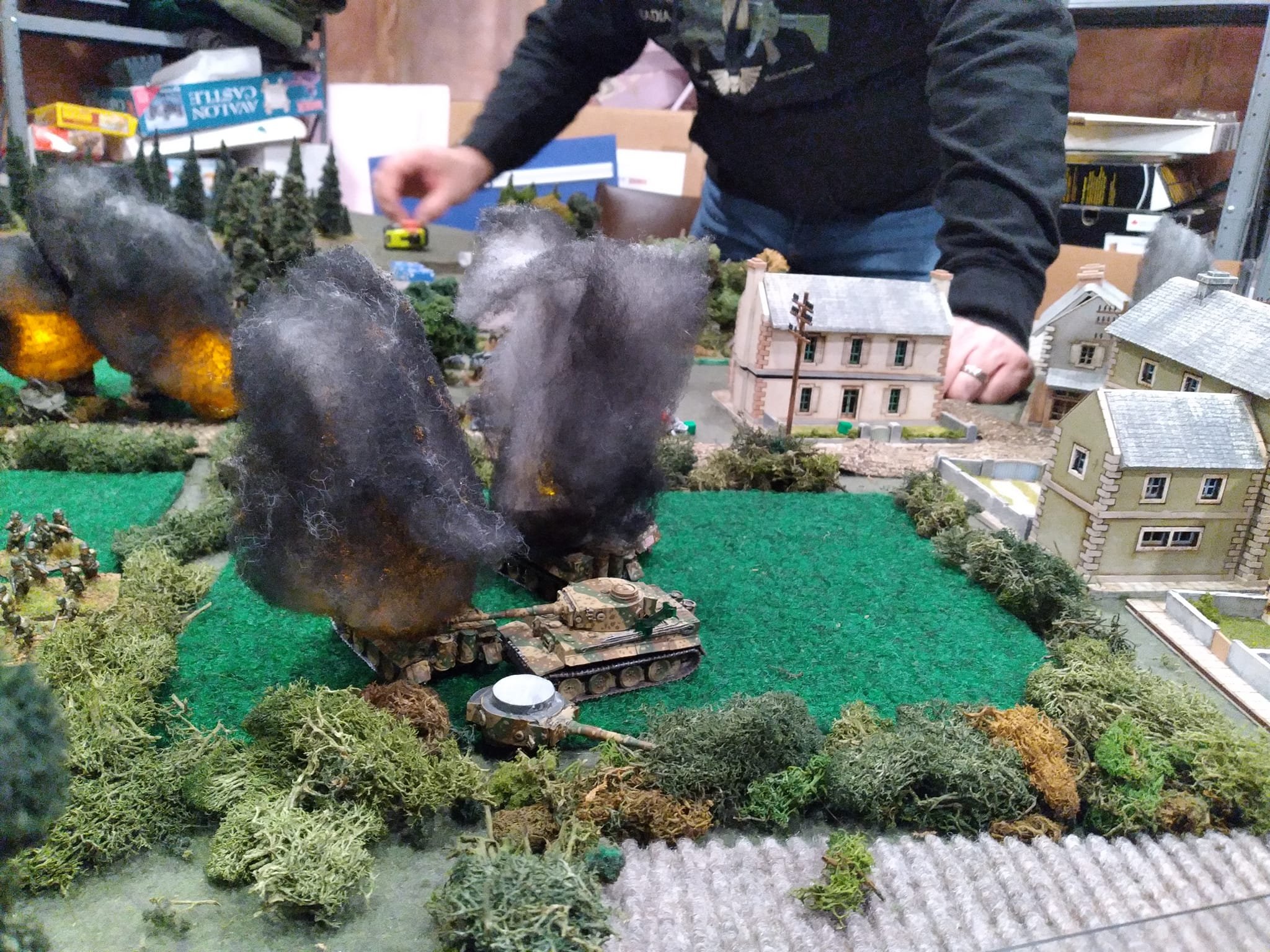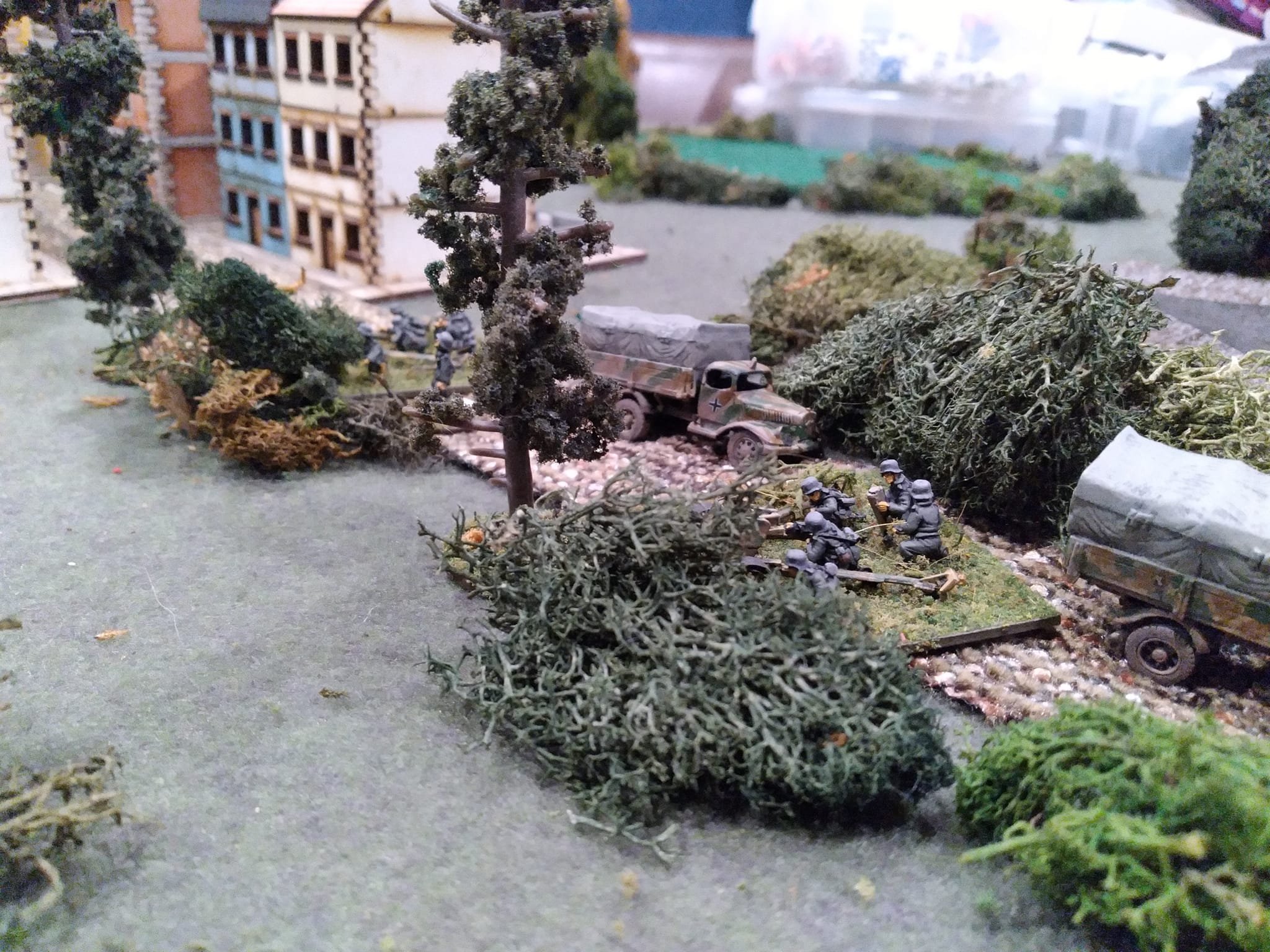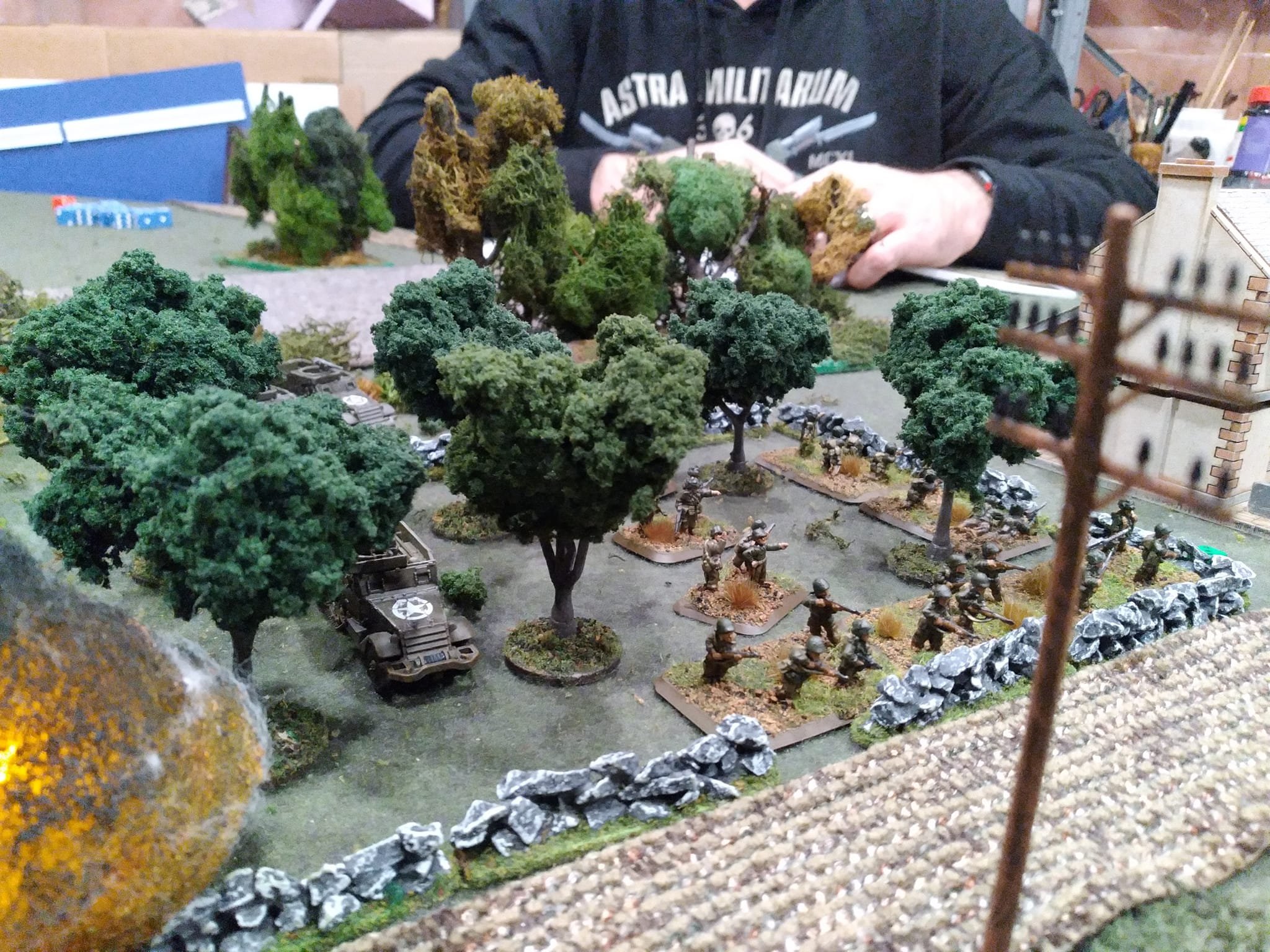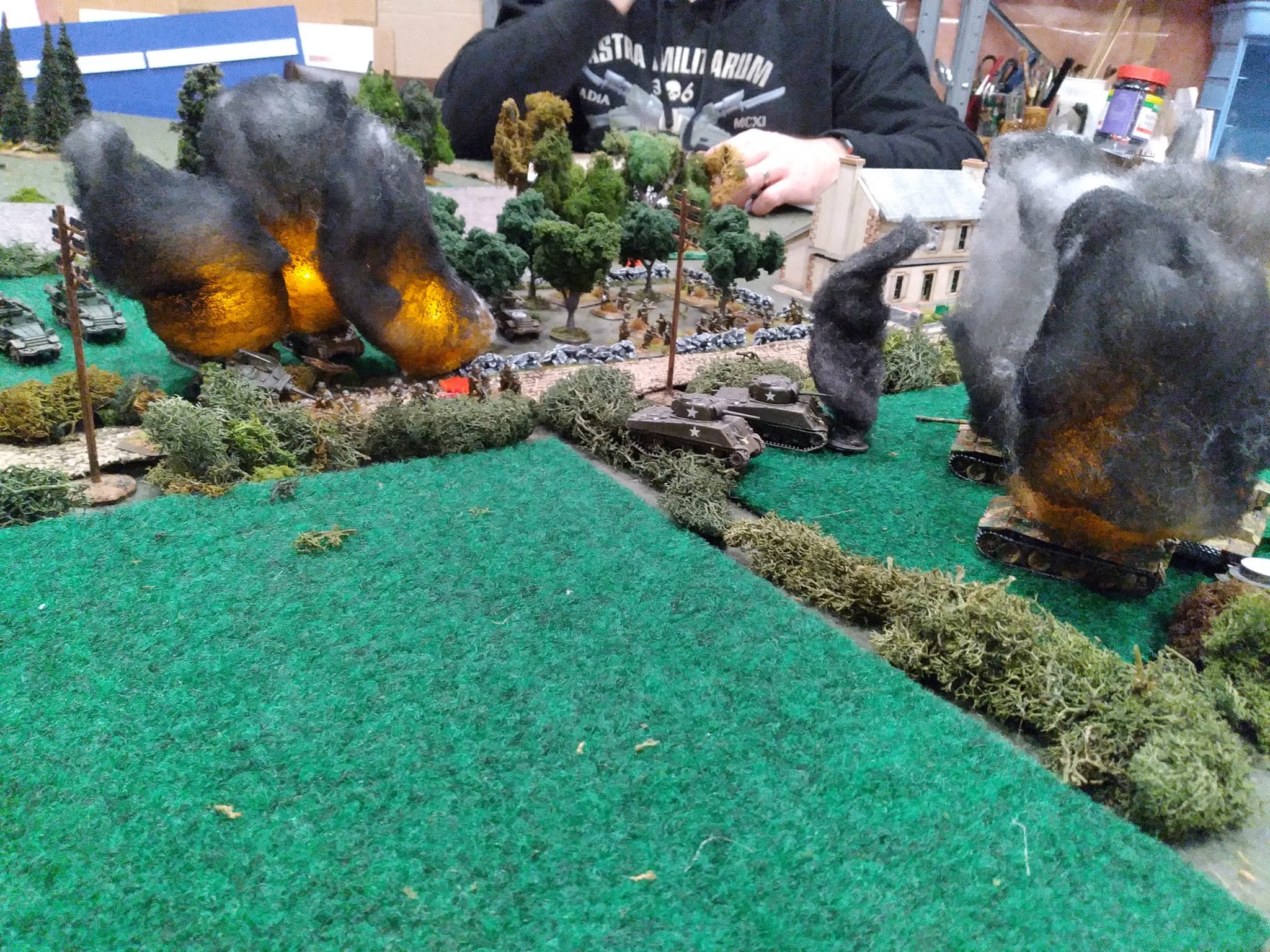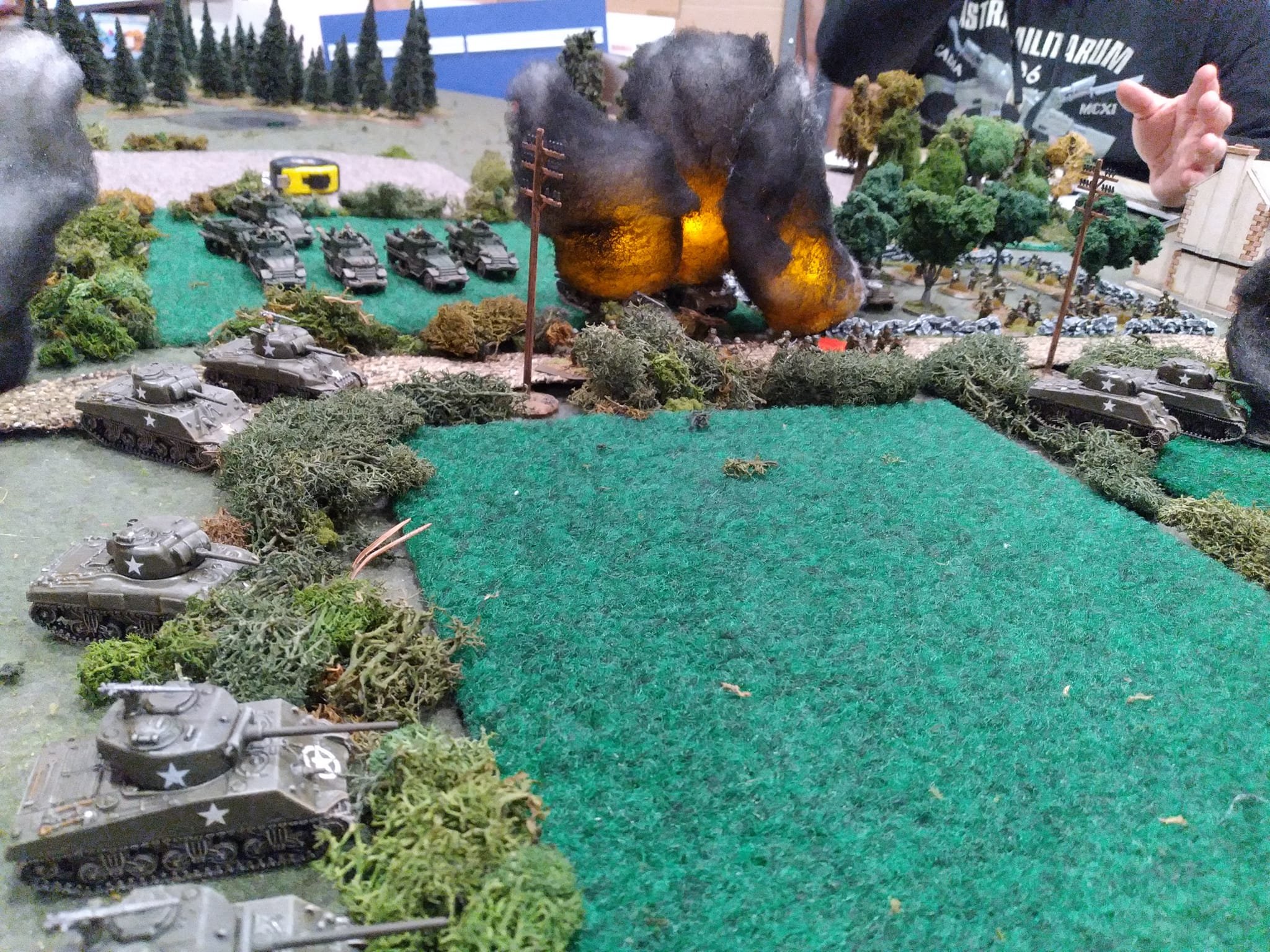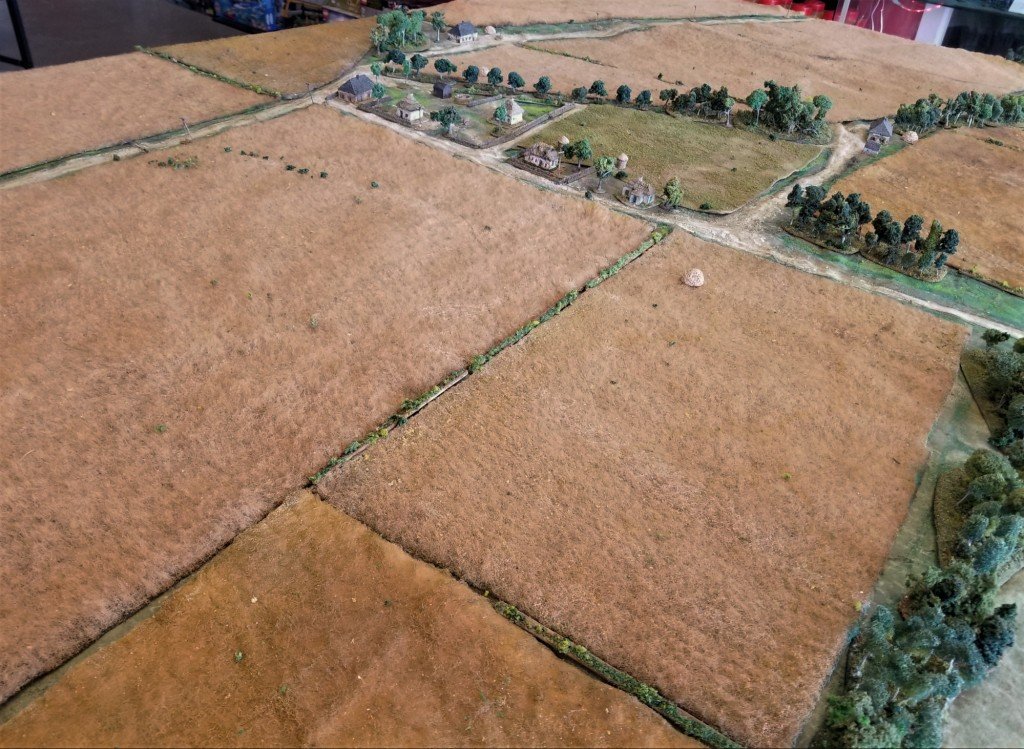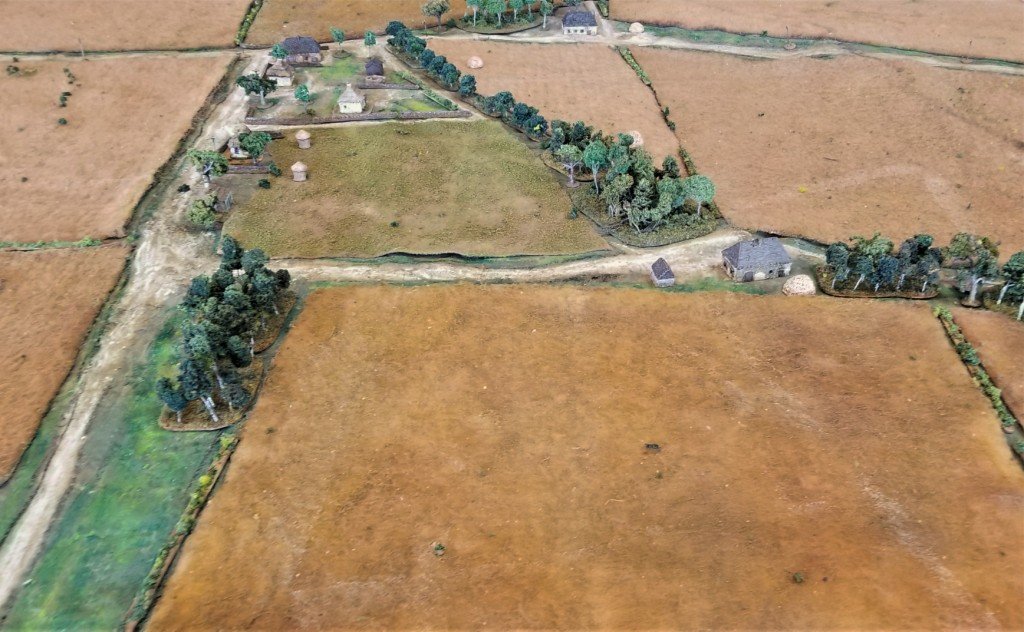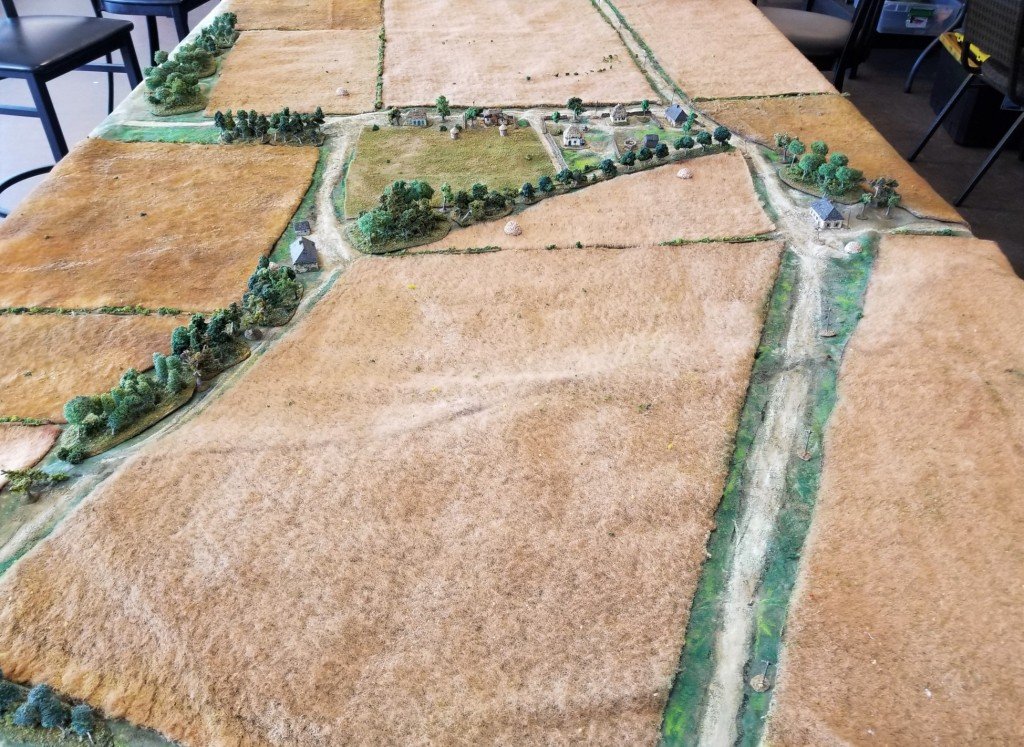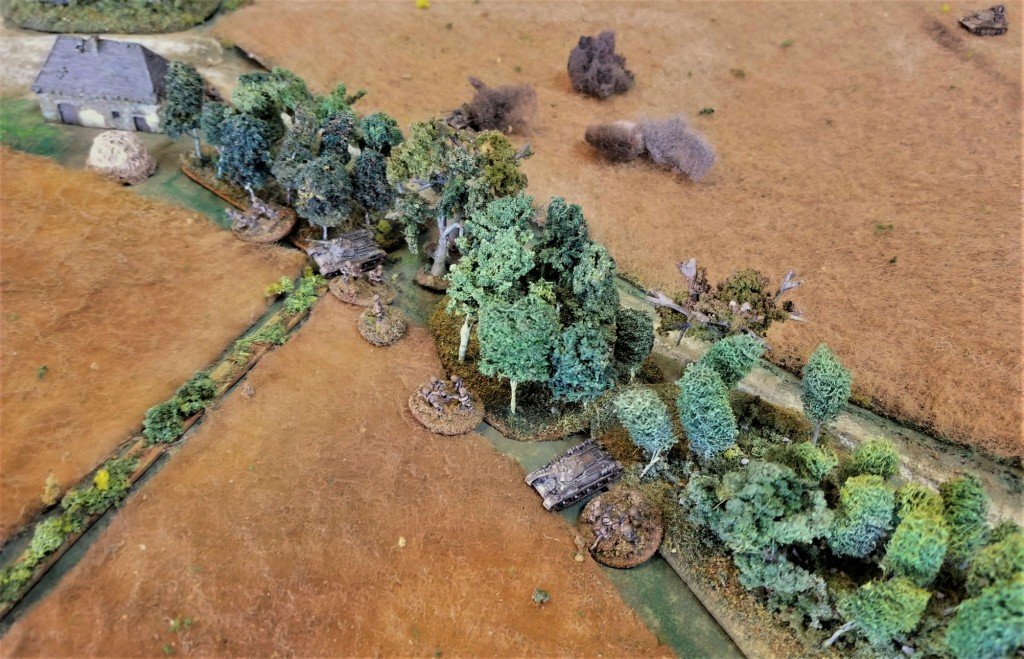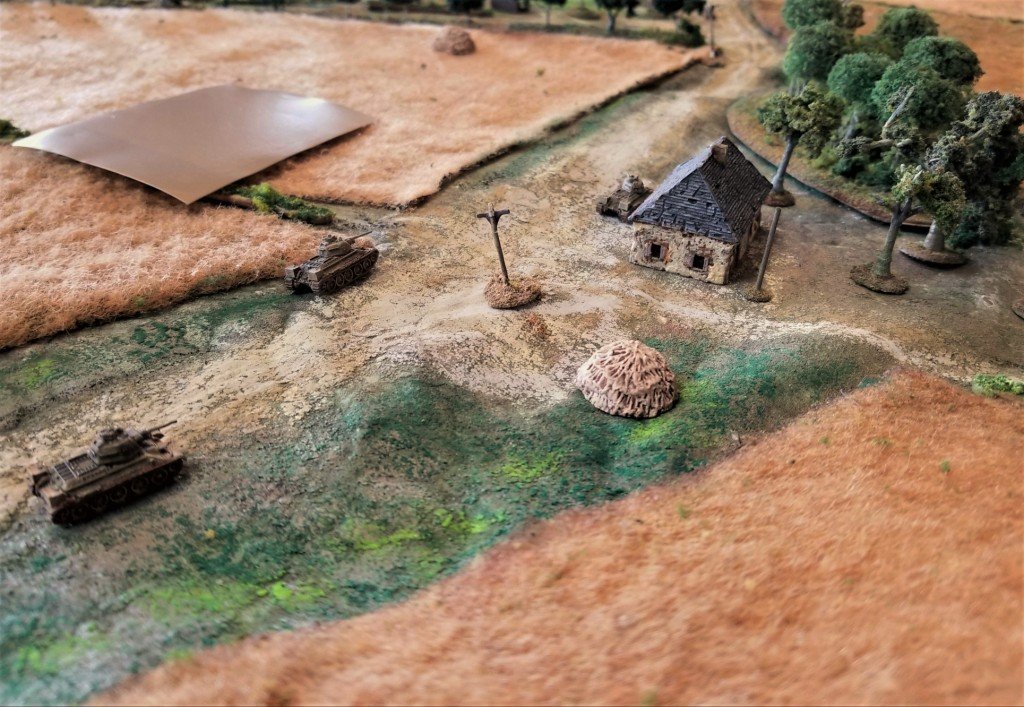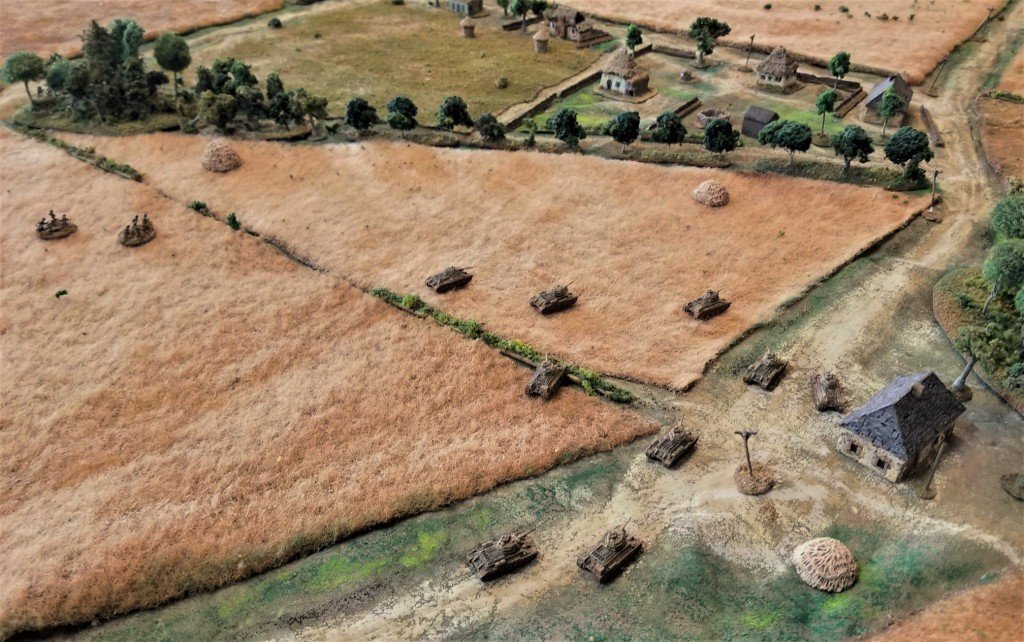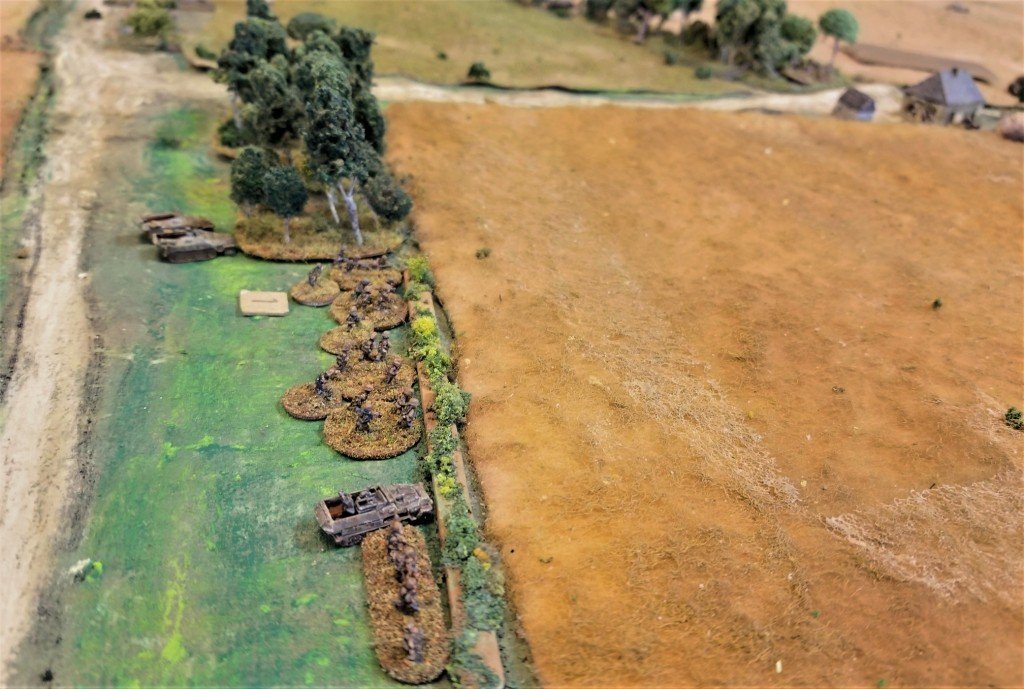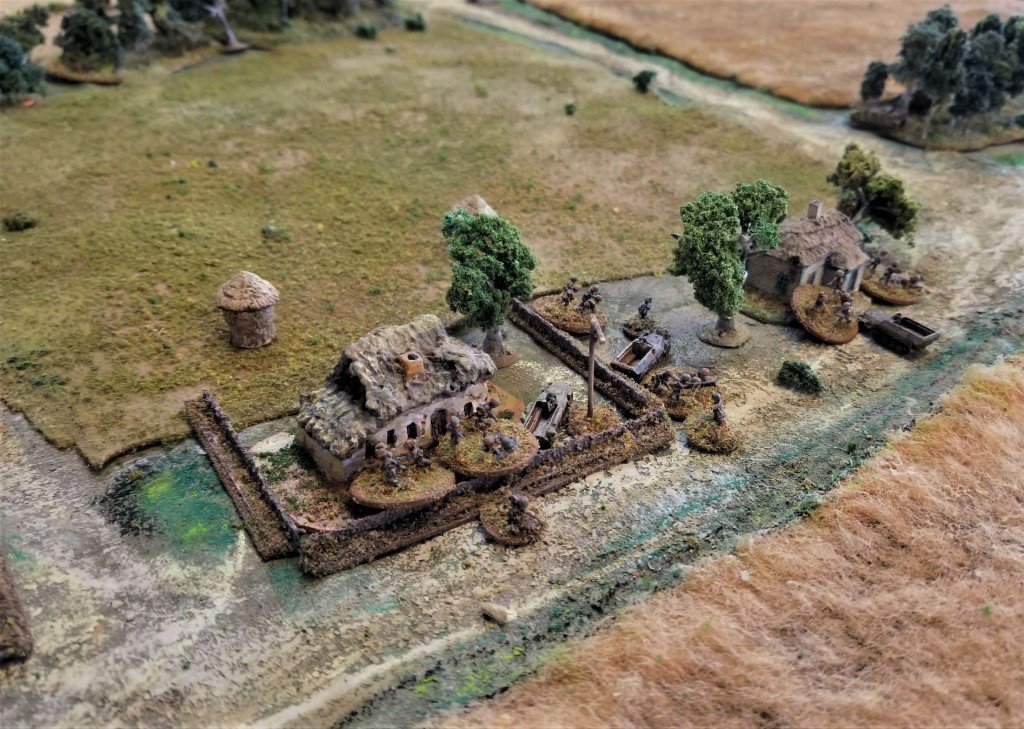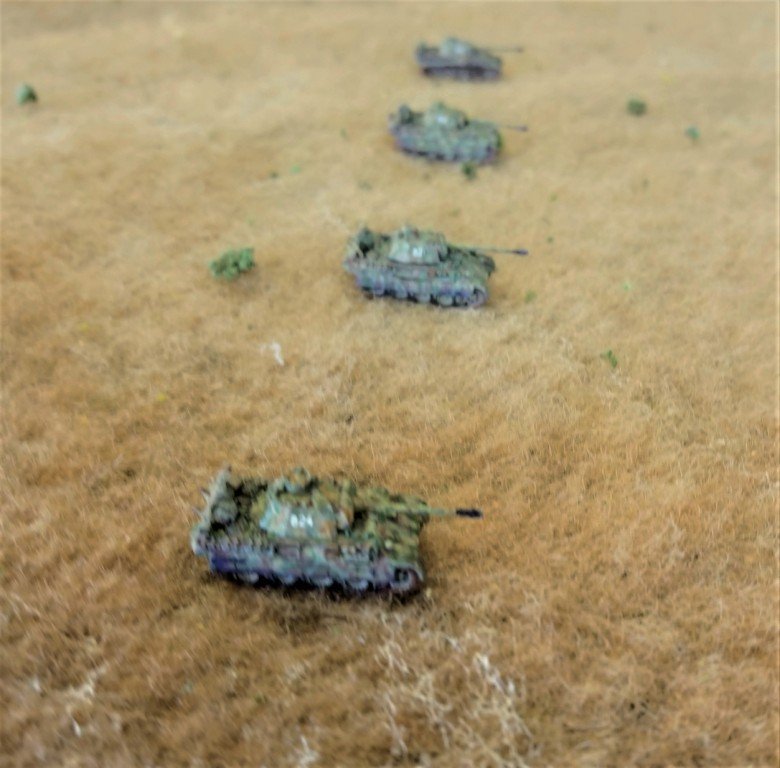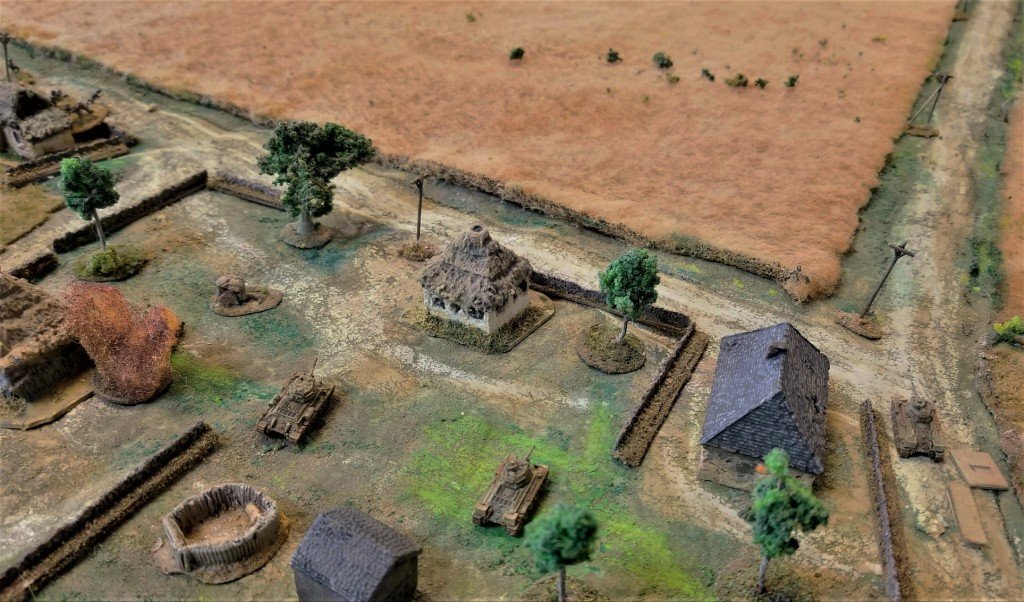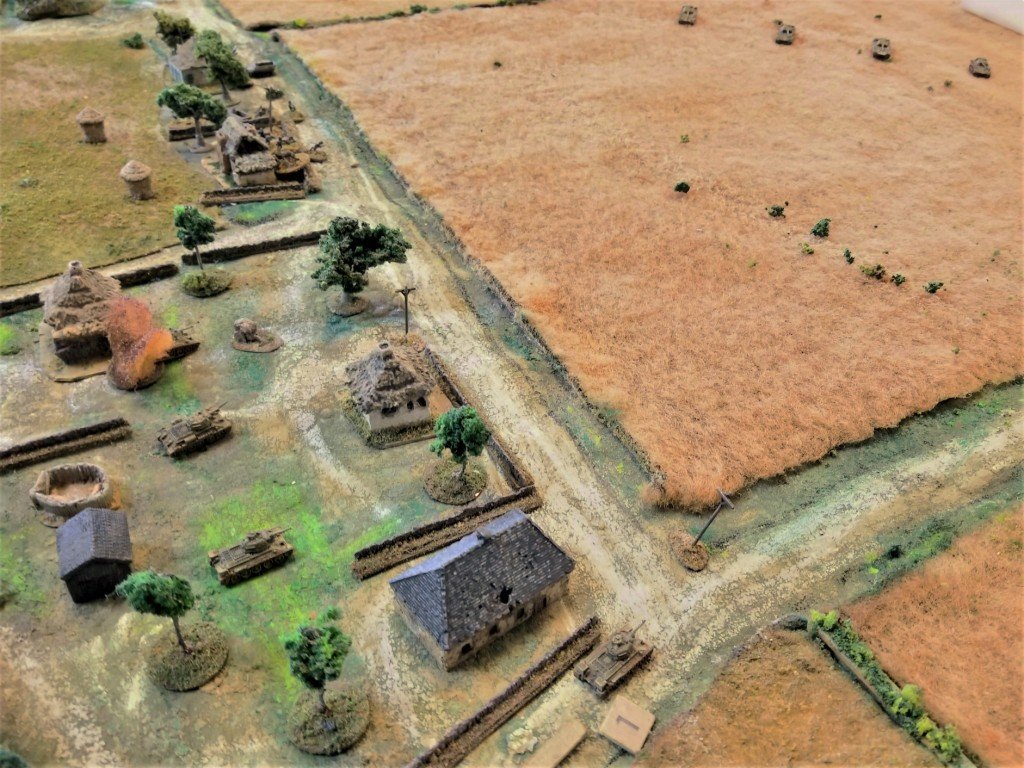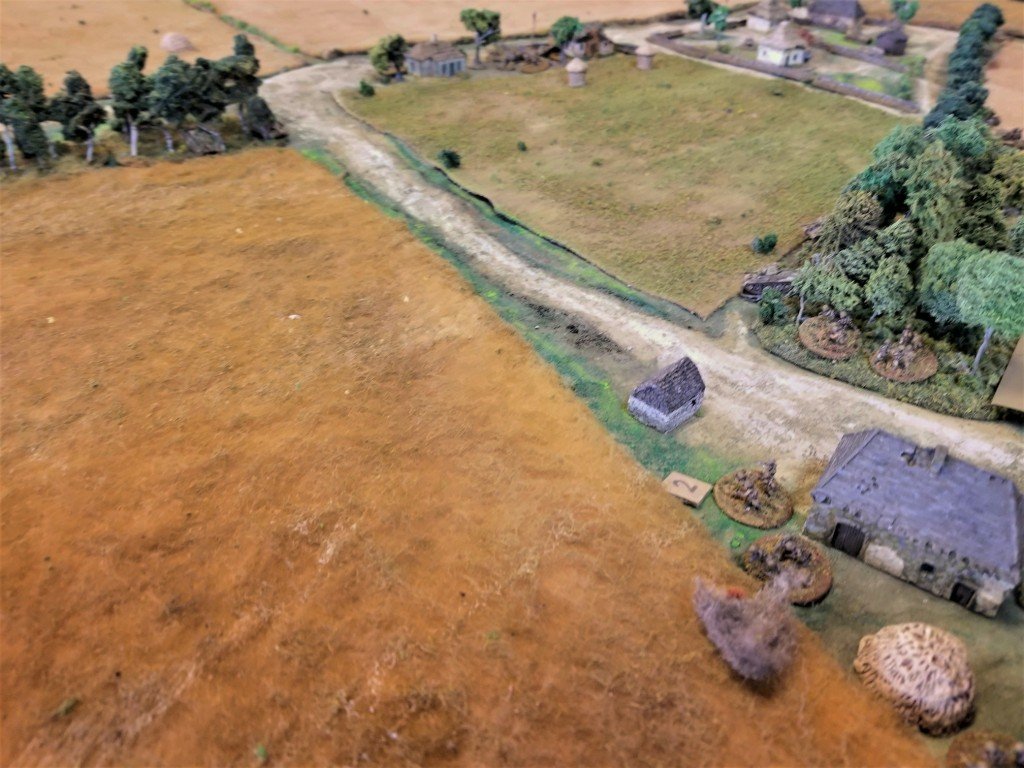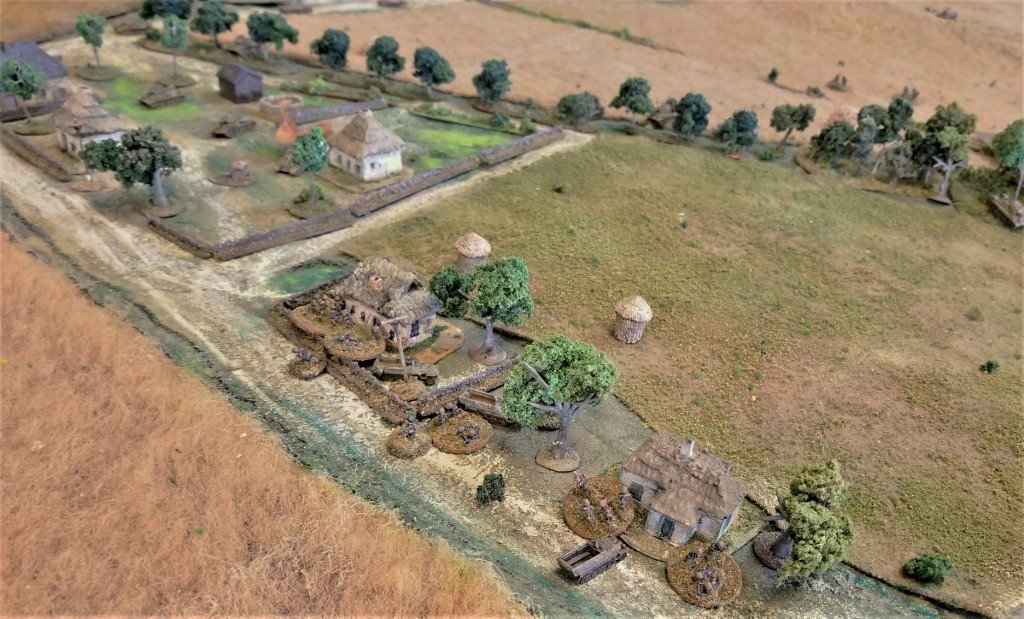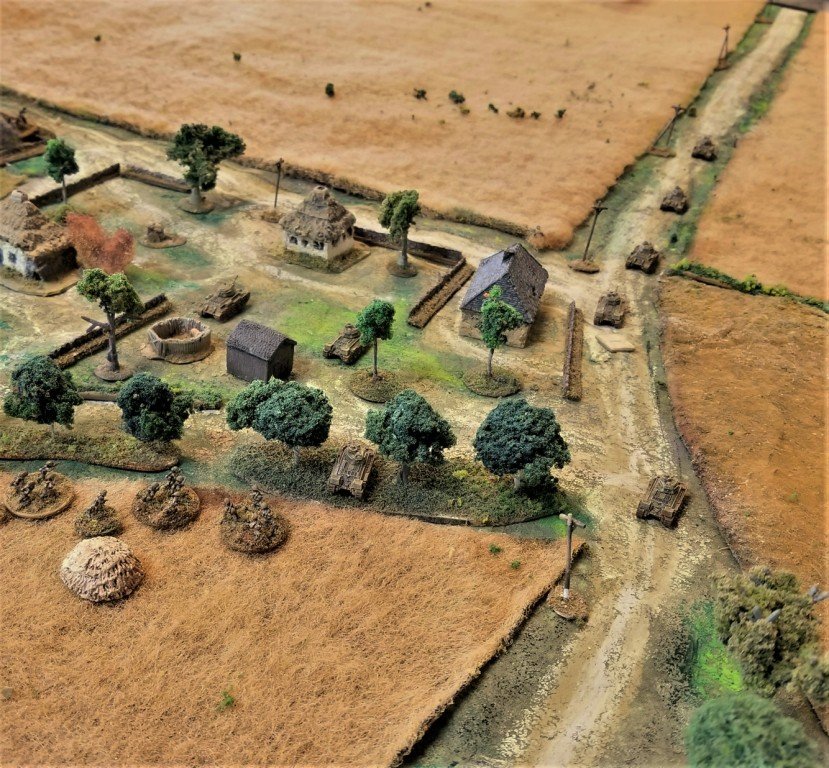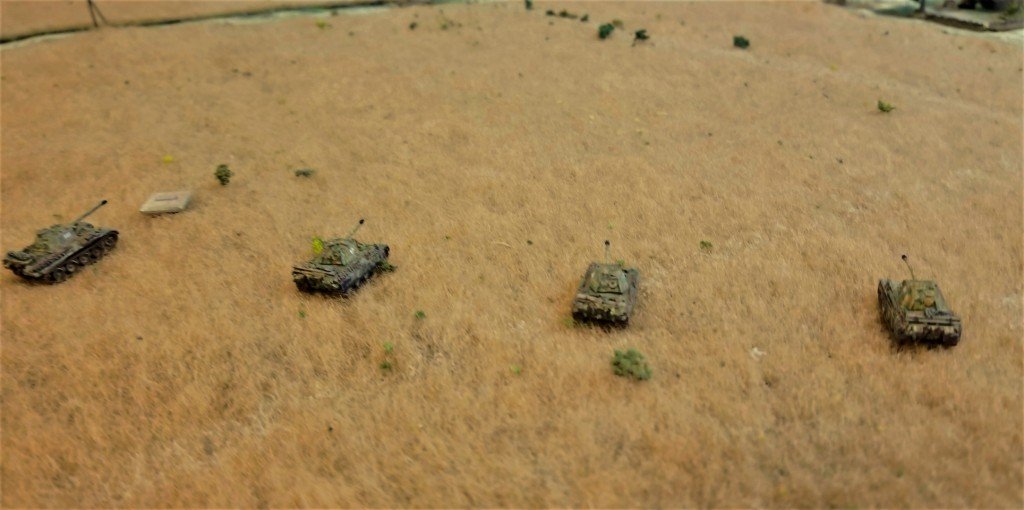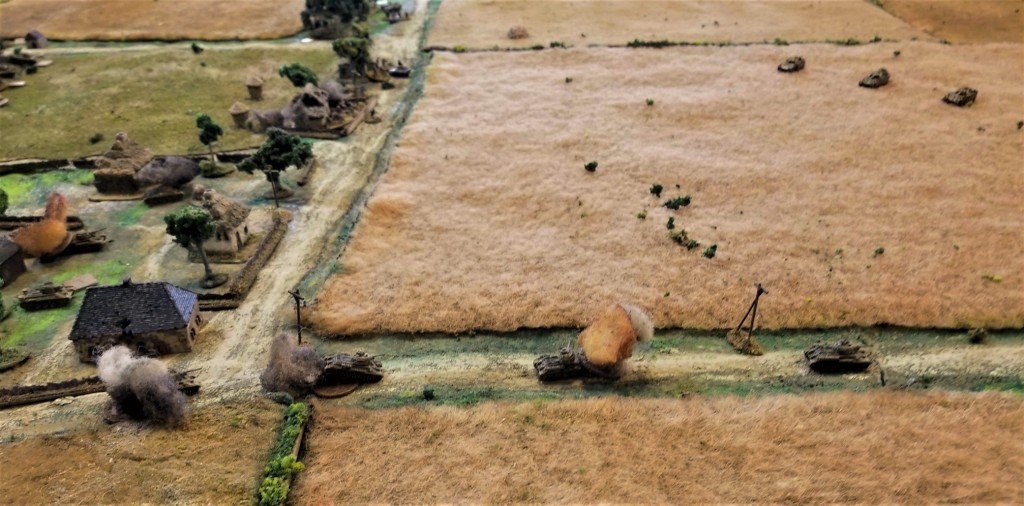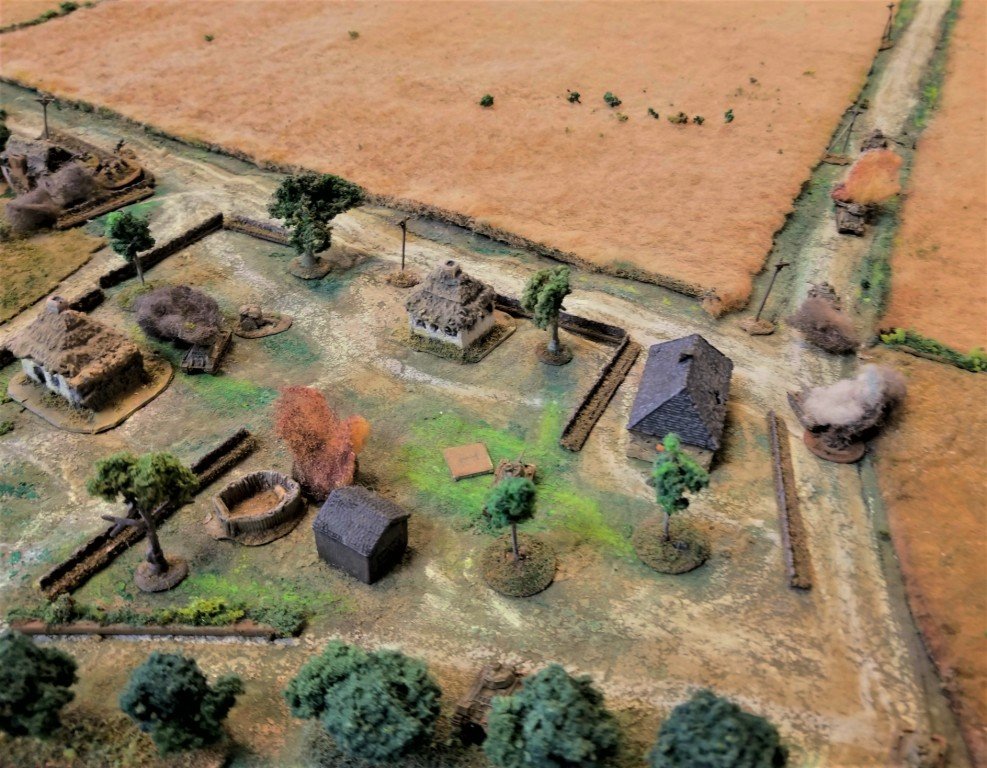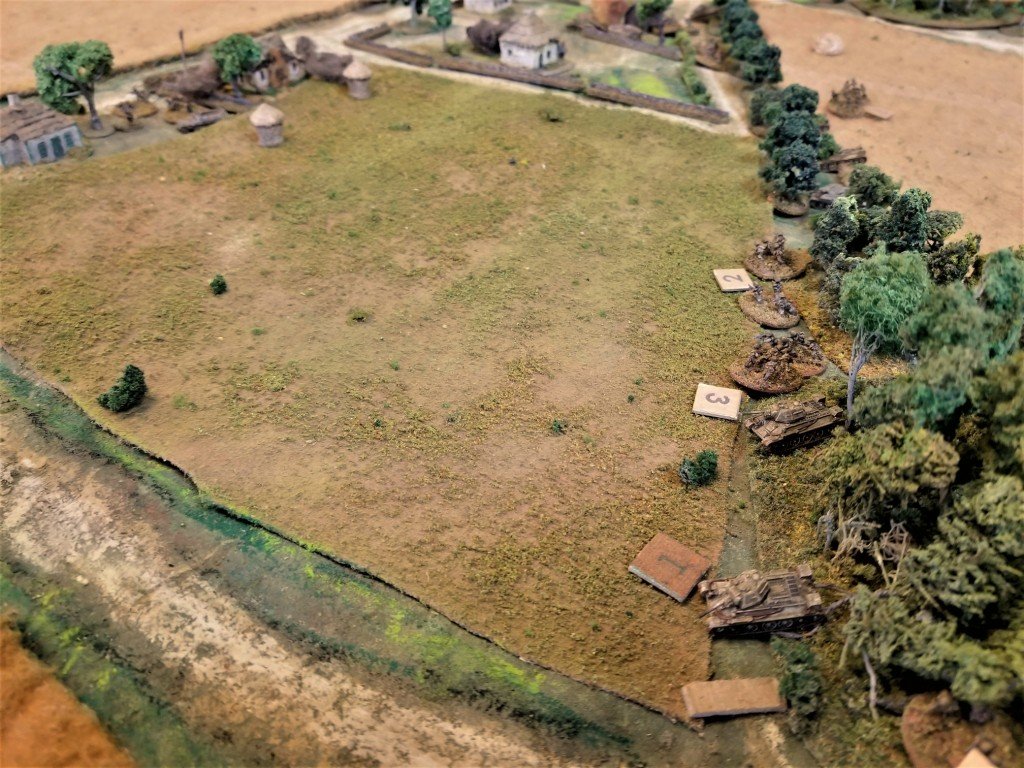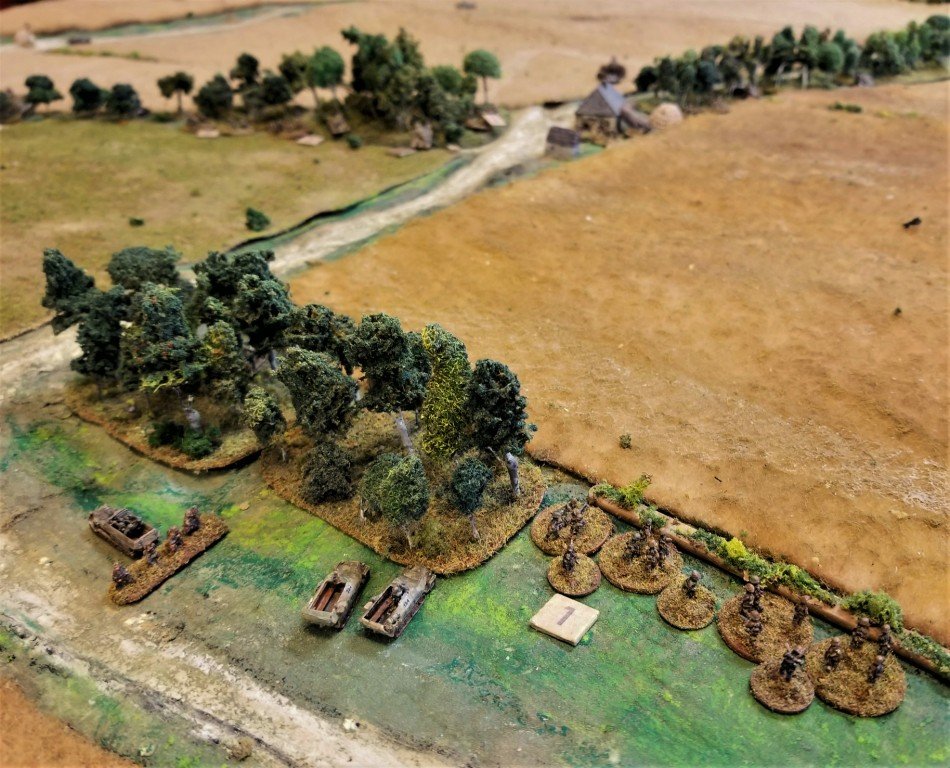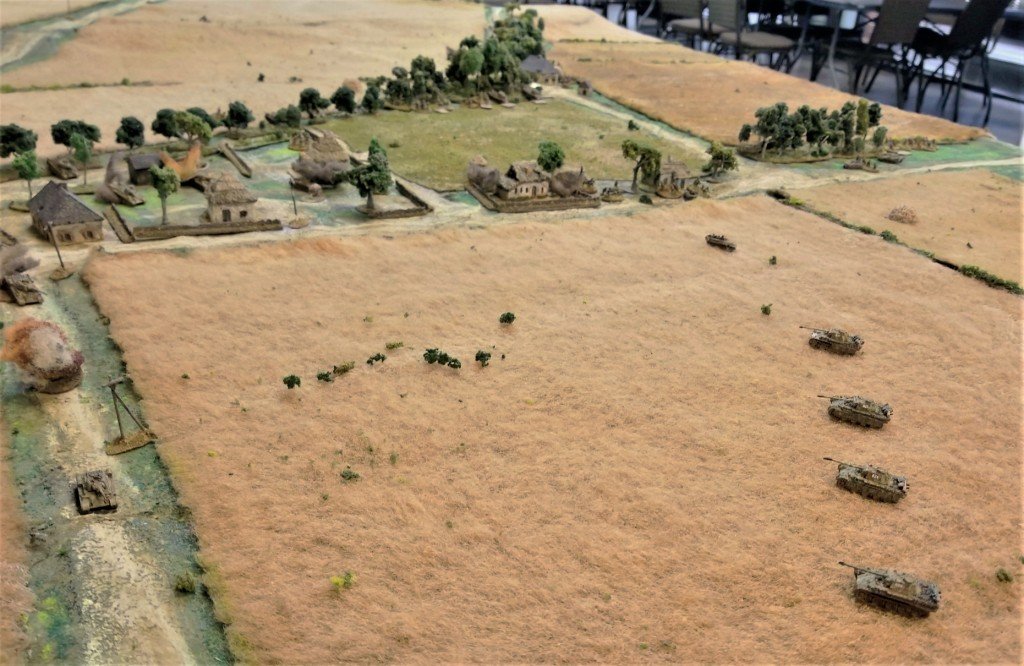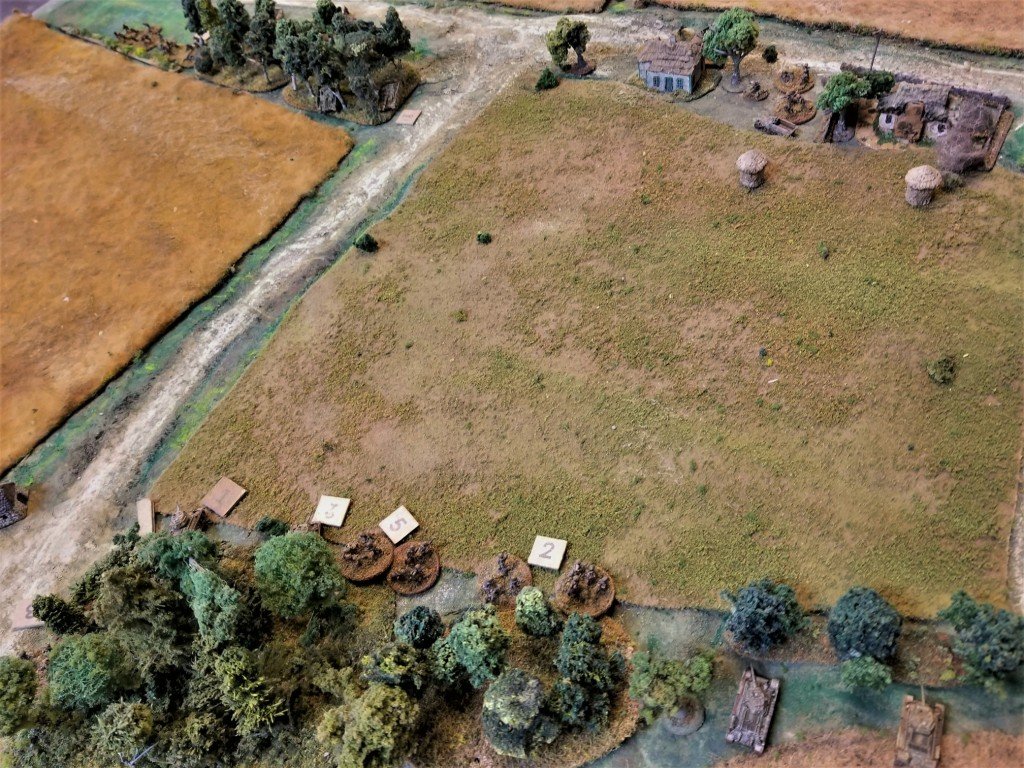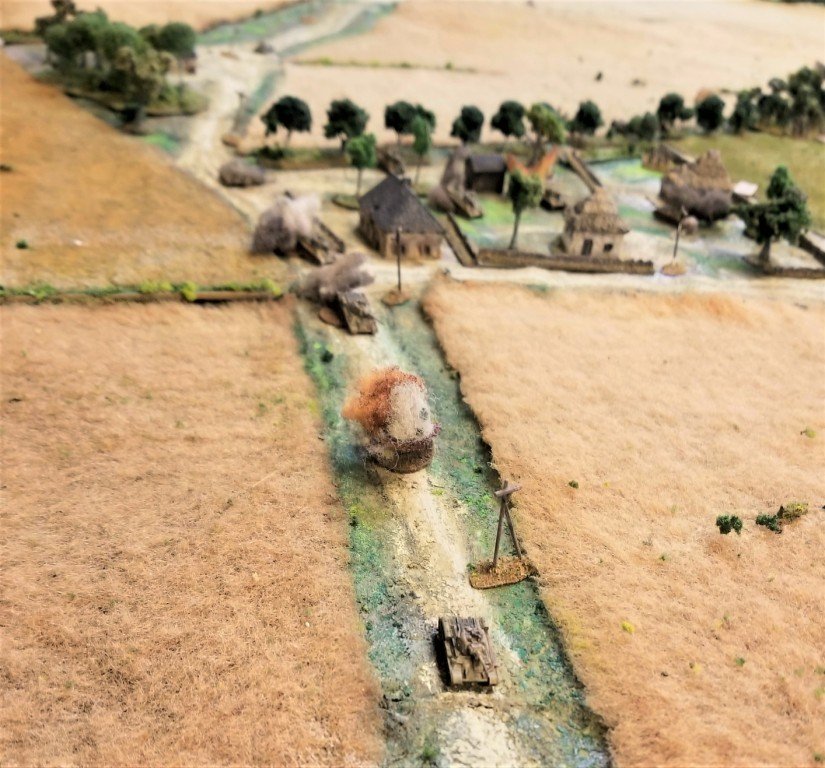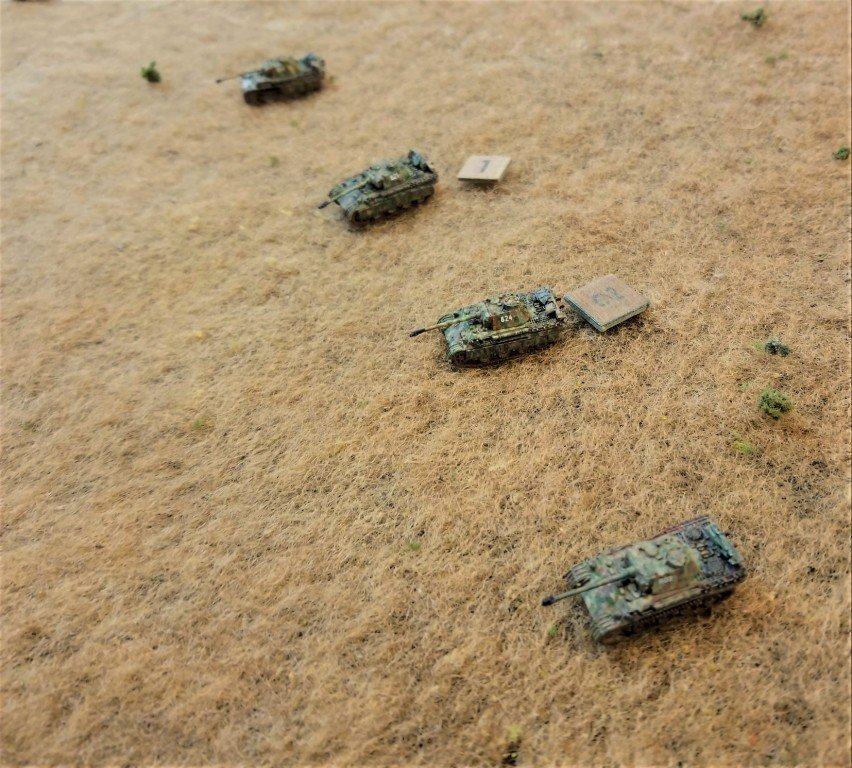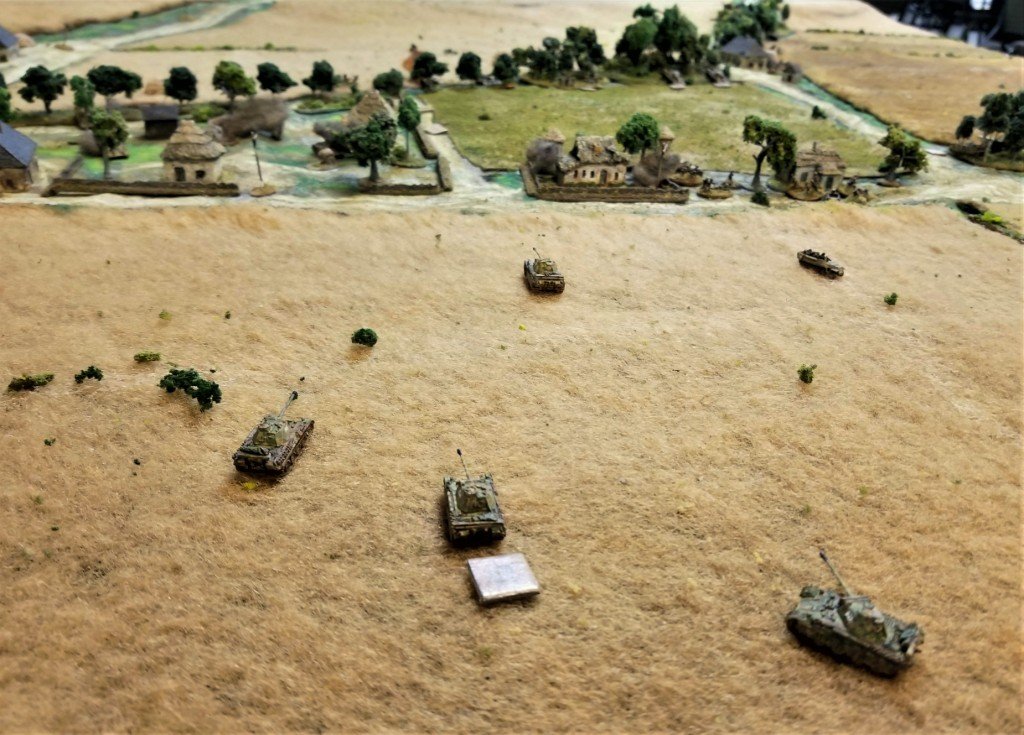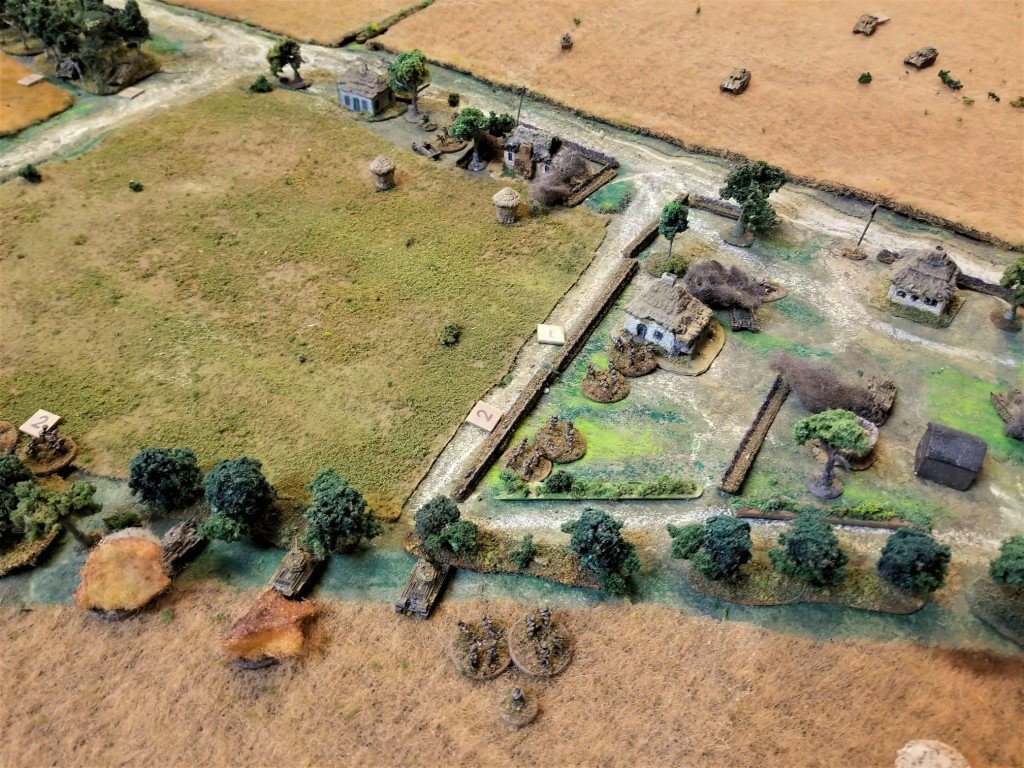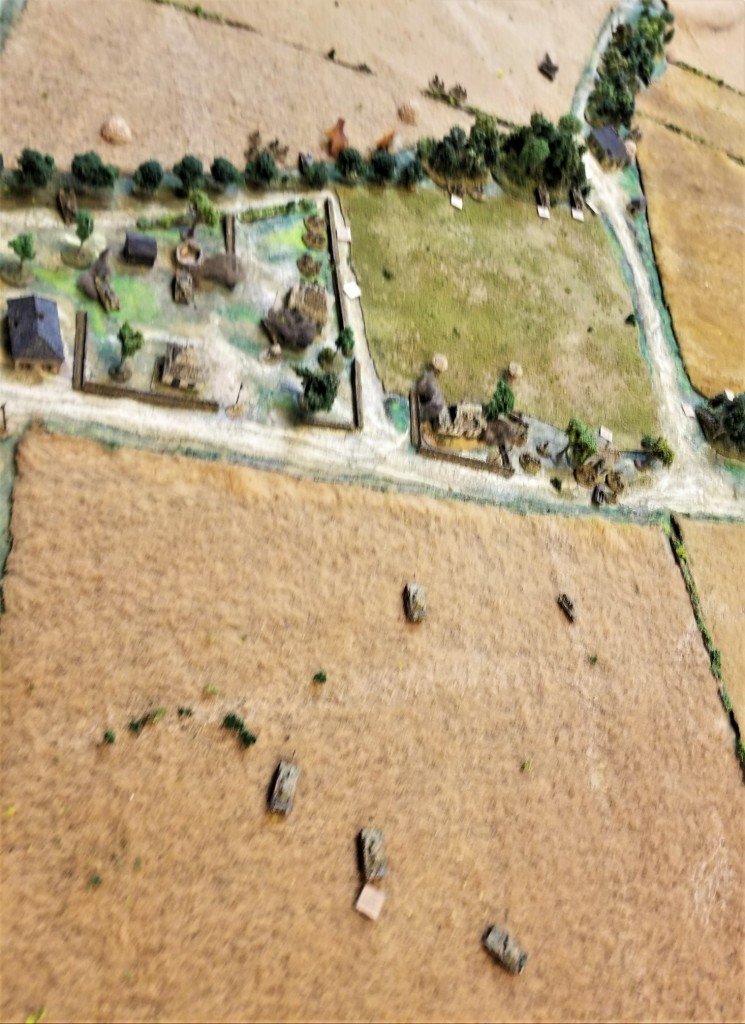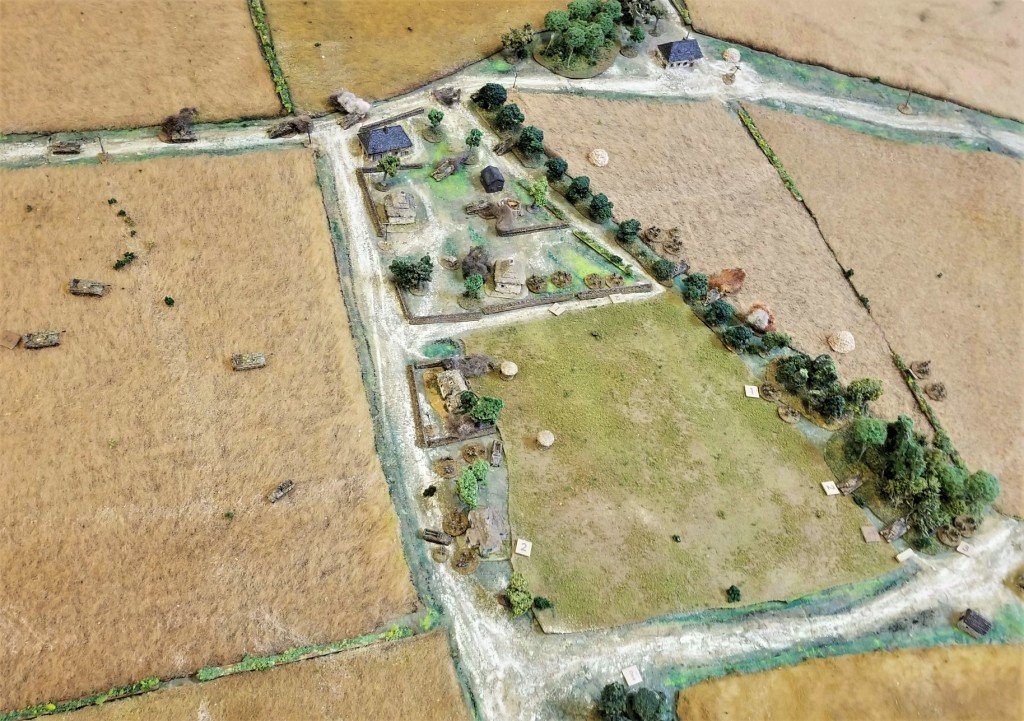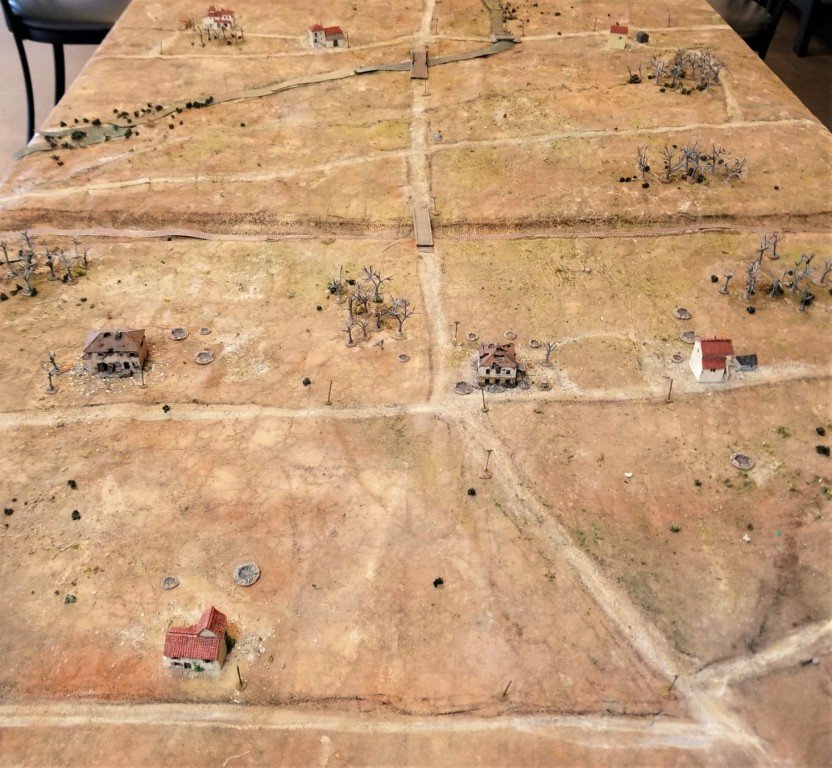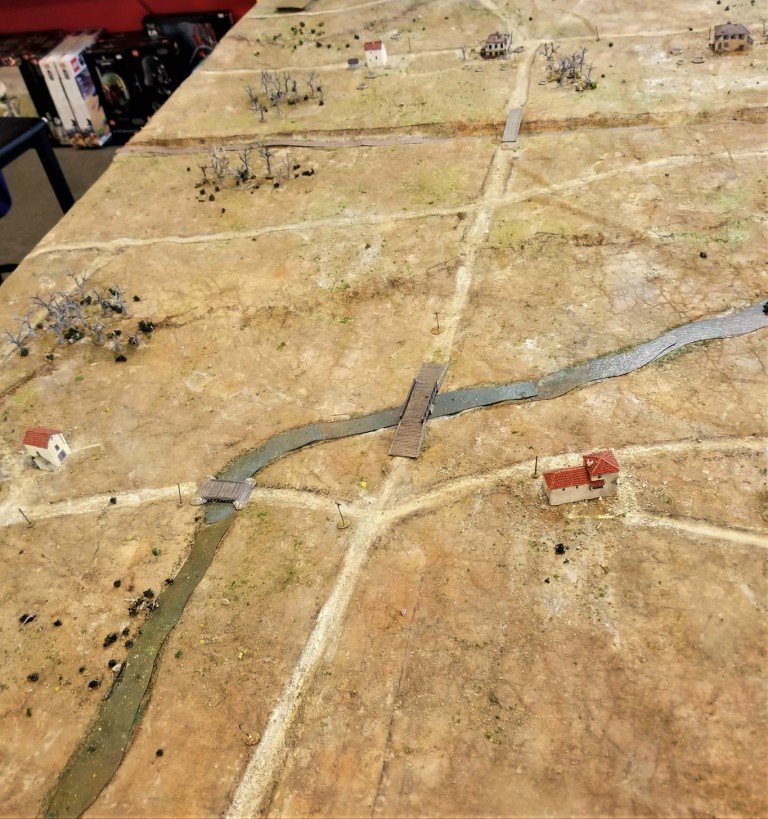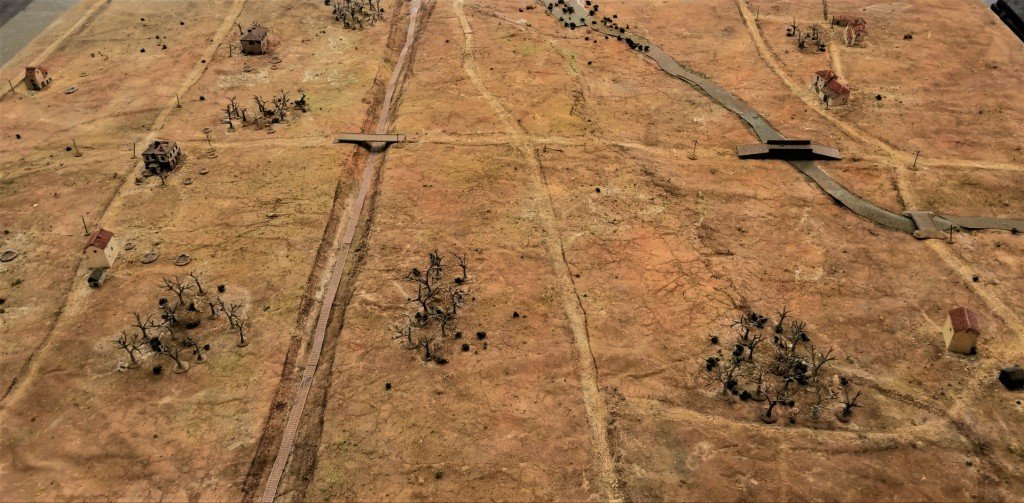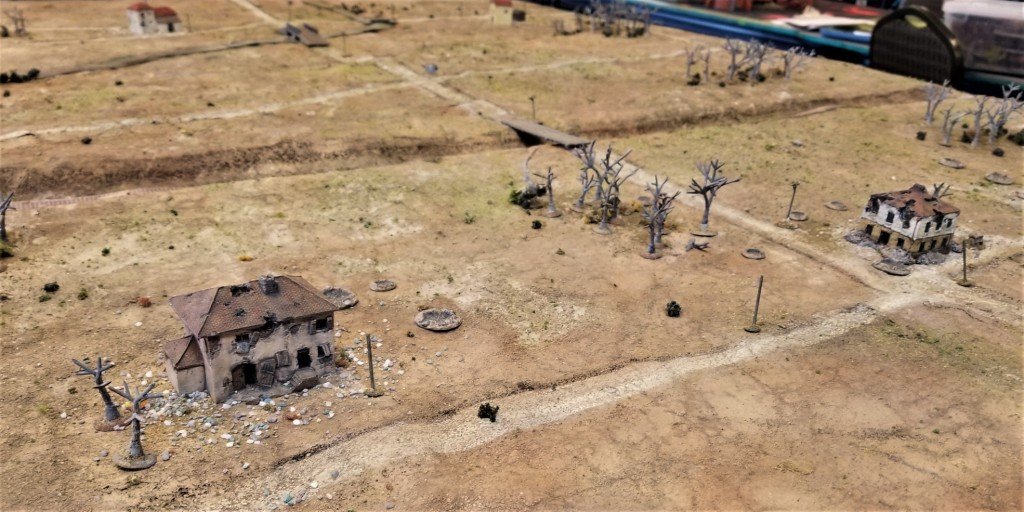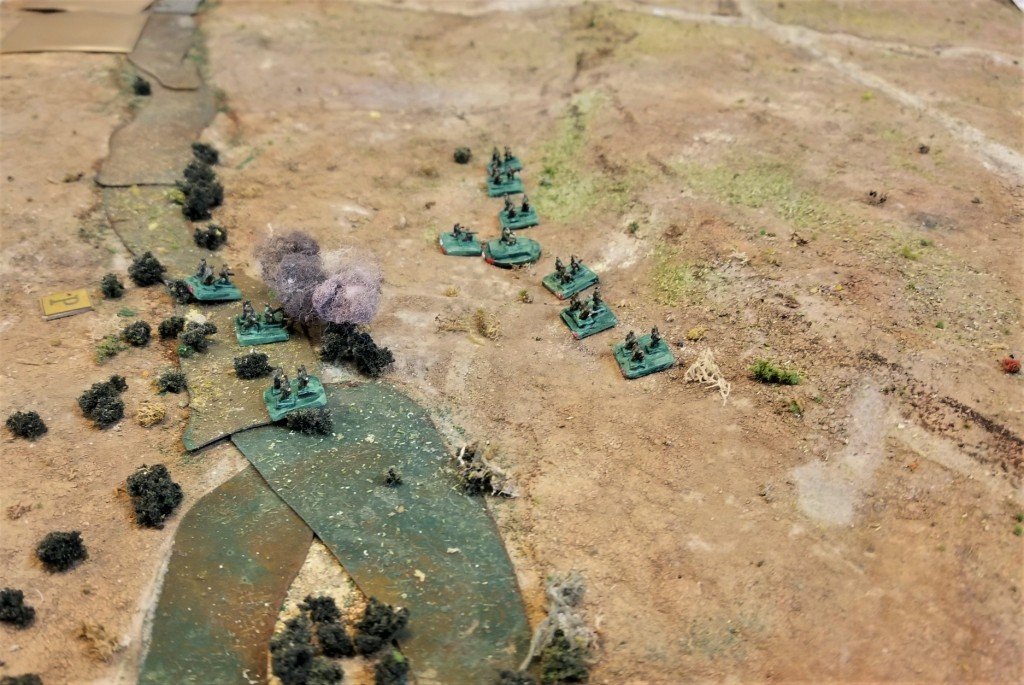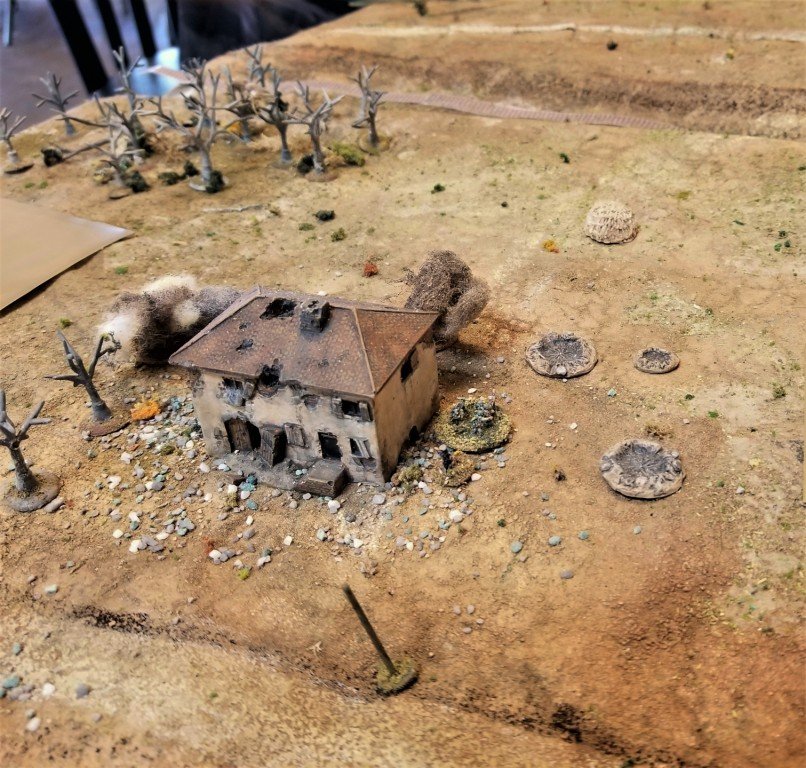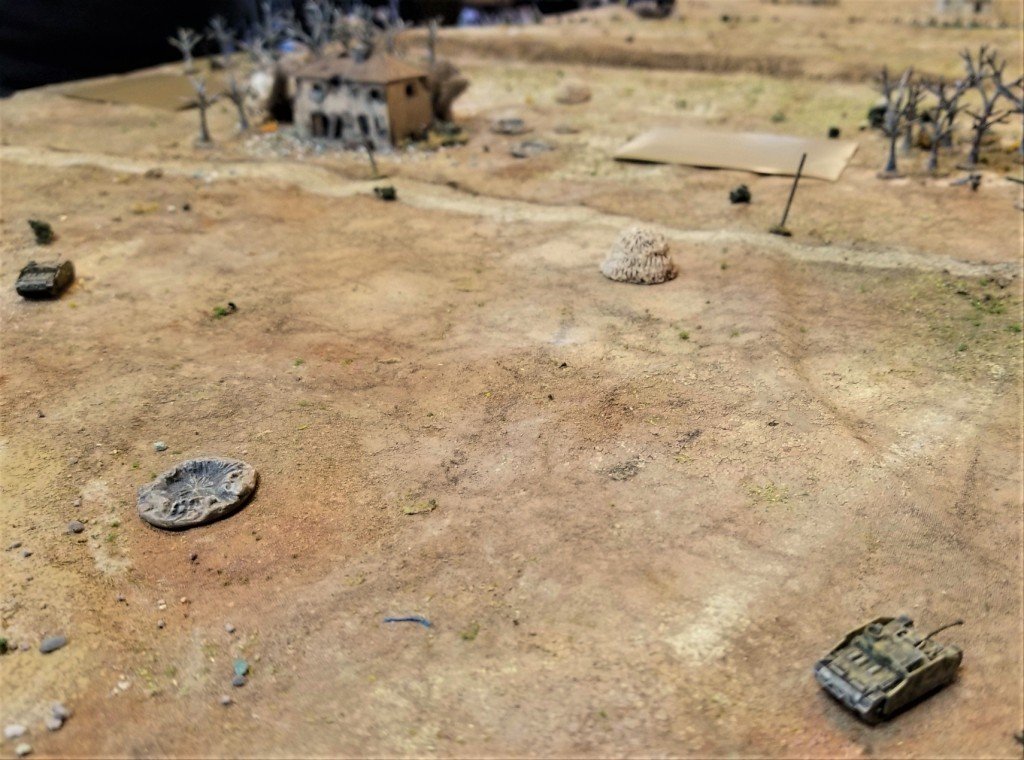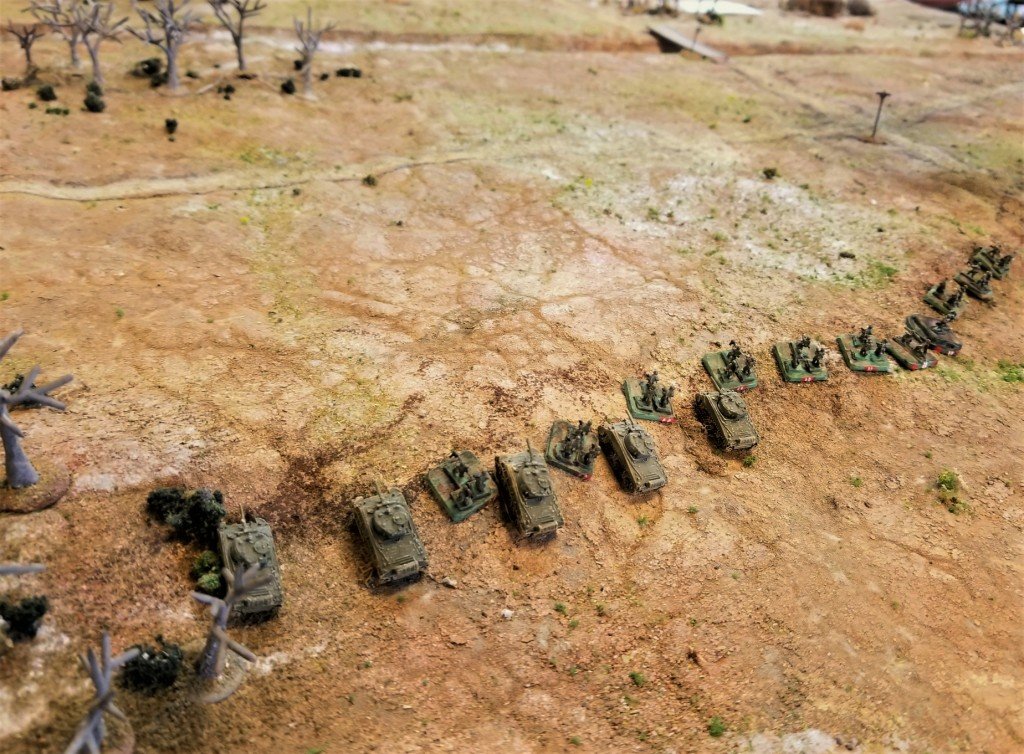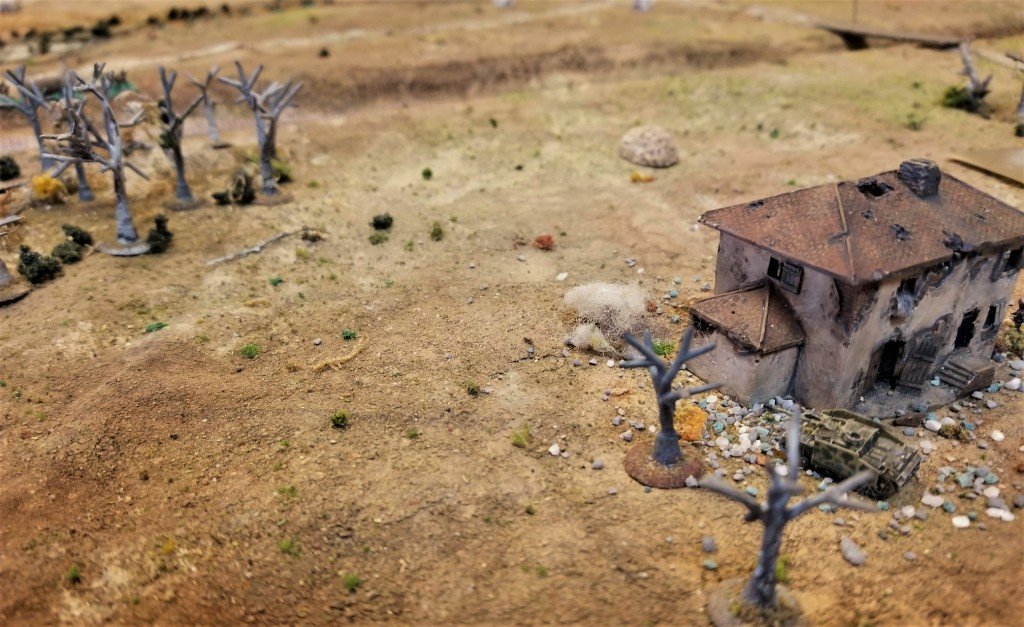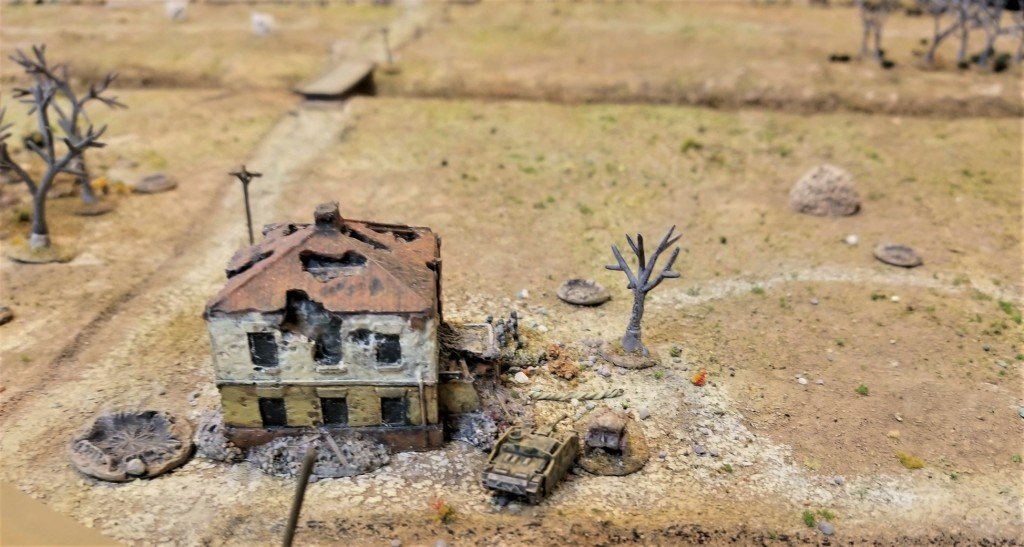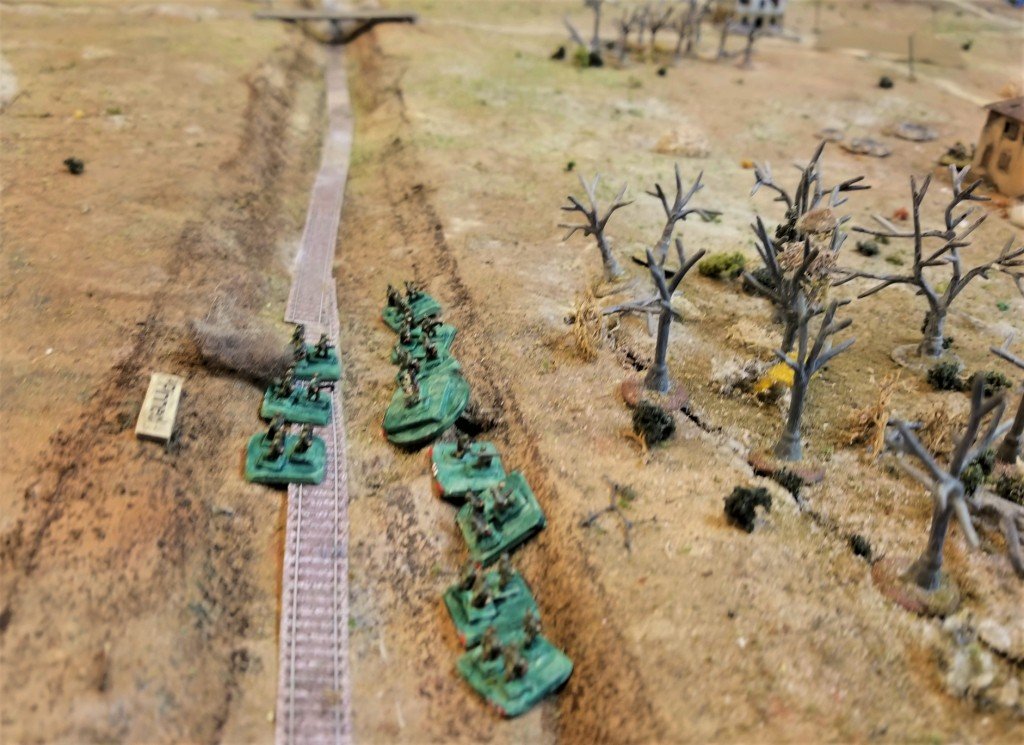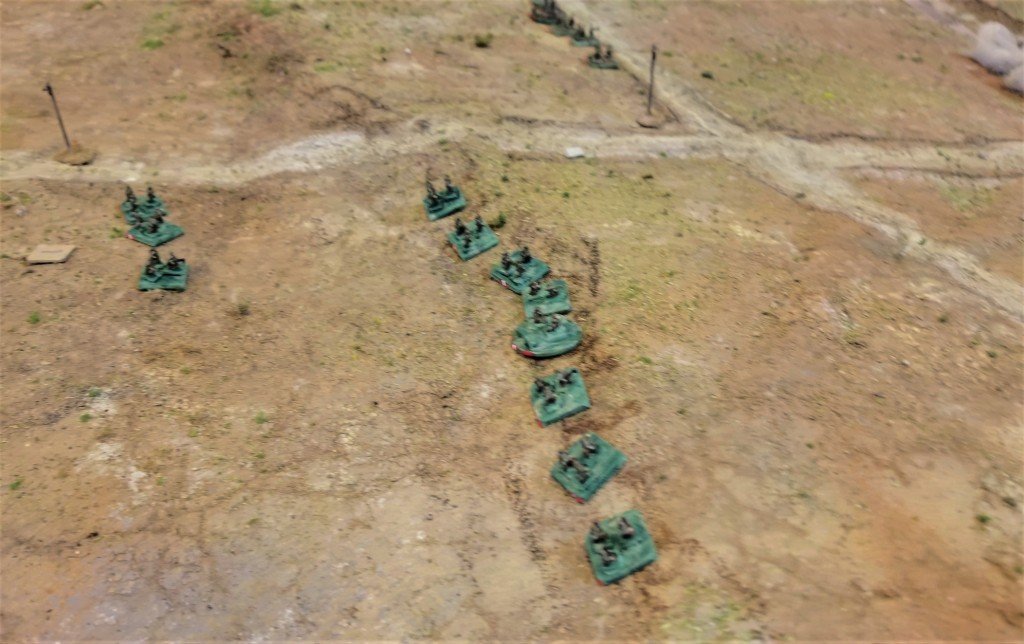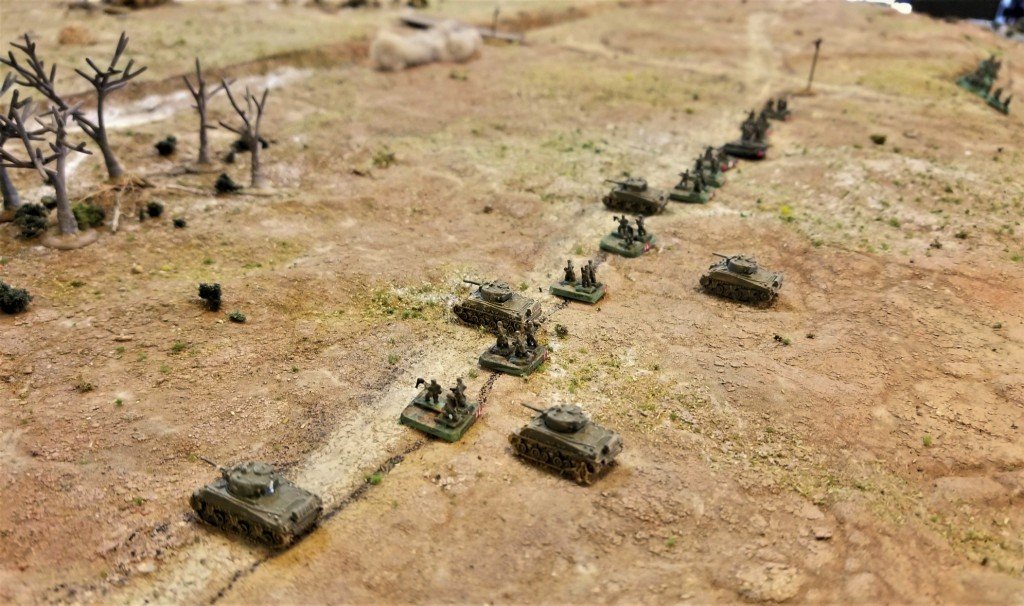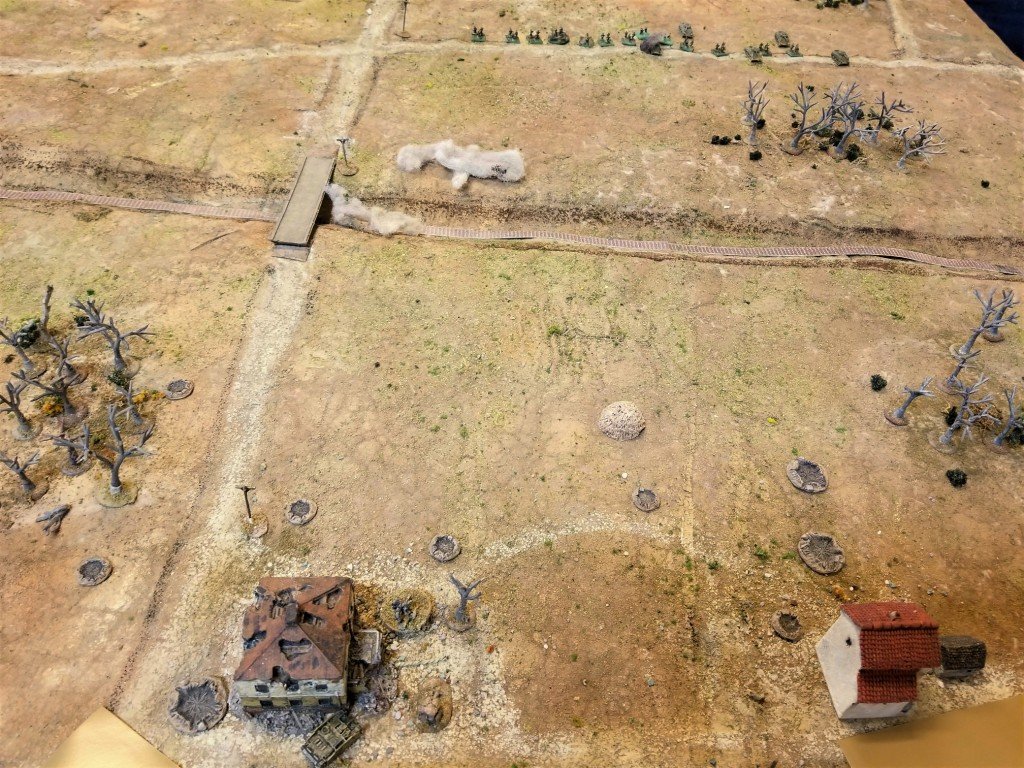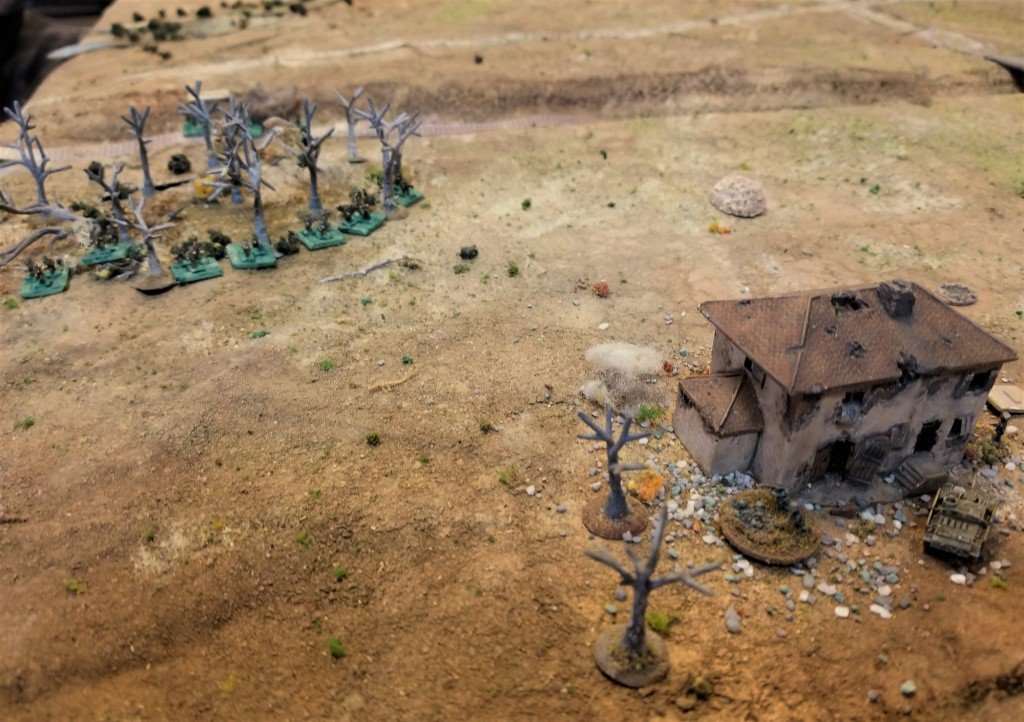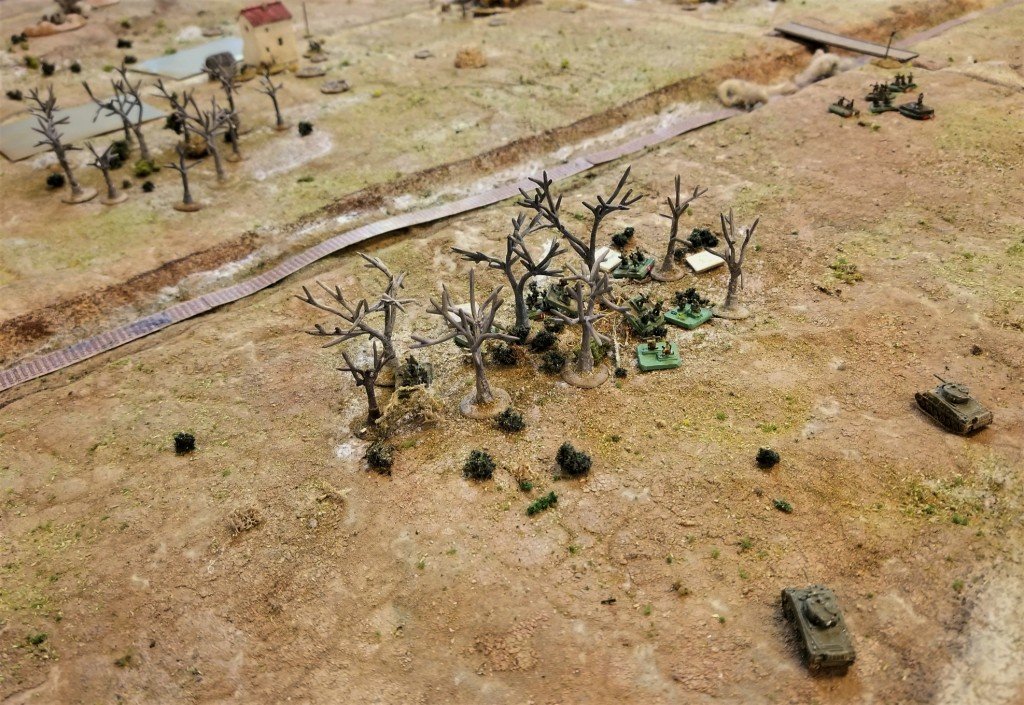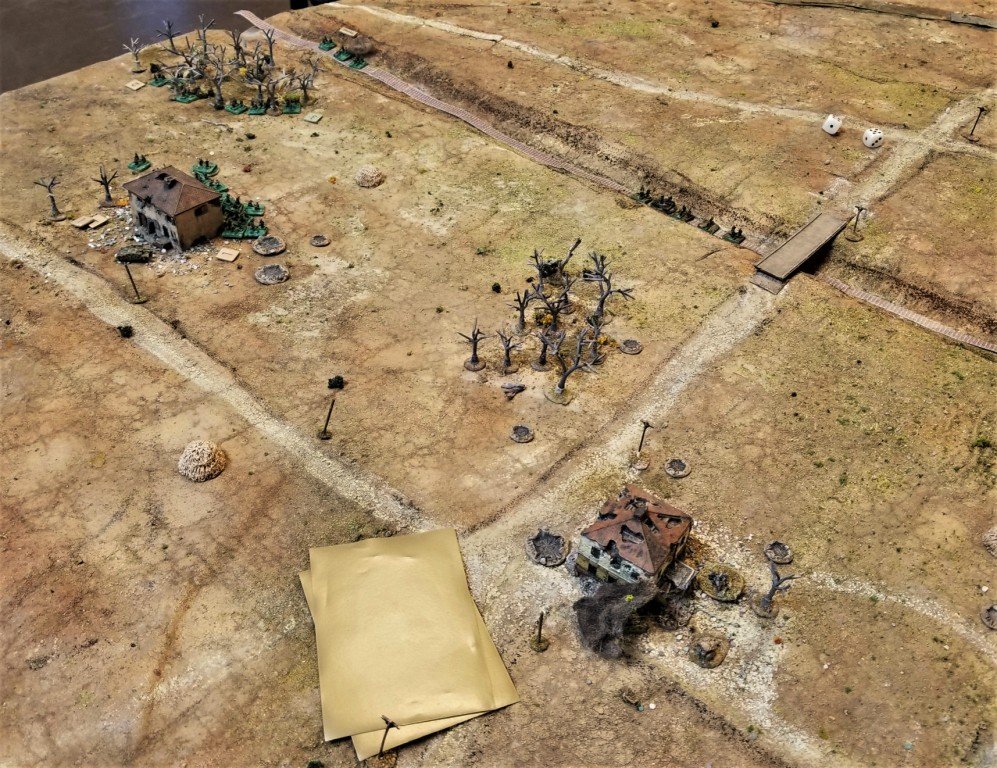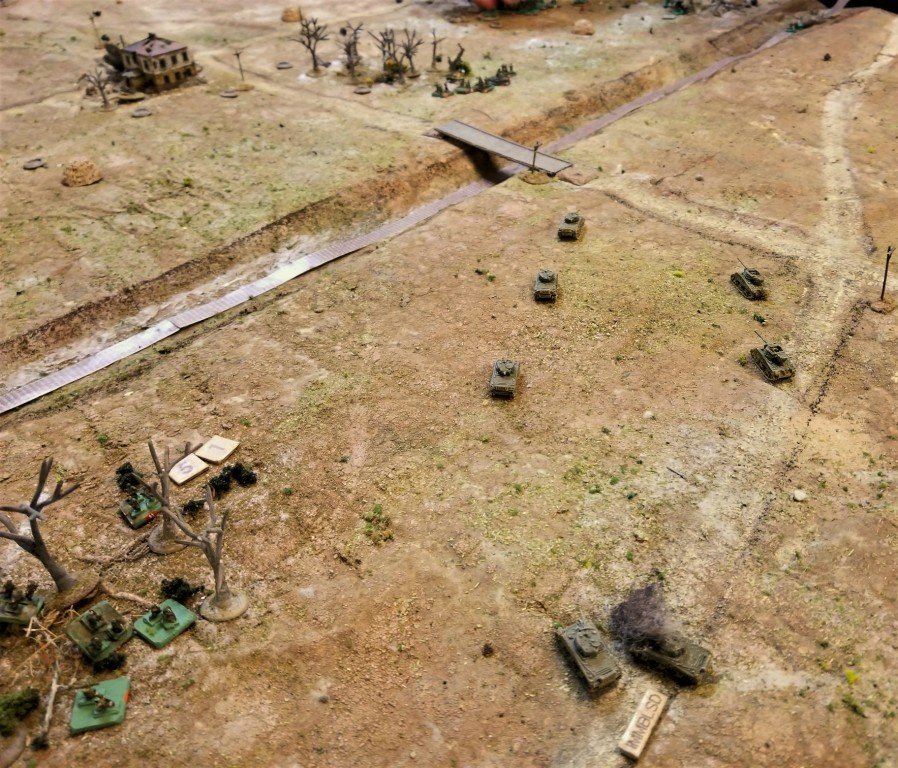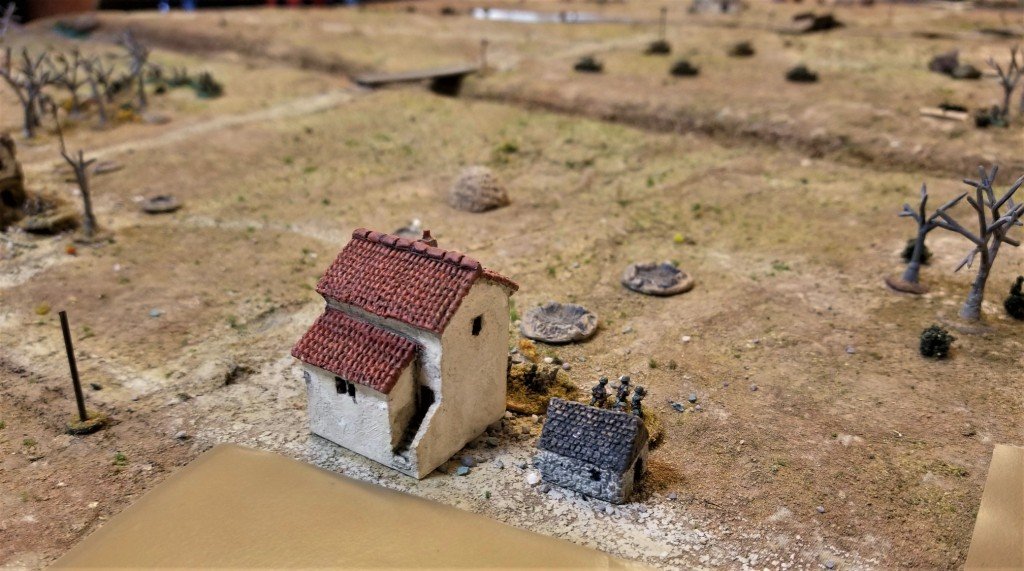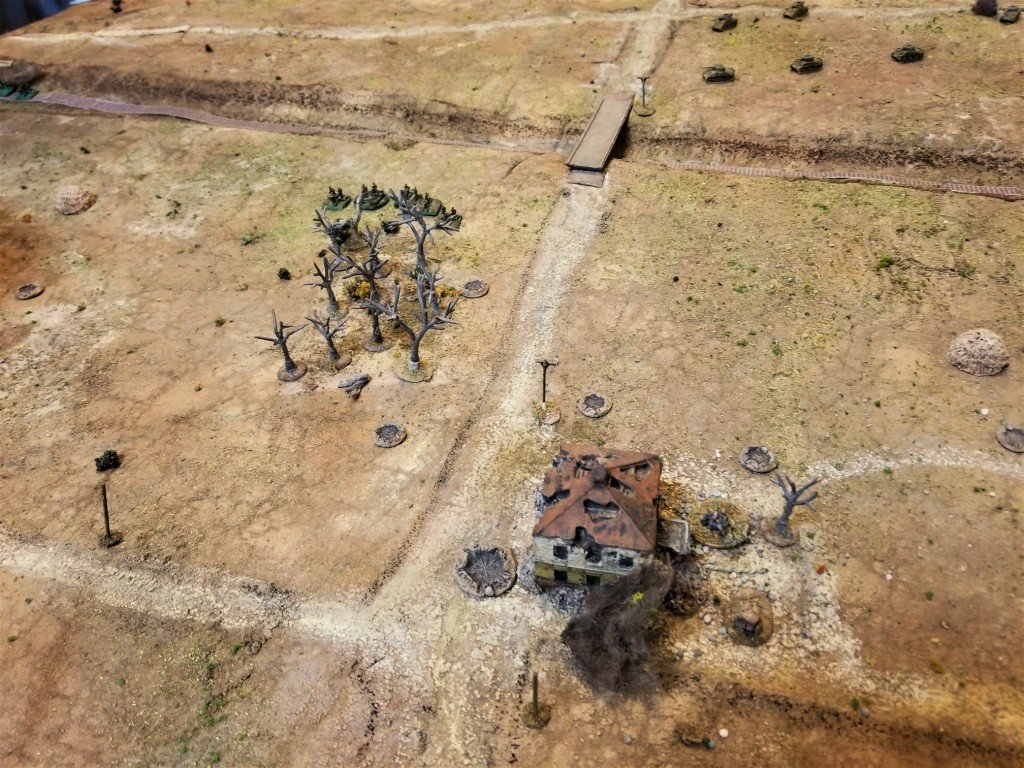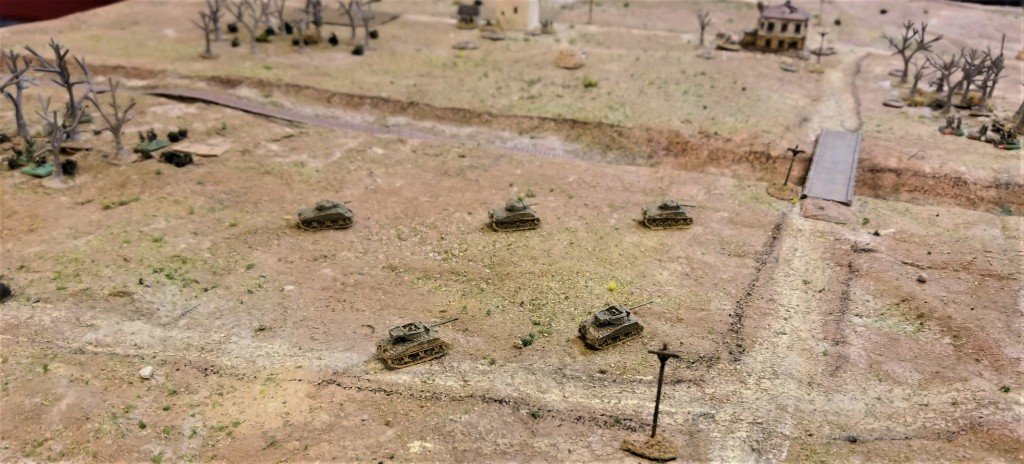Sunday saw myself and Philip pitch up at Des’ shed o’war to play the second game in his set of linked battles of a (fictitious) British attack on German positions north of Caen in 1944. I had played the first game against Des a few weeks ago but I stupidly forgot to charge my phone so couldn’t take any pictures hence the lack of report on it! Figures and models are all 15mm from Des’ stunning and impressive collection and all the lovely terrain is his as well. Rules used are our dice activated version of IABSM -I Aint Been CoC’d Mum, as seen in the 2019 Lardies Annual.
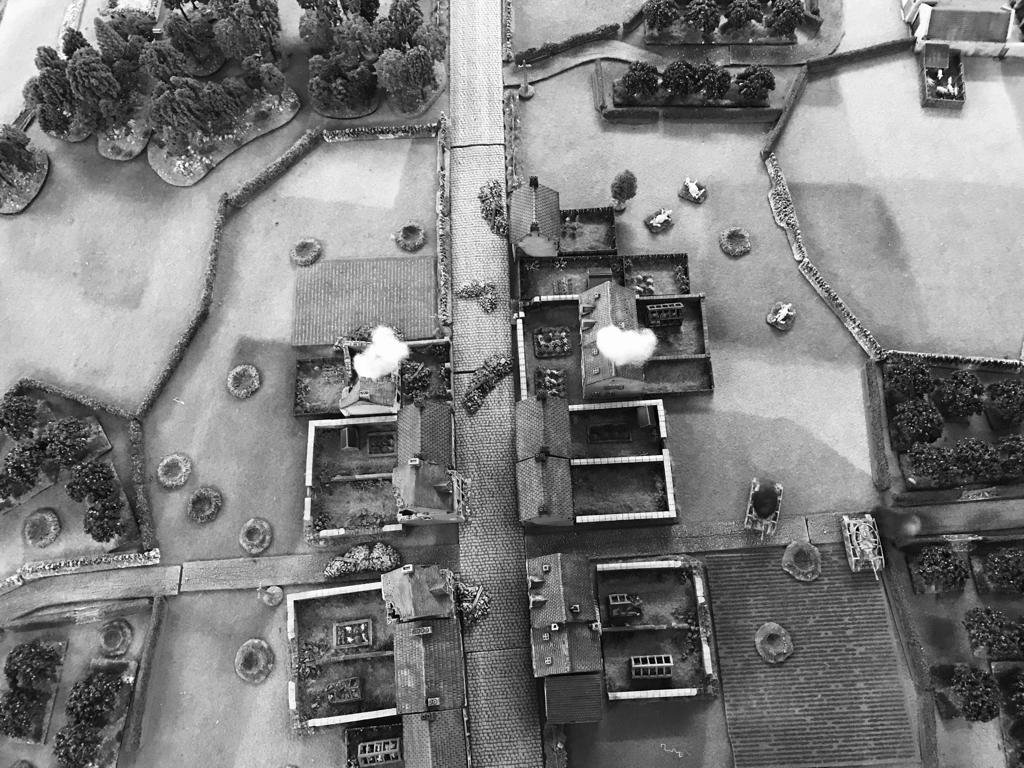
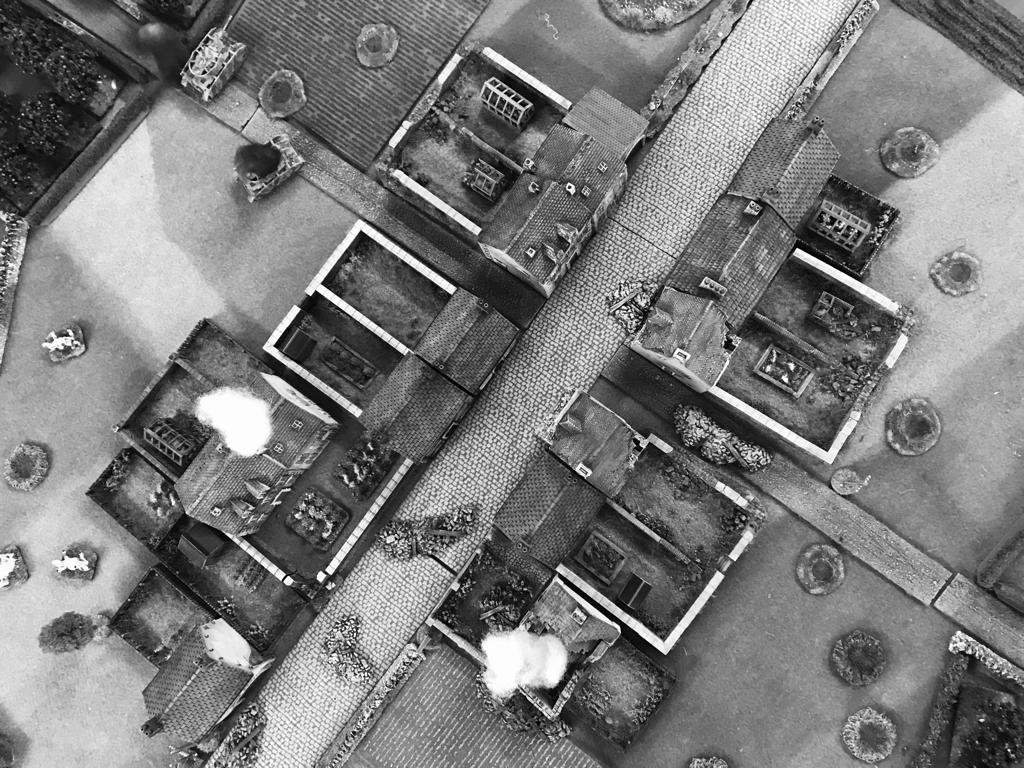
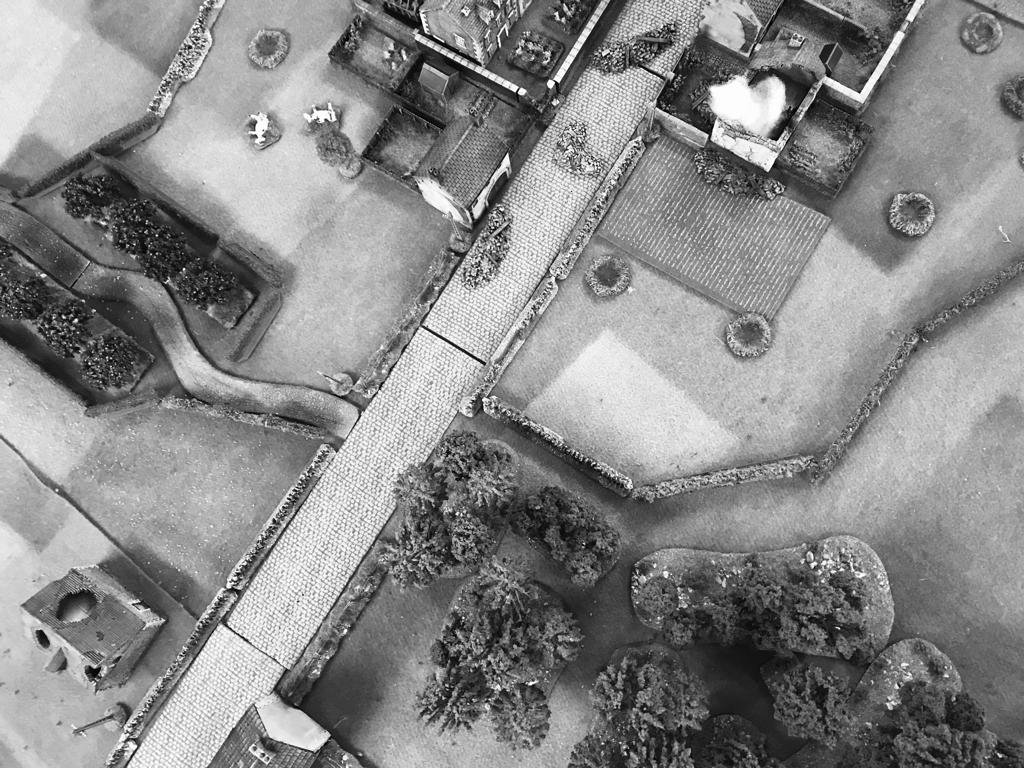
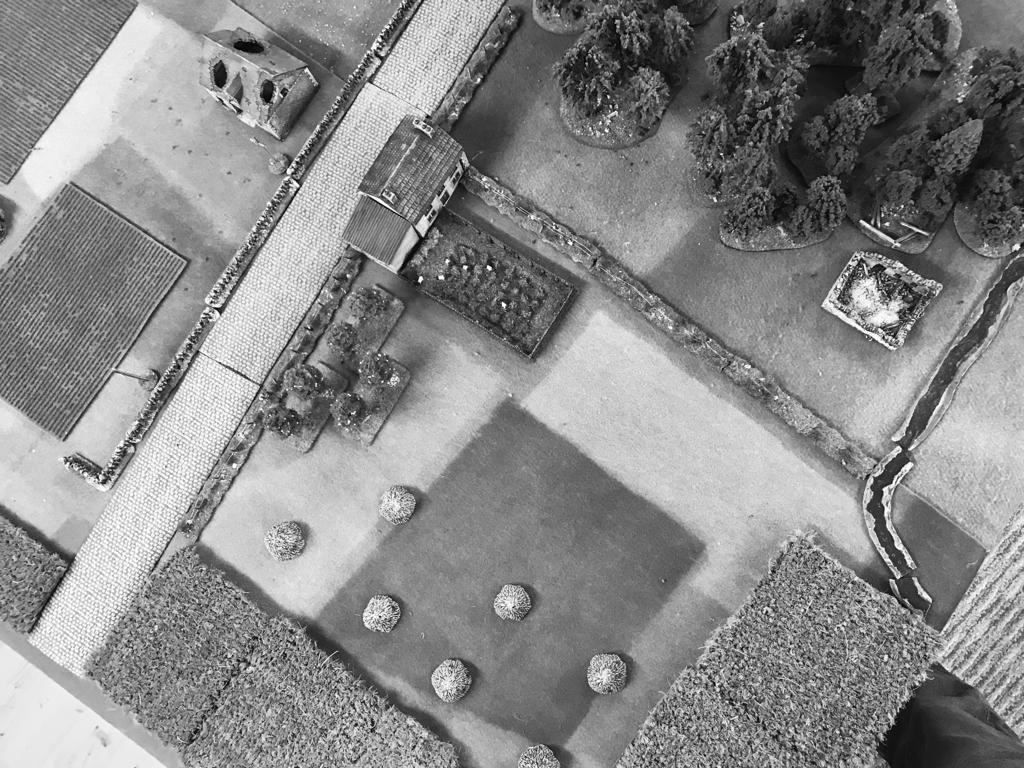
‘O’ Group, Btln. HQ, 14 Essex Regt, just North of Plessy:
“Right then chaps, listen in. Yesterday ‘A’ Company tried to break through and suffered a bloody nose from some very determined defenders from Kampfgruppe Darchin. However they did manage to write down the Jerry forces (we expect the defenders to be short at least one platoon and definitely 2 Panzer IV’s) and secure a good start line for todays attack running through the two orchards and the village. 1 Platoon from A Company has remained in the north part of the village and will be under command for today’s action, you will also be supported by battalion 3″ mortars and a troop of Churchills from Brigade’s attached Squadron, I have ordered up a stonk from the Gunners too which will be your cue to get the ball rolling. Your task is to take the remainder of the village and breach any further defences to open the road to Caen. I’ll leave you to co-ordinate with mortars and tanks. Good luck.”
‘O’ Group, C Coy. 14 Essex:
“Alright then everyone it’s our turn now. When the artillery starts to land on the orchard behind the village I want 9 Pltn to push forward a small patrol from their position in the right hand orchard through to the end of the orchard across the road to try and spot if the Jerries have anything in the Farm complex or along the hedges between there and the orchard that is getting stonked, once patrols are back then to advance through orchard, take any enemy under fire and develop attack either on the farm or into the central orchard beyond the village. 7 Pltn is to move through the orchard it is located in on the left to the end nearest enemy and then locate any enemy in the wood to the front. Once located enemy is to be engaged with fire then assaulted if feasible. 8 Pltn is to deploy behind 7 Pltn and pass through on my order to carry on the attack on the left flank which will be the main effort. Once they are moved through then 7 Pltn will act as Coy reserve. 1 Pltn, A Coy is to clear the rest of the village and then will be deployed to either support the attack on the woods or to the right flank. Troop of Churchills to be deployed as I see fit to either shoot infantry into positions held by enemy or tackle any armour. Once the line of the wood to the farm has been secured then await further orders. All clear? Good. Questions?”
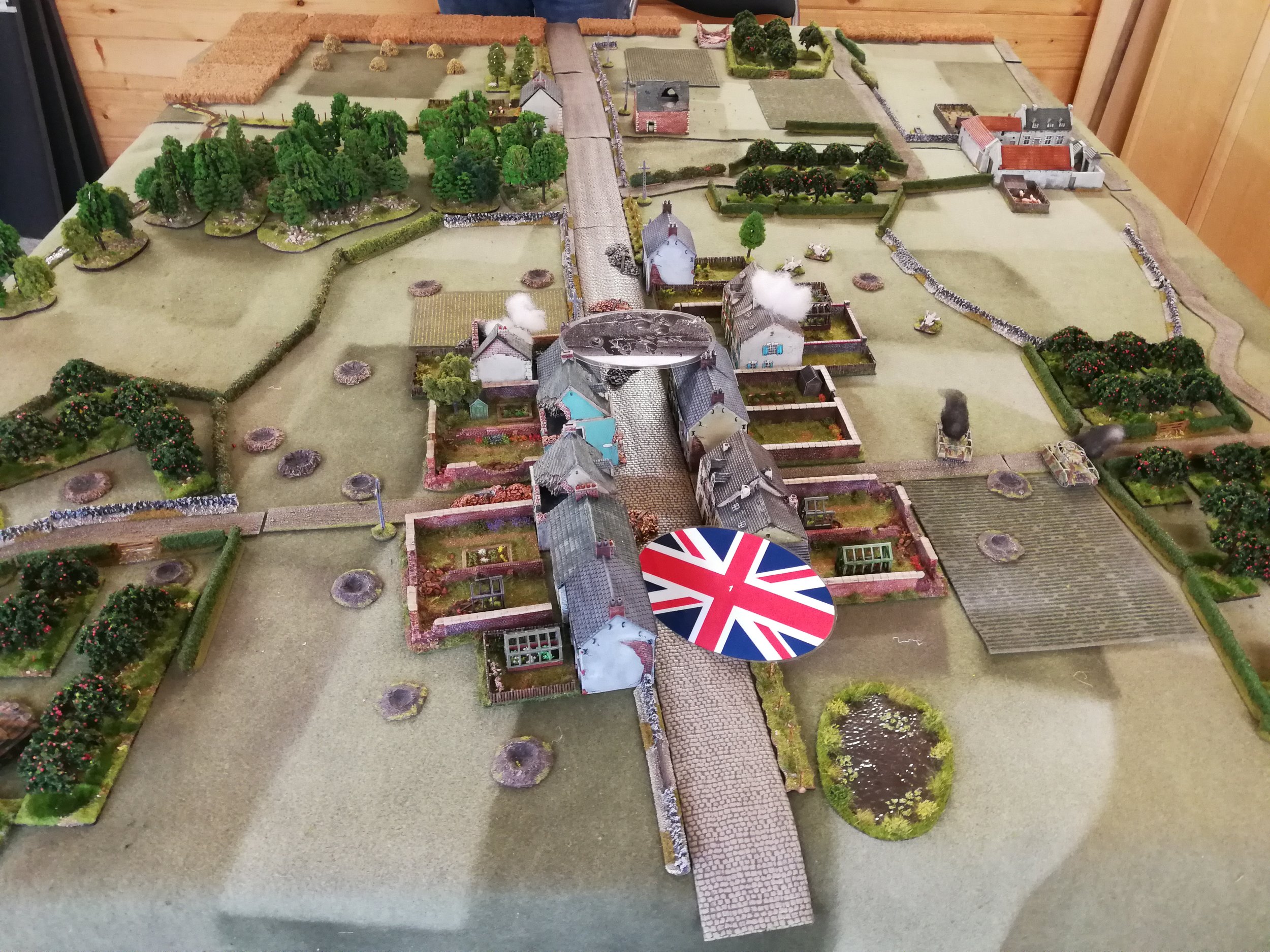
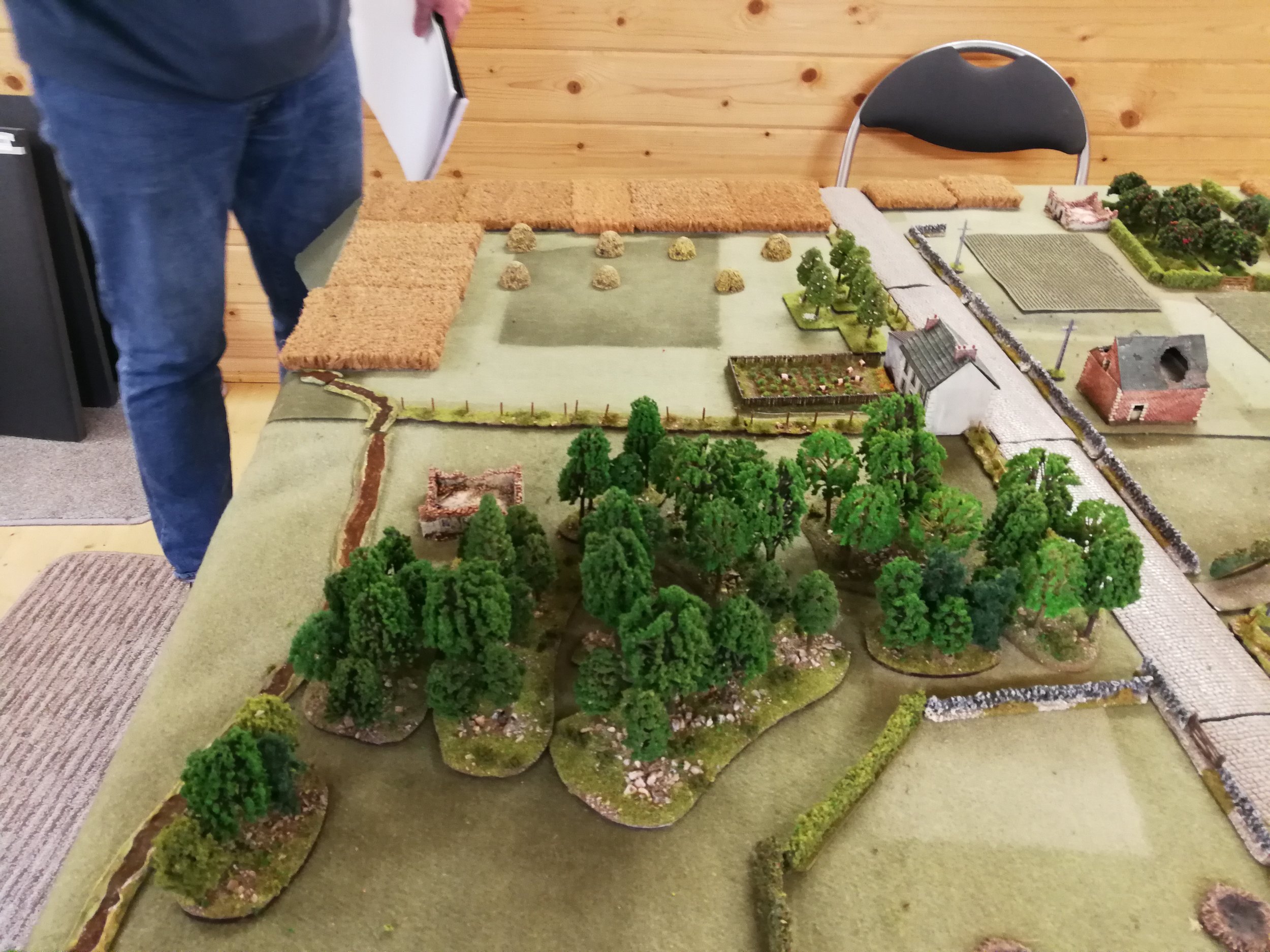
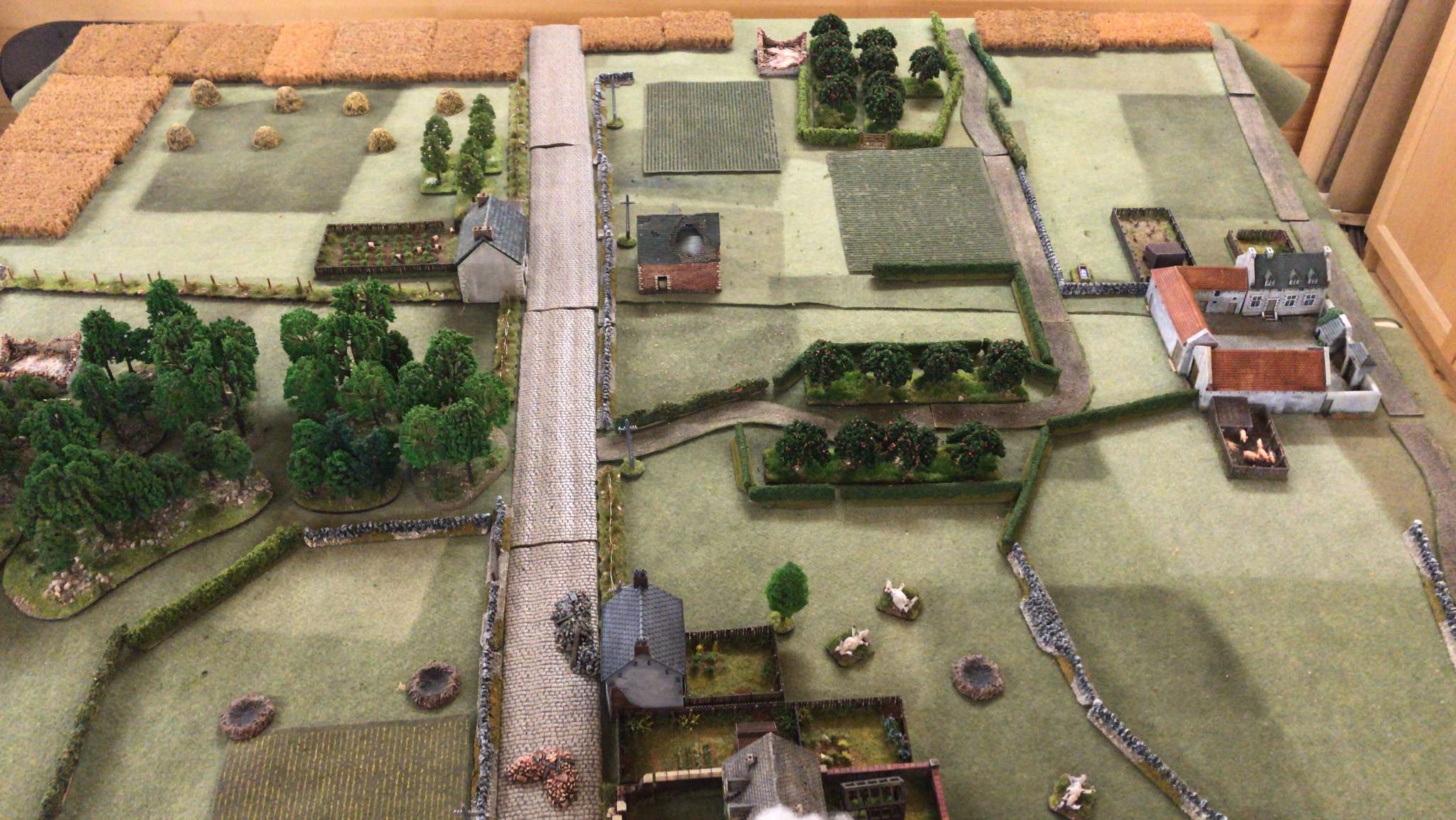
And so we began…
There was a German blind in the village immediately to my front which I quickly scouted out to find it was nothing more than a few stay behinds making noise as cover for the enemy to withdraw. With that knowledge I started moving 1 Pltn forward all the time trying to spot any nasty surprises in the wood to the left. At the same time I moved my own patrols forward on the right (dummy blinds) to try and spot any Germans in the farm or in the vicinity of the central orchard. As both dummy blinds spotted nothing I then moved 9 Pltn forward until they reached the end of the orchard where they finally were fired upon by the survivors of the enemy section that had withstood the pre-game stonk of the orchard. They also drew the attention of a Panzer IV lurking next to the farm! 1 Pltn had also spotted a Panzer IV lurking in the wood and both platoons swiftly got their 2″ Mortars busy smoking the enemy tanks to block their view. 1 Pltn quickly dashed for cover in the houses and gardens to avoid the incoming HE fire from the tank but also sent their PIAT team forward in a dash to the garage building at the end of the village. This building looked like it could be used to get a tricky shot away on the tank in the woods and 216 Jenkins on the PIAT quickly made his way up stairs and to the window. Having a spring action bomb thrower came into its own as he managed to get a couple of shots away (try doing that indoors with a Bazooka or Panzerschreck!) which didn’t do any damage but this attention and the smoke blocking its view caused the tank to withdraw. Meanwhile 9 Pltn was quickly winning the firefight with the Germans in the central orchard whittling the defenders down quickly.
Next up 7 Pltn advanced through the orchard and spotted an enemy AT gun and immediately took it under fire from 2 sections and the platoon 2″ mortar, pinning the crew and causing casualties. About this time too the Company CO along with the 3″ Mortar FOO moved into the rear of the village and immediately got on the blower to bring down fire on the German section in the central orchard to help nullify the threat there and to help the attack progress. The mortars came in quickly and bang on target (a feature of the day happily for me!) and with the combined efforts of the fire from 9 Pltn and the stonking pretty soon the defenders were all killed with only their NCO seen legging it for safety. Now that this position was cleared 1 Pltn was ordered up out of the village to move towards the vacated enemy position. I also called the Churchills forward to advance between the village and 9 Pltn on the right as I now knew the location of the enemy tanks and thought this position would be a good one to hold them in before committing them further.
Over on the right 9 Pltn pushed a section along the hedges towards the farm to check it out which was countered by the Germans moving their Panzer IV across behind the farm on our right flank and firing on them, which was quickly countered by a smoke round from the 2″ completely blocking it’s view causing it to withdraw and allowing 9 Pltn to move the PIAT team forward under its cover. With that threat dealt with 9 Pltn then advanced the remaining 2 sections out of the cover of the orchard aiming for the hedges to the left of the farm which unfortunately wasn’t as empty as I thought and erupted with the terrifying sound of a MG42! The resulting fire decimated one section and caused casualties in the other one supressing them both. However fire from the third section lining the hedge, the platoon mortar and supporting fire from the tanks and 1 Pltn quickly eliminated this new threat and the lone survivor was seen abandoning the MMG and making for the rear.
Meanwhile, over on the left flank, 7 Pltn had slipped a section out of the orchard tasked with working around the flank of the enemy AT gun which was still being shot up by the rest of the platoon to assault what remained. Unfortunately they instead were taken under brutal close range small arms fire from an enemy infantry section located just inside the treeline. Although the section suffered terribly the enemy also suffered from a withering fusillade from the remainder of the platoon which quickly either killed or routed the ambushers. With the threat of the enemy infantry gone and the AT gun also neutralised 8 Pltn pushed quickly through 7 Pltn’s position and deployed ready to push through the woods with 7 Pltn now moving into reserve as per plan. 8 Pltn were soon in action as their left hand section made contact with the retreating crew of the AT gun and much to everyone’s surprise came off worse in the ensuing close combat! Then the tank that had been in the wood earlier appeared at the rear of the wood and started lobbing very inaccurate HE shells about (poor Philip had terrible luck doing this all day much to my amusement). 8 Pltn quickly pulled their men back and the shout went up “Bring up the PIAT”, and with that the plucky team dashed forward through the trees but couldn’t quite get into a position to get a shot off. Luckily for them though the German tanker ordered his vehicle to reverse and the driver gave it a bit too mush and the metal beast presented itself side on, the first shot from the PIAT missed but the team worked quickly and got another off which slammed into the tank and caused it to brew up immediately! With the enemy seemingly cleared from the wood 8 Pltn then sorted itself out into formation to await further orders.
And then the tank battle started. After being thwarted in its attempt to chew up 9 Pltn by judicious use of smoke the Panzer IV on our right moved round to the left of the farm again and started to engage the Churchills and a tank duel quickly started which seemed to take over the battle for a good while, and resulted in one Churchill being knocked out but the Panzer IV suffering slightly from non-penetrating hits that caused it to briefly pull back out of line of sight of the remaining two British tanks. This was also when a third Panzer IV revealed itself and lurched forwards making for the right of the wood and looking to insert itself between 8 & 1 Platoons whilst using the orchard to cover itself from my tanks. Once again the shout went up for the PIAT and the ever ready Jenkins from 1 Pltn rushed forward into the road through the orchard and with his last 2 rounds dispatched the advancing Panzer. With the death of this tank the Churchill troop commander ordered his other surviving tank to sweep round the orchard along the main road to try and take the remaining Pz IV in the flank either dispatching it themselves or in concert with his tank. Sadly this wasn’t to be as the Germans had a Jenkins of their own and it was ambushed by a hidden Panzerschreck team as it neared the burning wreck of the recently brewed up panzer.
Taking stock of the situation I knew that I had wiped out one enemy section, one was reorganising and badly shot up in the cornfield on the left past the woods, one MMG and an AT gun were also kaput and 2 tanks were knocked out but I knew the enemy must still have some troops left so I decided to soften up some possible locations before renewing the attack. I had already been mortaring the wood to the rear of the battlefield as I figured that is where I’d place an AT gun if I was defending but now decided to switch fire to the two buildings either side of the road just past the wood. After I had stonked this position for a bit I was going to push 8 Pltn through the wood to take the buildings and hence secure the exits from the village. 7 Pltn were to get ready to advance through 8 Pltn once this was completed whilst over on the right 9 Pltn, whose two sections still stuck in the open were now taking harassing fire from the remaining panzer, would try to go for the PIAT hat-trick whilst the remaining Churchill moved up to help. 1 Pltn was to wait for the last Pz IV to be taken care of before moving into the central orchard and setting up a base of fire to help 7 & 9 Pltns to advance further.
Unfortunately for me my mortars, which had been spot on all day, now decided to go way off target and the stonk on the two houses landed way off over on the left flank landing on the shot up enemy section in the cornfield. More misfortune followed as the two sections from 8 Pltn that I was moving up under cover of the barrage stepped out a bit too lively and just broke cover from the woods triggering an ambush by an enemy section lurking in the flowerbeds, the devastating close range fire saw the PBI take casualties and they fell back to the edge of the wood. Luckily the mortars were dragged nearly back onto the original target and the ambushing German section now found themselves under the fire of the battalion mortars. However this didn’t mean the end of the suffering of 8 Pltn as a MMG configured MG42 now opened up from the edge of the cornfield further piling on casualties and causing the 2 sections to break back through the woods. While this sanguinary scene was playing out over on the right 9 Pltns PIAT team had worked its way along the edge of the farm through the pigsty and was ready to fire a shot off on the last panzer. Philip was now fully suffering from PIAT terror and switched the tanks full attention on the plucky team killing one of them and causing the survivor to fall back into the pigsty (insert own jokes here!). What this did do, however, was to allow my Churchill to move up into a position to take the German tank under fire again which it did, and whilst hitting the target didn’t cause it to brew up it did convince the already rattled crew to bail out and head for the rear.
With this action we decided to call it a day. Philip’s lads had put up a very spirited defence causing a lot of casualties to my lads with both 8 & 9 Platoons suffering a section+ losses each and my supporting Churchills down to 1 tank too. However with my mortars now on target and causing casualties to the Germans in the flower beds and the largely intact 1 & 7 platoons ready to move forwards once the mortars had finished their work we said that the Germans would have withdrawn and the Brits would have consolidated on the line they held from the far edge of the wood, the central orchard and along to the farm. So the scene is set for the next battle when B or D Company take over but will probably be facing a fresh German unit.
Many thanks again to Des for putting the game on and for Philip for being a cracking opponent as usual, it was a tense but fun affair with a grate narrative and some fantastic bits of action. Also I do have to say again what a joy it is playing on such a terrific table, top work Des!
Iain Fuller


